
Germans are well known for complaining about everything. Don’t believe them when they grumble about their trains. Germany has one of the best and most efficient railway system in the world.You can travel to almost any place in Germany by train. Railway trips are often cozy, economical and punctual. European countries, especially Germany, rely on trains as a common way of commuting. Except cars, trains are by far the most prevalent public transport.

Despite independent district railways, the main railway system in Germany is Deutsche Bahn (DB), which is usually abbreviated into “Die Bahn”. More than 4.5 million people travel by 29 thousand trains operated by DB. These trains serve more than 5,500 stations along a 35,000km long track. DB used to be state company. Although it has now become privatised, it is still solely owned by the government. Its founders are the old Deutsche Bahn and Deutsche Reichsbahn. The connection between the Eastern part and the Western part of Germany has been greatly expanded and upgraded, with the high speed railway reaching all major cities in the East. All the ballasts in the East has either been upgraded or demolished. DB is now developing the world’s first Maglev railway connecting Berlin and Hamburg, yet the project is cancelled due to political factors. Still, a plan of another Maglev about joining Munich Main Station and the airport is on the go.
One thing tourists have to pay attention for is that Germany is a country with trade unions. Railways worker may go on a strike at any time. Although this situation is rare and announcements will be made, travellers must be aware that a temporary sign in a single city may spread to the whole system, leading to prolonged delay or even cancellation. During these days, please be prepared to adjust your travel plans and spend more time waiting for the trains. There is an interesting fact about this situation: since trains and punctuality are essential in Germany, if the train is significantly late, the commander will give out official ‘late proofs’ (Bescheinigungüber Zugverspätung). These late proofs can be a justification for being late to work, school or other occasions. You can also view them as a souvenir that reminds an encounter with the labour movement in Germany.
Most of the trains in Germany have been upgraded, so there are less old models now. Yet, in many metropolis, especially Frankfurt and the Rhein-Ruhrgraffiti area, graffiti can be spotted on the cars. Generally speaking, this mainly happens to lower tier local and district trains. Regardless of the appearance, the cabin is usually tidy. Most of the time, the entire train consists of cars and motor vehicles from neighbouring countries.
Train Types
DB provides a different categories of trains which can be distinguished by letters. Below are the types and names of the trains arranged in descending order or speed and coverage.:
- ICE(InterCity Express) – ICE is the flagship train and a speedy transportation between major cities. Trains run once every hour or more frequently sometimes. At the moment, ICE has several generations, including the new tilting train which offers a quick ride even on traditional tracks. (See “High Speed Trains’ below)
- IC / EC(InterCity/EuroCity) – IC/EC is an express train that connects major domestic destinations and key cities. Sometimes it is only slightly slower than ICE. The service runs every one to two hours. Sometimes it shares an alternating schedule with ICE. Many of the IC/EC trains travel to neighbouring countries as a part of the EuroCity Train system.
- ICN,EN,CNL,NZ(InterCityNight,EuroNight,CityNightLine; Nachtzug) – Overnight trains that offer sleeping cars for long-haul trips.
- D(Durchgangszug) – It runs every night on shorter trips that are of shorter duration.
- IRE(InterRegioExpress) – IRE is a scheduled train that connects larger districts.
- RE(RegionalExpress) – RE is a district express train connecting mid-sized cities and major railway hubs.
- RB(RegionalBahn) – RB is the major domestic train in the DB system connecting even the tiniest towns to the RE system and major railway hubs.
- SE(StadtExpress) – Domestic train that connects mid-sized and large cities to mobile towns.
- S(S-Bahn,Schnellbahn) – Train service in main cities and neighbouring rural areas.
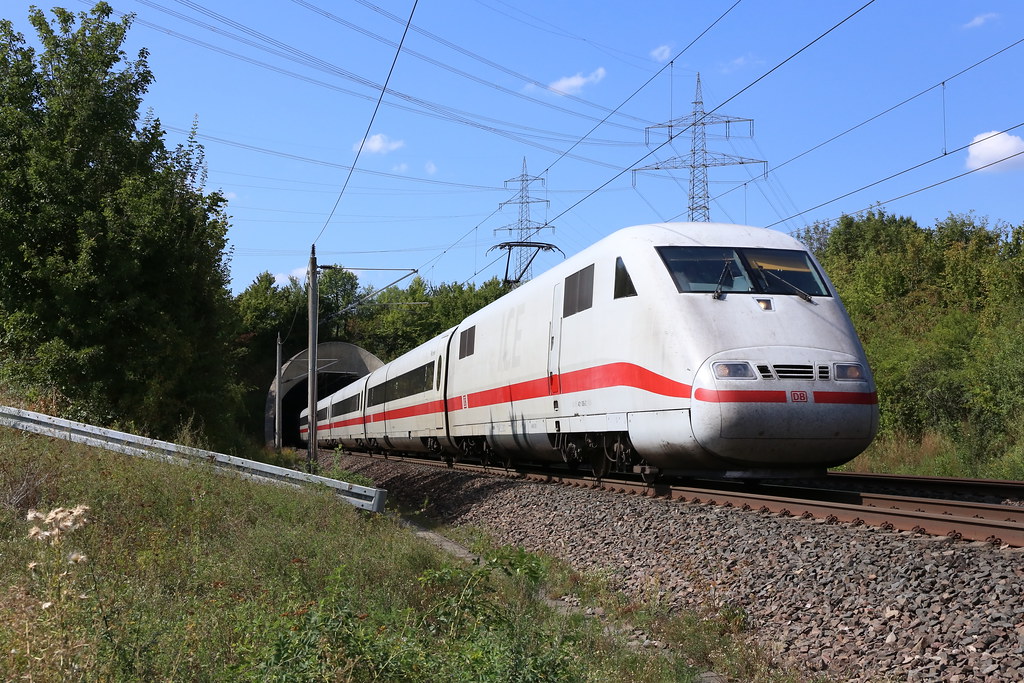
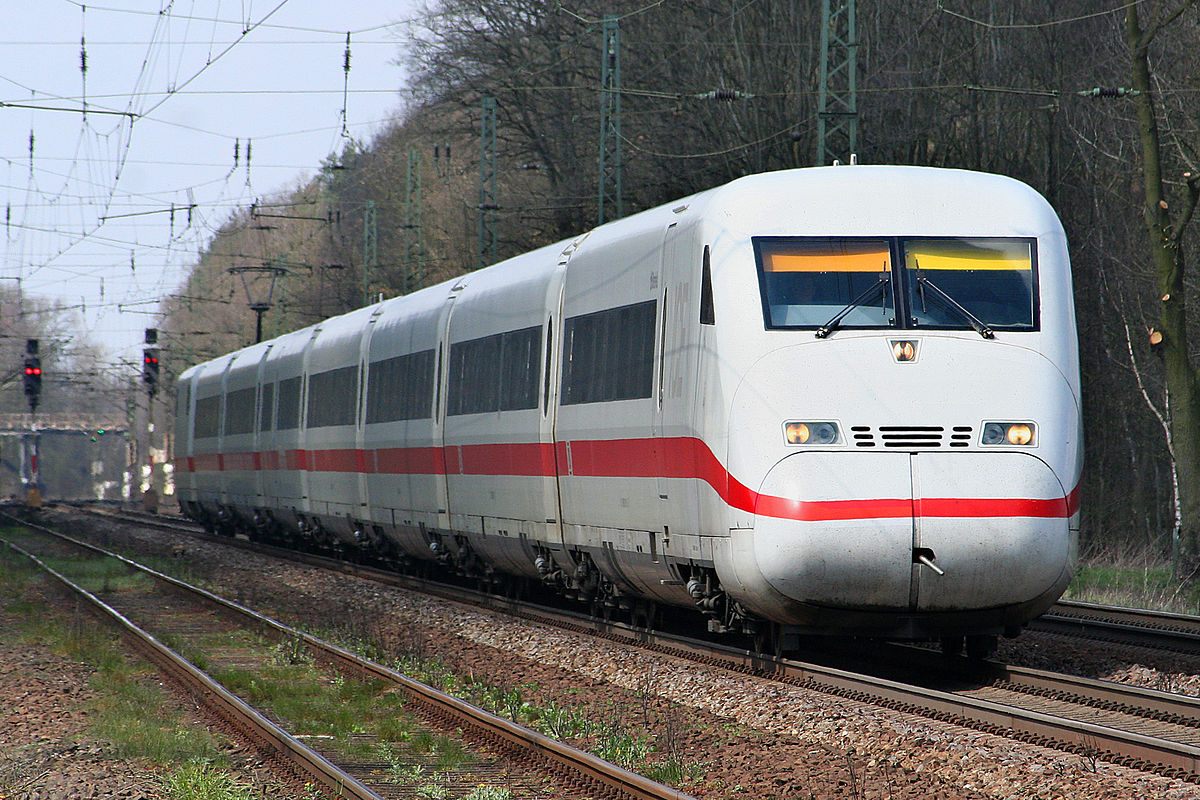

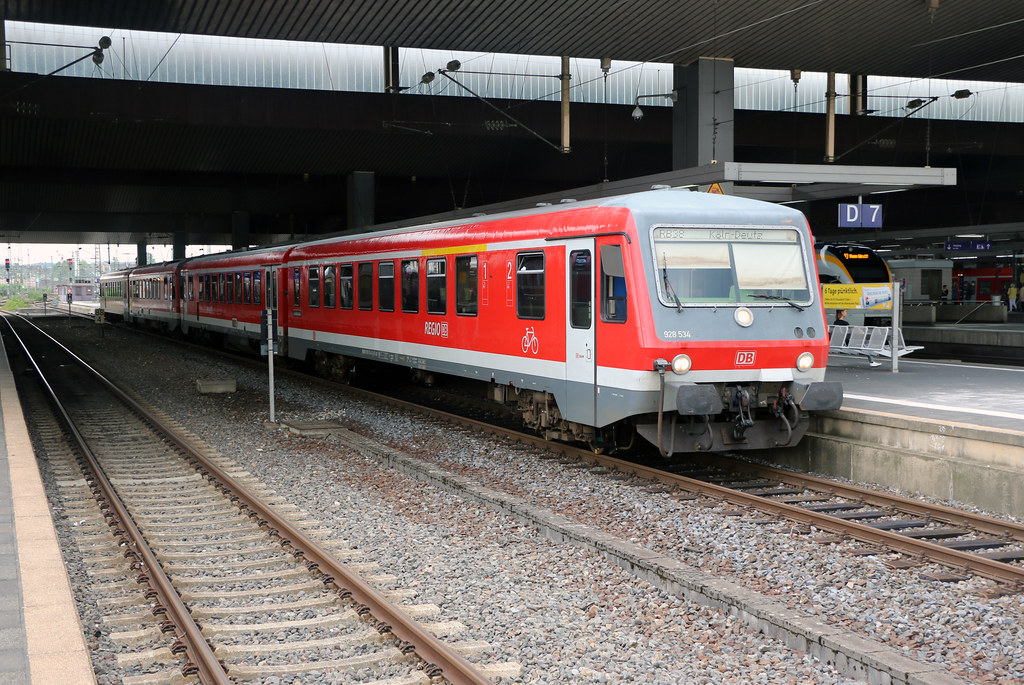
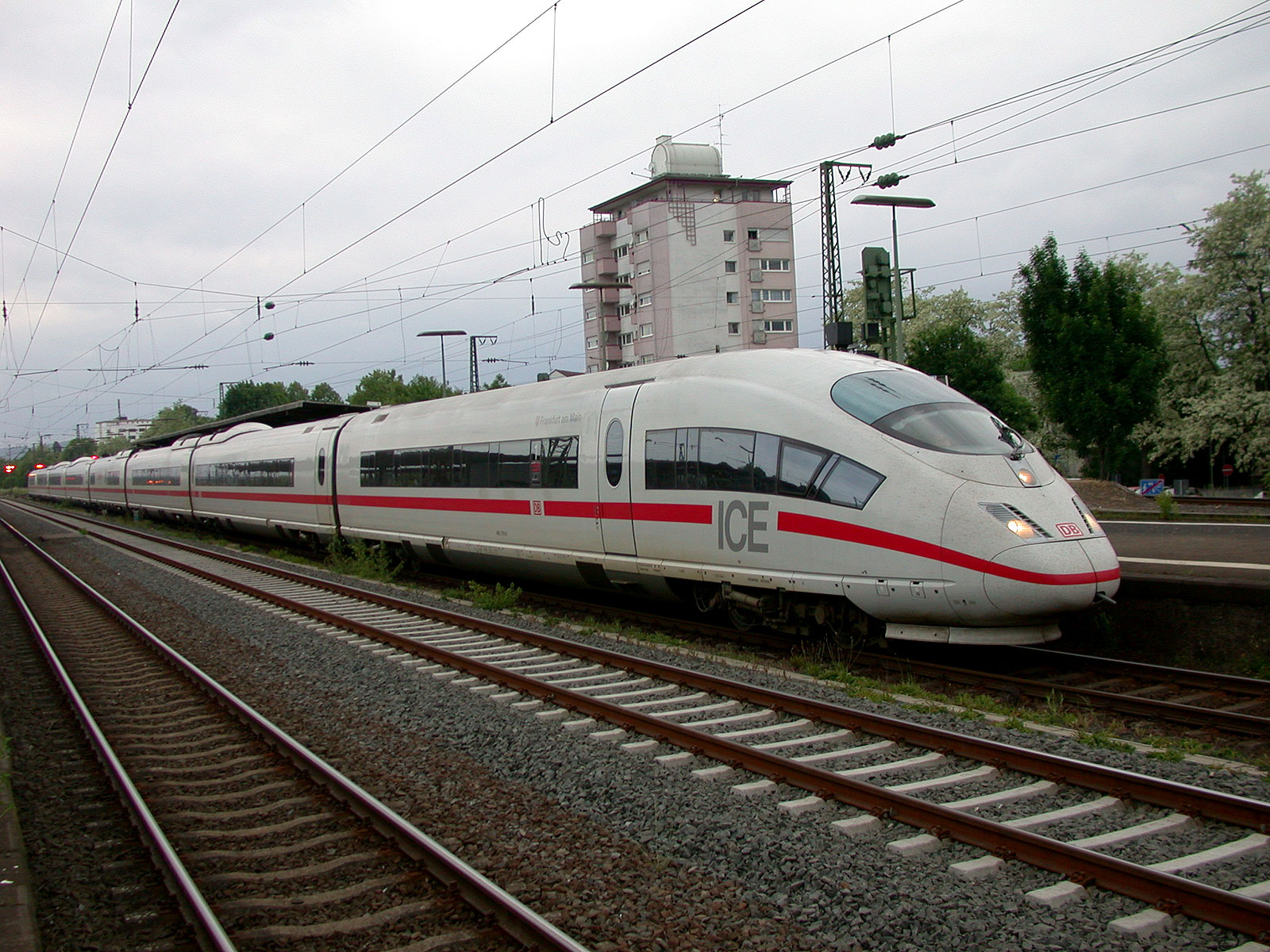
ICE 1, ICE 2 RE, RB AND ICE 3 (from up to down)
Train schedule of EC, ICE, RE and RB from Berlin to Dresden
Long-haul trains (ICE, IC and IRE) are white with red signs. Local trains (RE, RB, SE and S) are red with white or grey signs. They serve as the domestic railway of smaller towns and cities and stop by stations alternatively. Most of the time, the first train on the track stops at all the stops. The next train which arrives half an hour or an hour later only stops at selected stations. The next train pulls off at all the stations again. For trains with a 30-minute or two-hour difference a special case may occur. It isn possible that the first train stops at town number 1,3,5 and 7 while the second train stops at town number 2,4,6 and 8. Please check prior to a trip whether the train you are boarding stops at the right destination.
Search real time cheap ticket from Berlin to Dresden below
InterCity Express, ICE
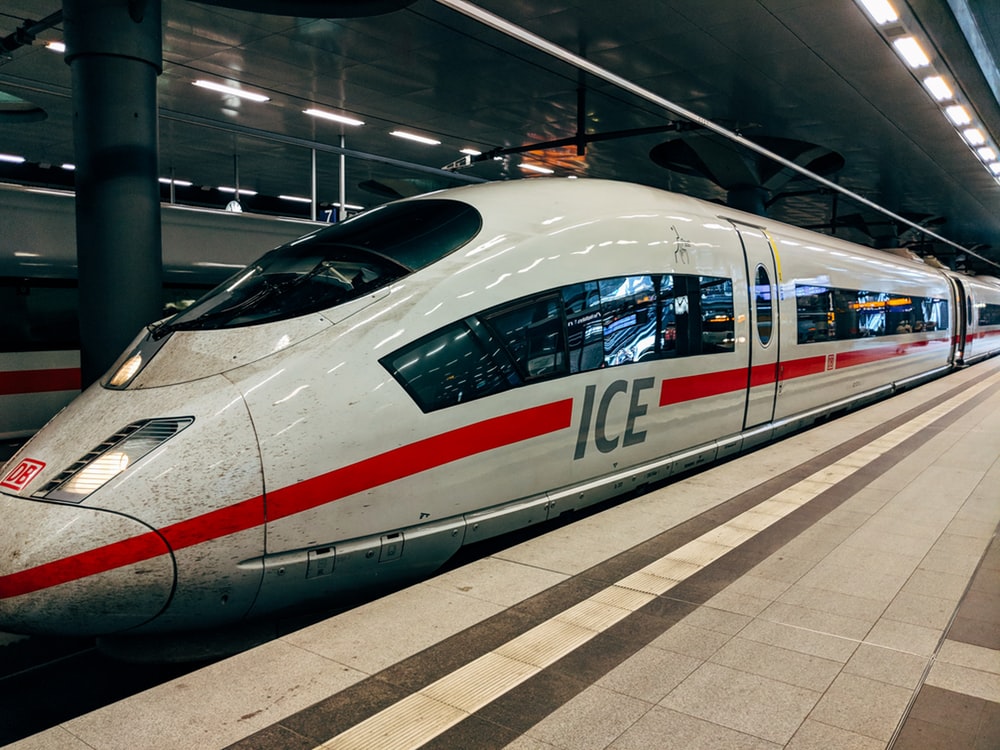
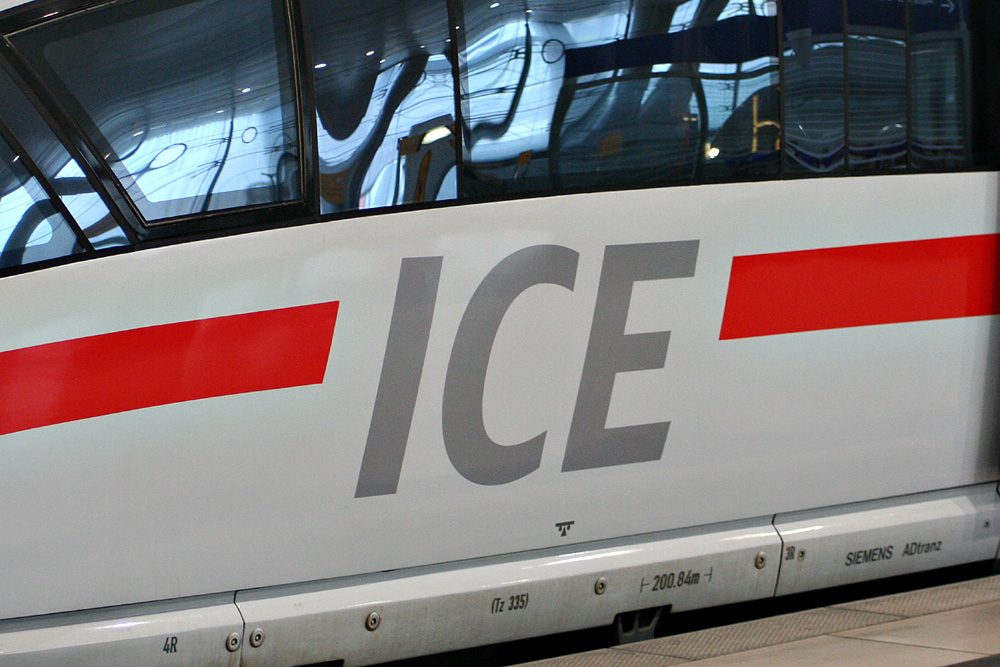 Logo of DB ICE
Logo of DB ICE
As the flagship train of DB, it is also the highest service category of trains offered in Europe. There are 259 trains currently in service. It belongs to type A, the highest type, in the German train fare system. Similar to other trains, passengers of ICE are not charged based on the miles travelled but on the fixed point-to-point prices between stations.This is because ICE trains are more comfortable than general trains. They offer speedy rides at 320 km/h, enabling them to be an alternative of airplanes to suit the needs of business and long-haul travelers.
Four generations of ICE trains now run on more than ten tracks connecting all major cities. In order to ensure a stable and quiet journey, main routes are equipped with specially-designed vertical and horizontal subgrades as well as welded tracks. For other routes, the new tilting technique makes ICE service on traditional tracks possible. Trains are pressurize to minimize the discomfort brought to the ears because of high speed traveling in the tunnel.
Apart from being the fastest train in Germany, ICE is also the most luxurious train. Adjustable padded seats, personal reading lights, entertainment system on arm rests (requires your own headphone), conference room, business telephone and fax machine can all be found on ICE cars. First class passengers can even enjoy the extravagance of an entertainment system on their seats.
ICE trains can also be spotted not only in Germany but also in neighboring countries. For example, ICE 1 runs from Brussel to Zurich. ICE 3 heads to Liege and Brussels and continues its journey to Amsterdam at a lower speed. On 10 June 2007, a new line co-supervised by ICE and TGV was opened. It connects Paris to Frankfurt and Stuttgart. The ICE train that goes through the English Channel with London as the final destination started running in 2018. All ICE 3M trains run between Paris and Munich (except trains 9553 and 9552), and they use TGV duplex equipment. Staff on the train is a hybrid of SNCF(the French National Railway Company) and DB employees. This combination is found on TGV trains from Paris to Munich (via Stuttgart) too. Another type of train, ICE T in Germany and Austria is responsible for journeys to Vienna. Starting from 2007 on 9 December, ICE TD train travels to Aarhus and Copenhagen in Denmark from Berlin via Hamburg.
The Spanish Railway Company RENFE is using Siemens Velaro, a train based on ICE3. With another name AVE Class 103, it is verified that it can travel at a speed of 350 km/h. China is using the train as CRH3 in Beijing-Tianjin Intercity Railway, while Russia is putting it to use and calls it Velaro RUS.
The maiden ride of the newest model ICE 4 took place in 2014.
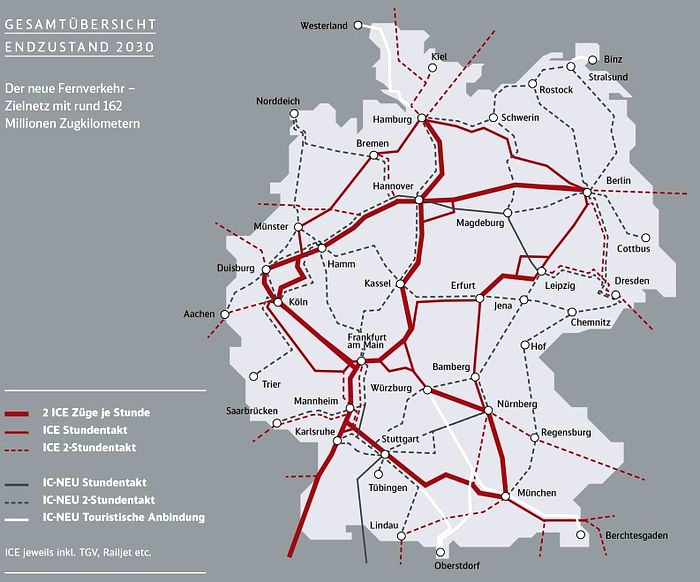
DB ICE Major Routes Map (Domestic and International)
Coach Class
Cabins are divided into two classes- First Class and Second Class. A large numeral is present on the cabin door to indicate the corresponding class. A yellow stripe usually surrounds the first class cabin. Generally speaking, first class and second class passengers enjoy the all the services on the train. Yet, first class cabins have less seats and the seats are more spacious. On top of this, first class ticket price is twice the price of the second class, implying that first class cabins usually have less passengers than second class. 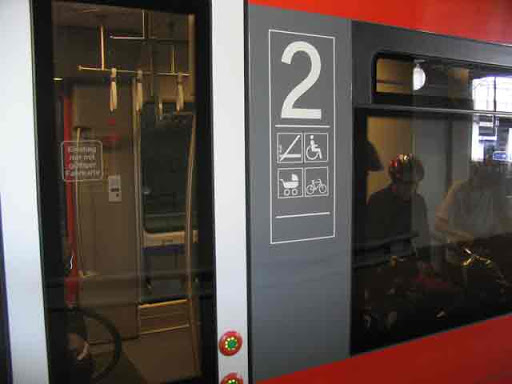
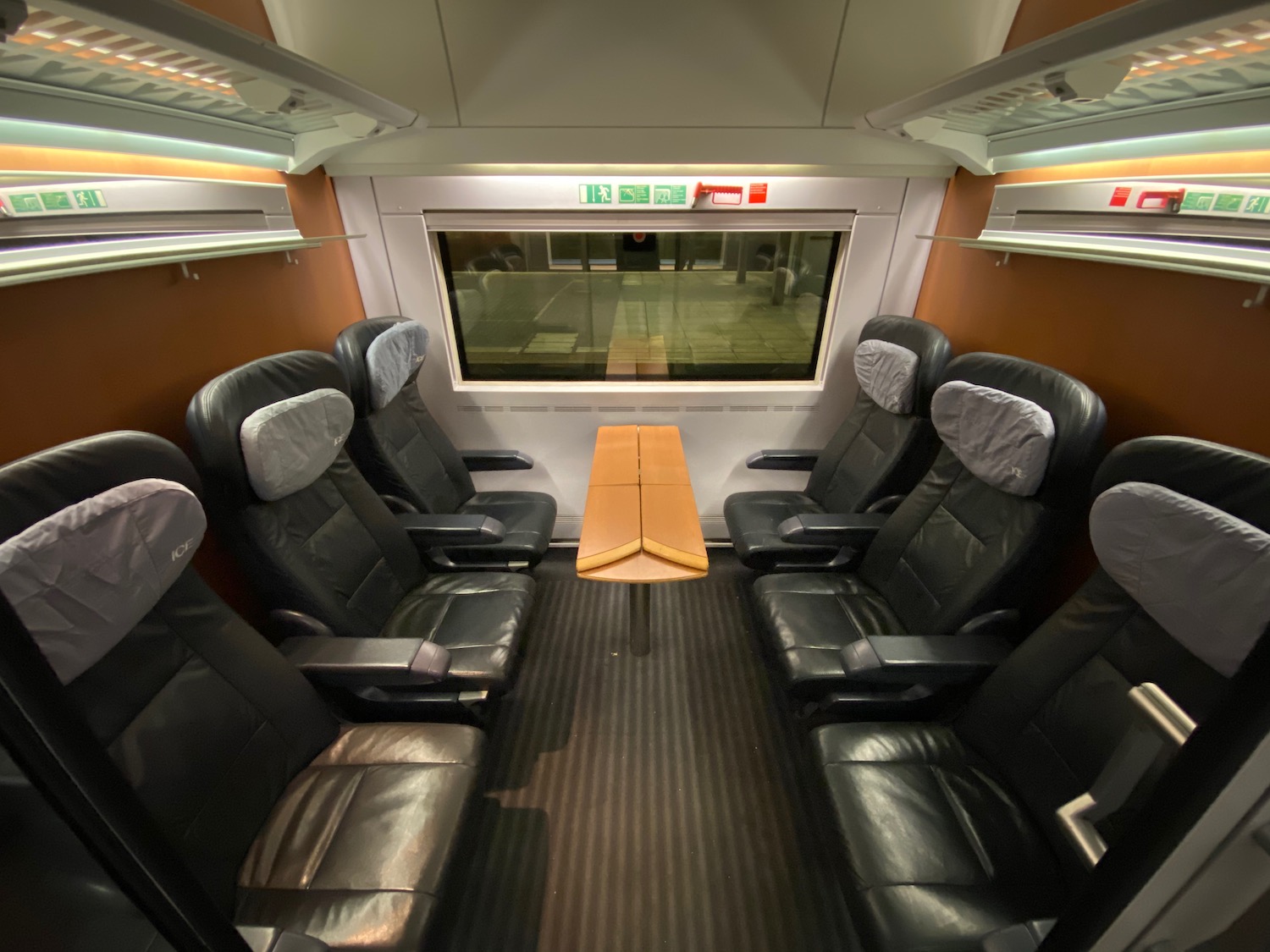 ICE First Class Cabin
ICE First Class Cabin
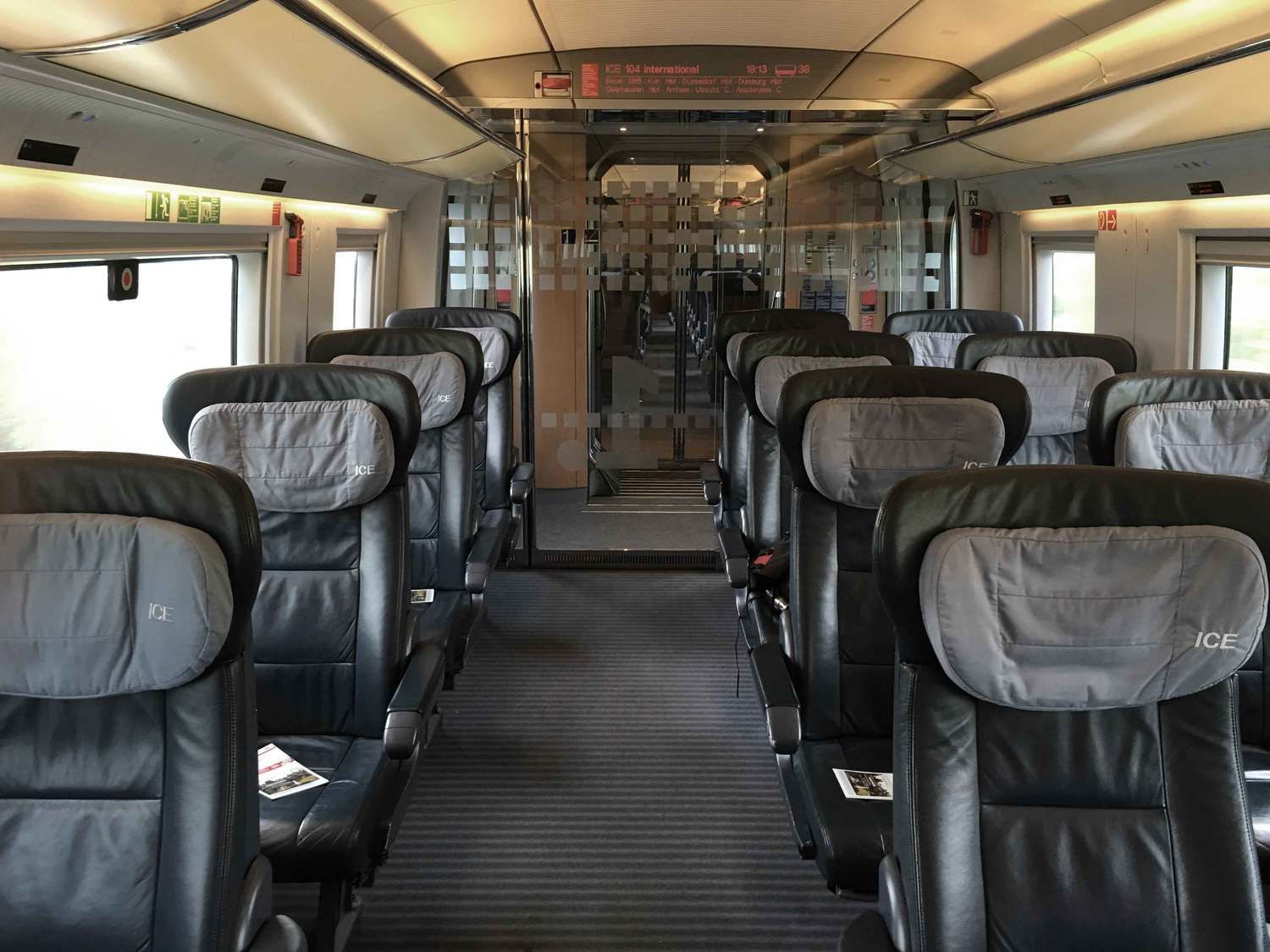 ICE First Class
ICE First Class
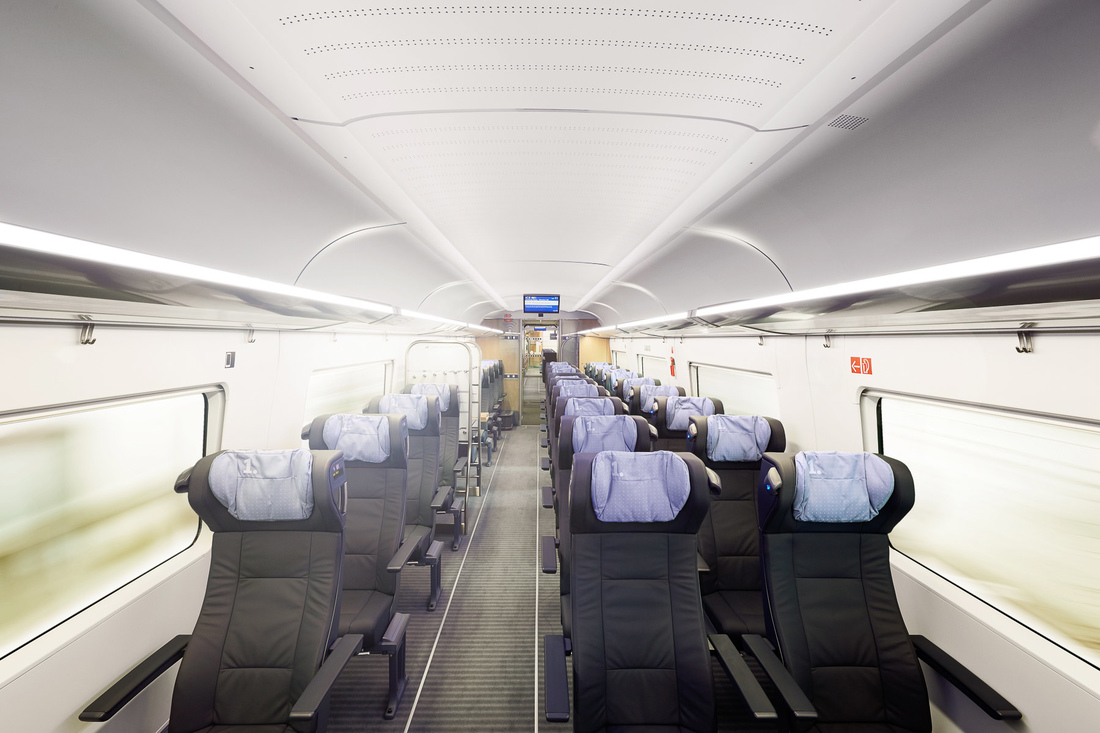 ICE 4 First Class
ICE 4 First Class
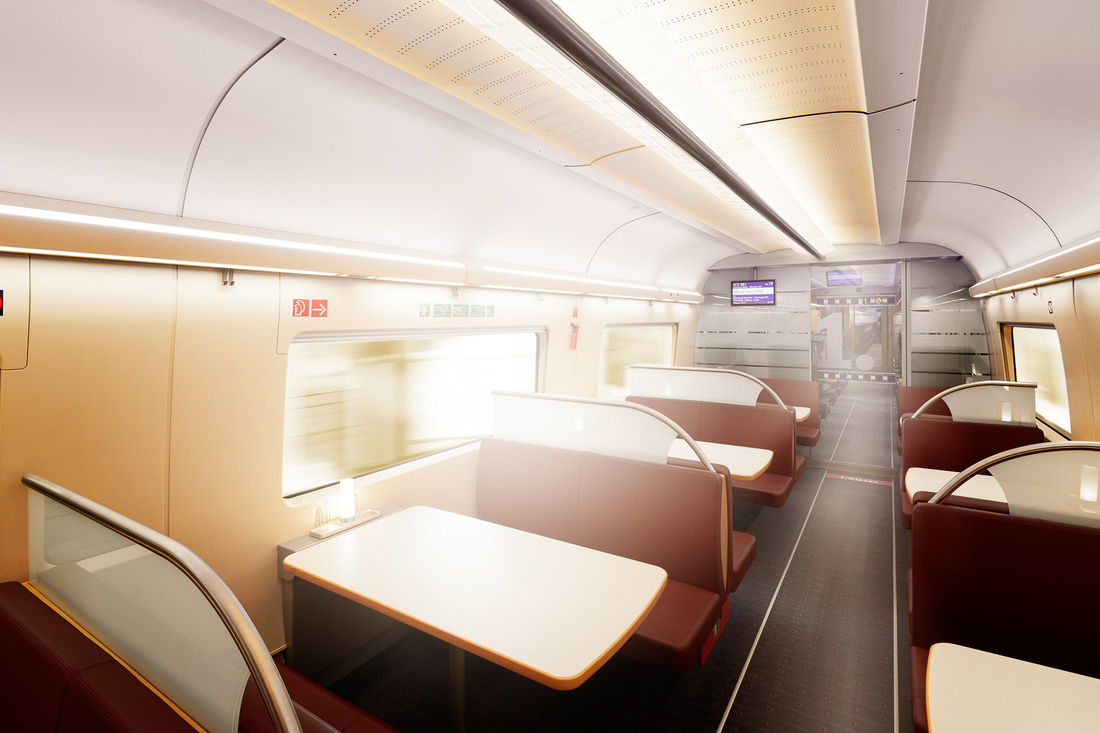 ICE 4 Dining Car
ICE 4 Dining Car
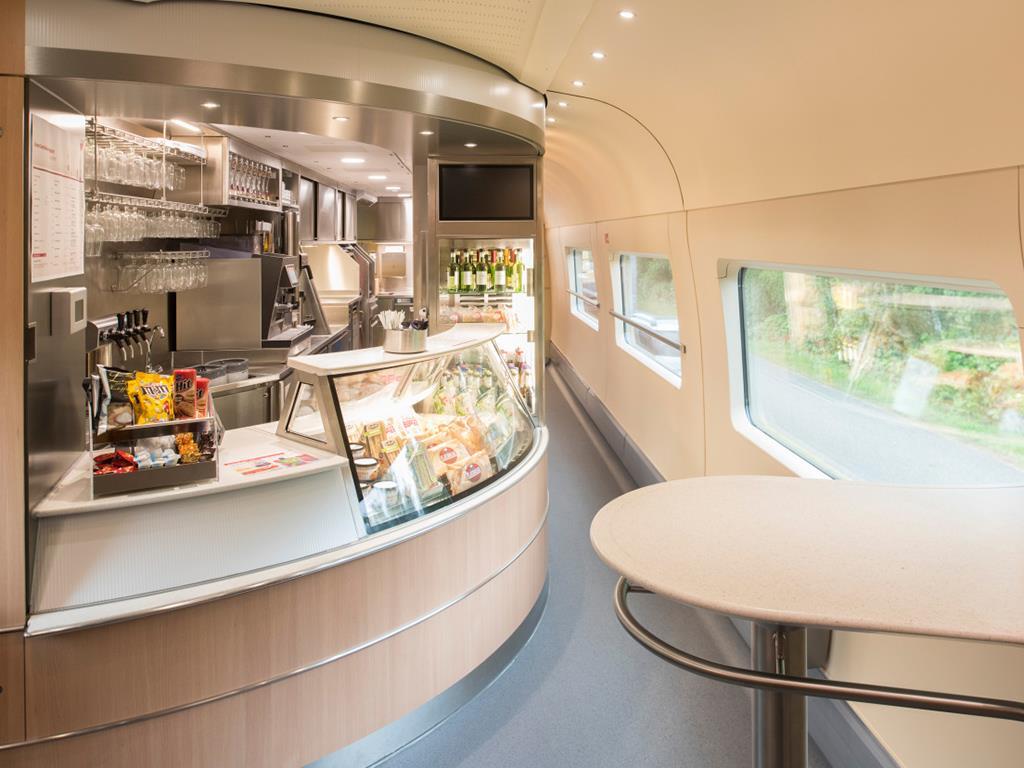 ICE 4 Catering Service Corner
ICE 4 Catering Service Corner
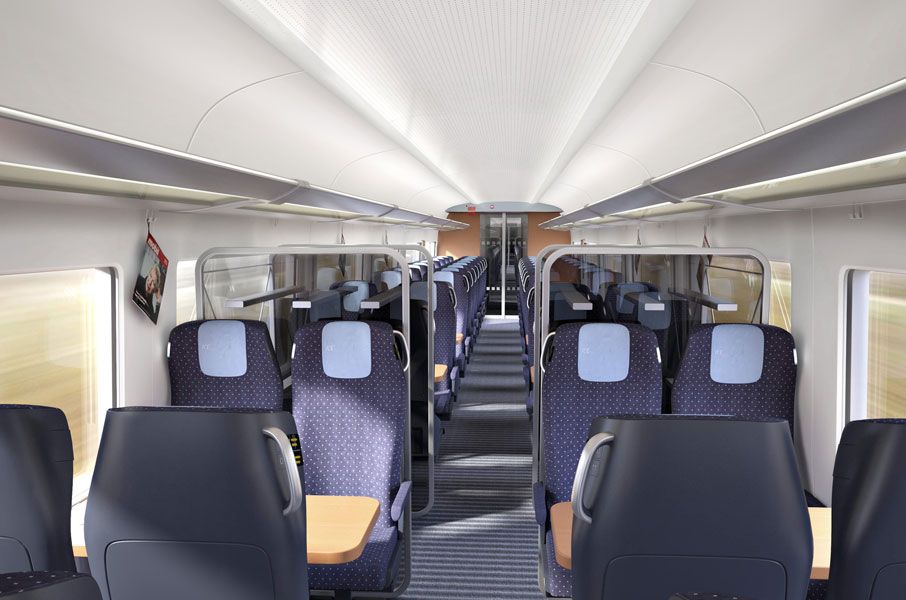 ICE Second Class
ICE Second Class
InterCity, IC
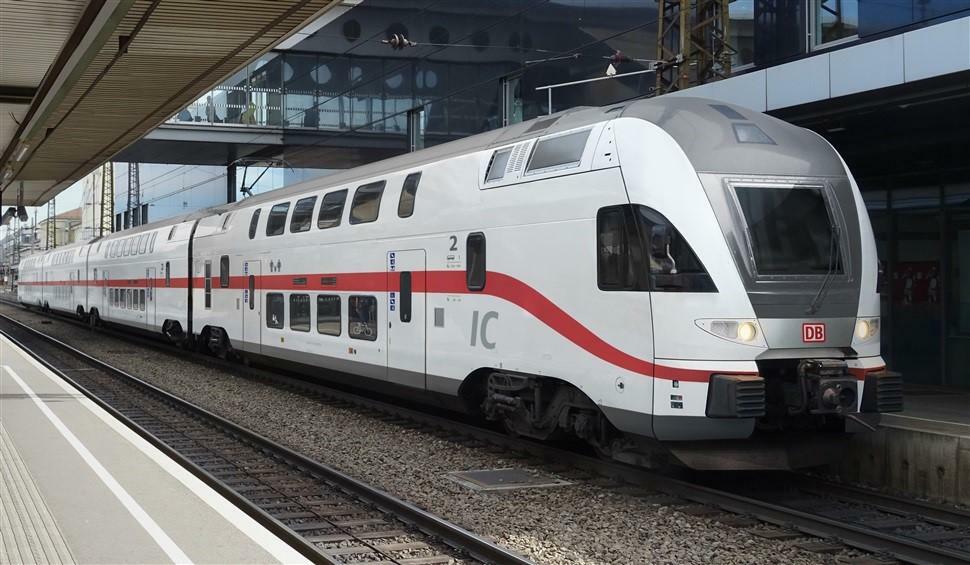 IC Logo
IC Logo
InterCity (IC) ranks the second in the German railway service category. IC is a domestic express service generally for long-haul trips that runs through the whole country. Trains run on a two-hour interval, while those serving major routes run more frequently. The Fernverkehr Department of DB operates the IC.
IC was adopted in 1971 to replace the old F-zug trains. It used to be the dominant train in Germany before ICE was introduced in the 90s. IC trains, which have the same features of InterRegio trains, are used less widely now because of a boom of ICE. Still, IC provides efficiency and comfort. All the trains provide nice accommodations together with meals. Usually there is a cafeteria but some trains have a restaurant instead. Many of these trains serve destinations outside of Germany and belong to EuroCity (EC) indeed.
It would be better to make a reservation before boarding the train especially during weekends and holidays.
 DB IC Double Stack Train
DB IC Double Stack Train
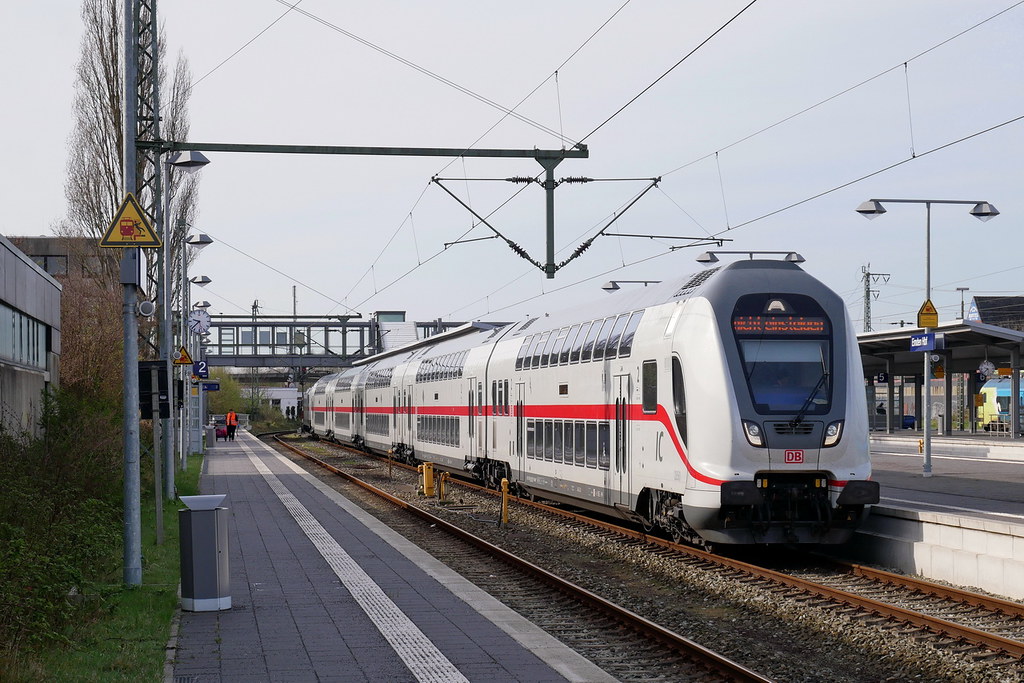
DB IC Double Stack Train
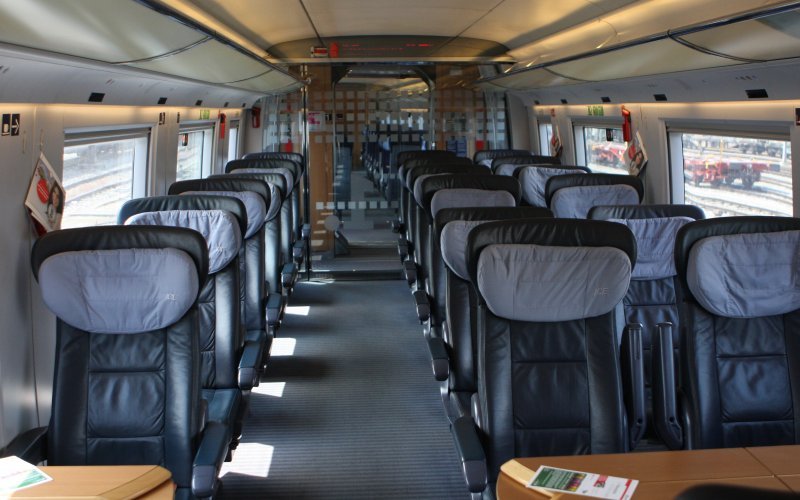
 IC First Class
IC First Class
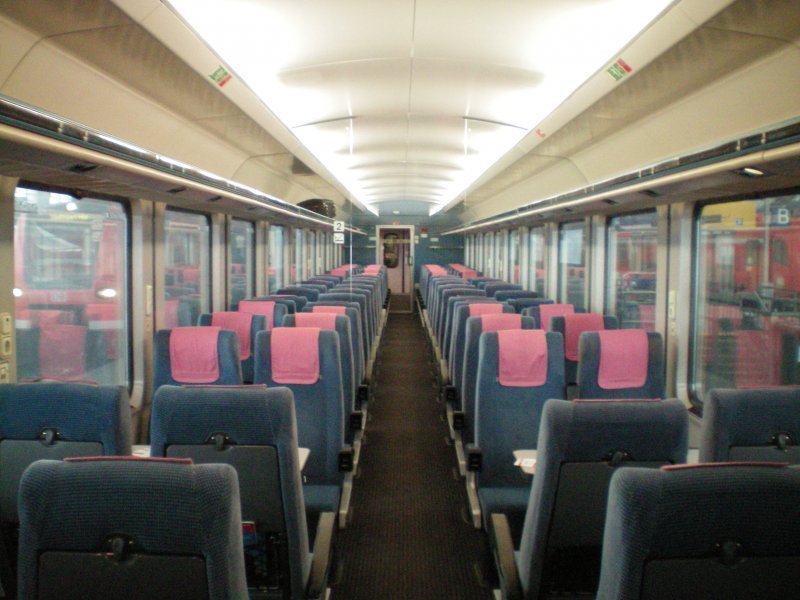
IC Second Class
EuroCoty Express (EC)
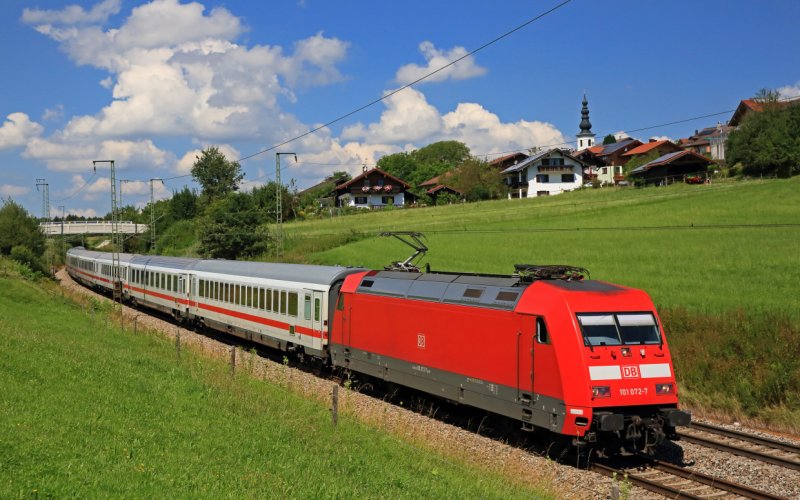
EC Logo
EuroCity (EC) is the cross-border train in the European railway system. Compared with trains in the lower category IC, EC trains are international trains that meet 20 standards, including comfortability, speed, catering services and cleanliness. European and Swiss railway companies operate multilaterally to drive EC trains. All the trains connect major European cities.

EC from Strausburg to Munich
To be recognised as part of the EC system, trains must:
- pass by two or more countries
- be air-conditioned
- only stop at stations of major cities
- stop for less than five minutes (no more than 15 minutes for special occasions)
- provide food and beverages (Dining car preferred)
- have a bilingual commander (one of the languages must be English, French or German)
- run on an average speed higher than 90 km/h, excluding mountain and cruise routes
It was decided in 1993 that EC trains can only run after 6am and before midnight. EuroNight (EN) is responsible for night services starting from 23 May, 1993.
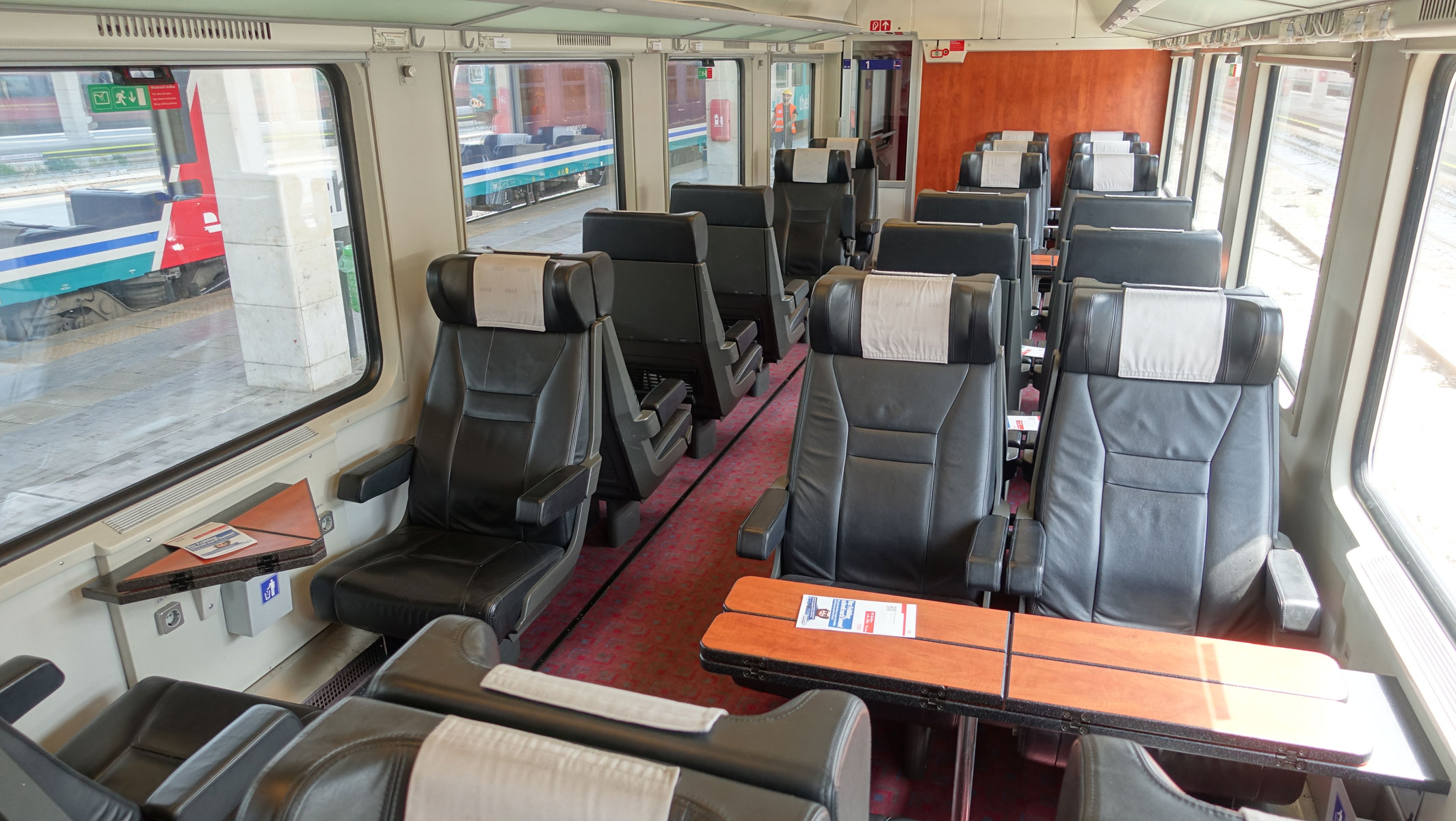
EC First Class Cabin (Munich-Bologna)

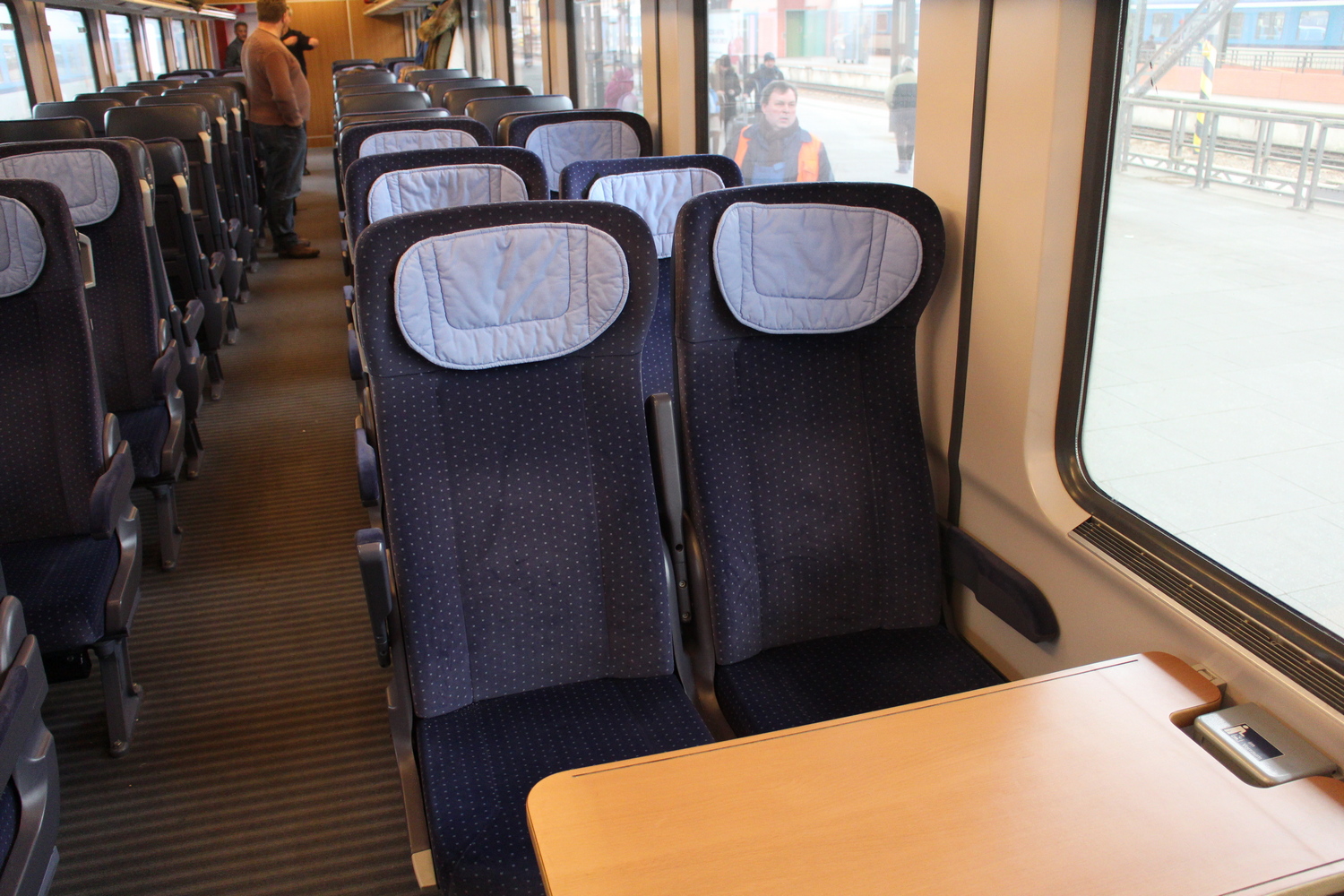
Interregio-Express, IRE
IRE is a public railway operated by the DB. It is only available in Baden-Württemberg, Bavaria, Saxony, Saxony-Anhault, Berlin and Basel Badischer, Bahnhof and Kreuzlingenin in Switzerland.
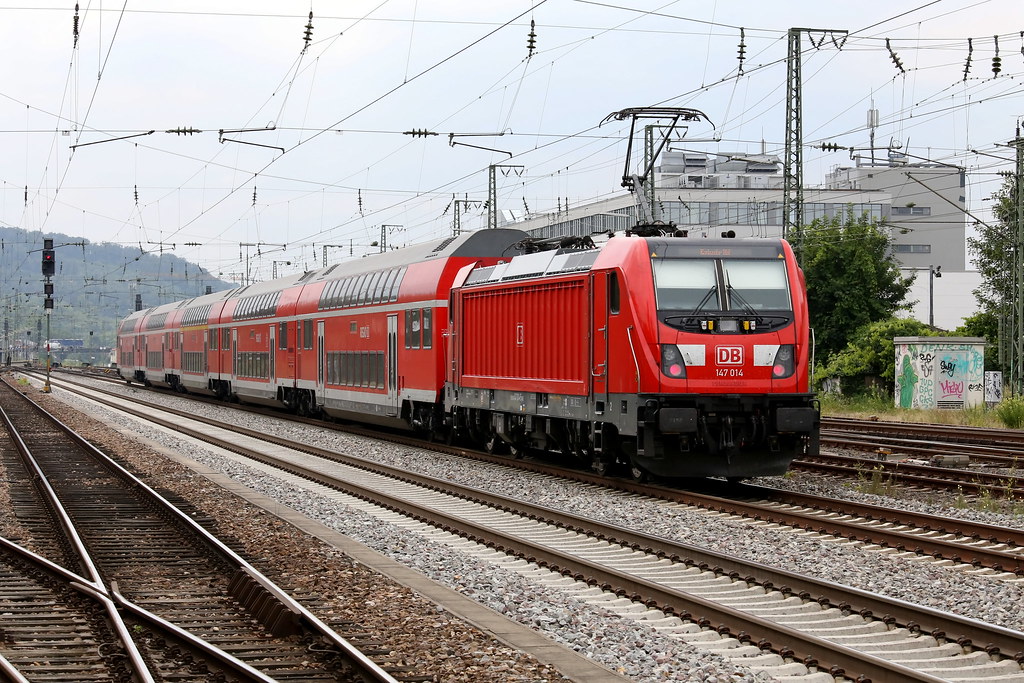 IRE at Stuttgart
IRE at Stuttgart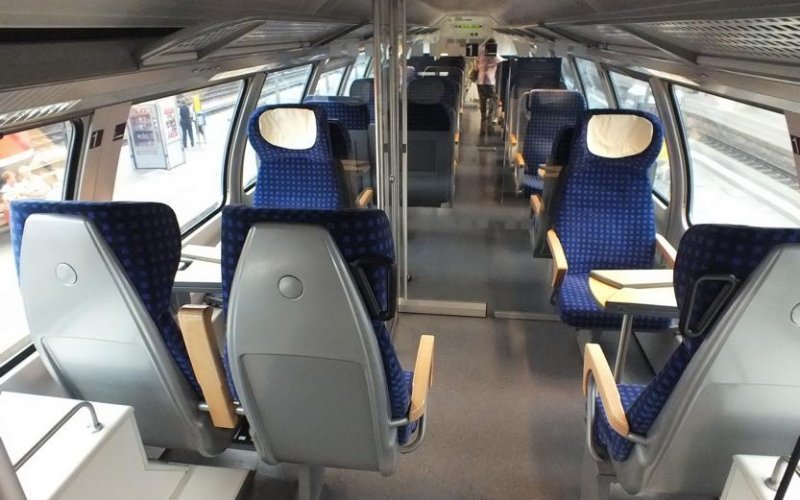 IRE First Class Cabin
IRE First Class Cabin
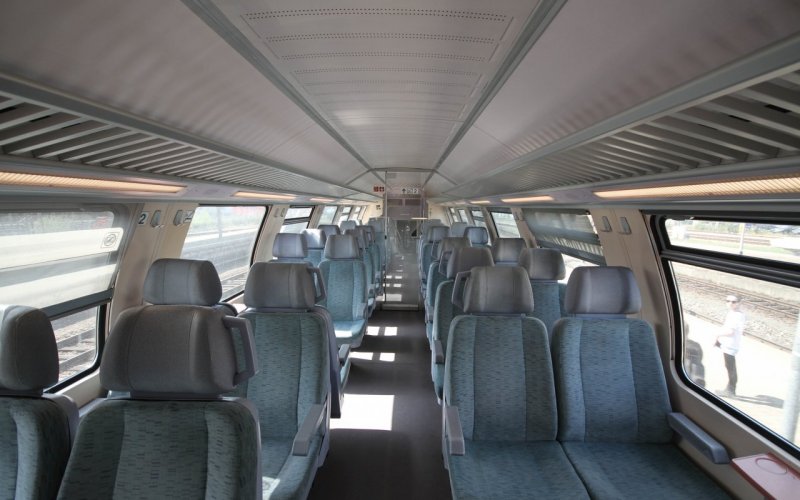
IRE Second Class Cabin
Night Trains: ICN(InterCityNight), EN(EuroNight), CNL(CityNightLine), NZ(Nachtzug)
Many domestic and international trains travel at night. Night trains do not only offer a special experience but also provide flexibility for passengers as travelling and sleeping are combined. Passengers on a budget replace hotels or hostels with night trains.
In recent years, The number of ‘Hotel Trains’ (NachtZug) connecting Berlin, Munich Hamburg, Koln and other countries has been increasing drastically. These cars are basically hotels that offer comprehensive services on the track. Instead of seats, only beds are found (see more information below).Just like luxurious hardwares, the price of these trains are on the higher end too.
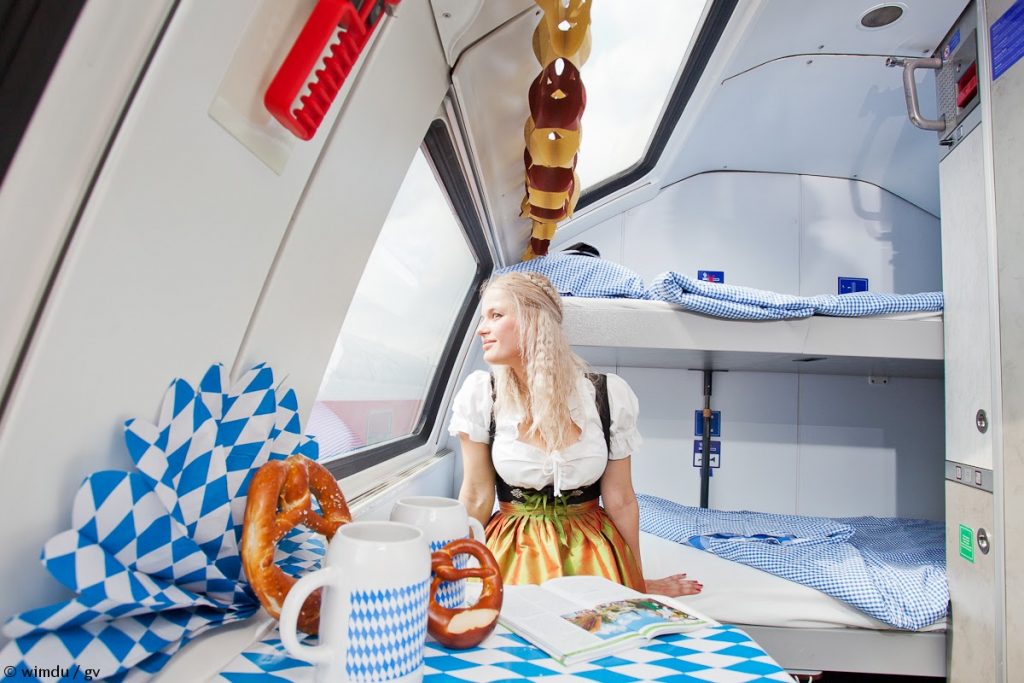
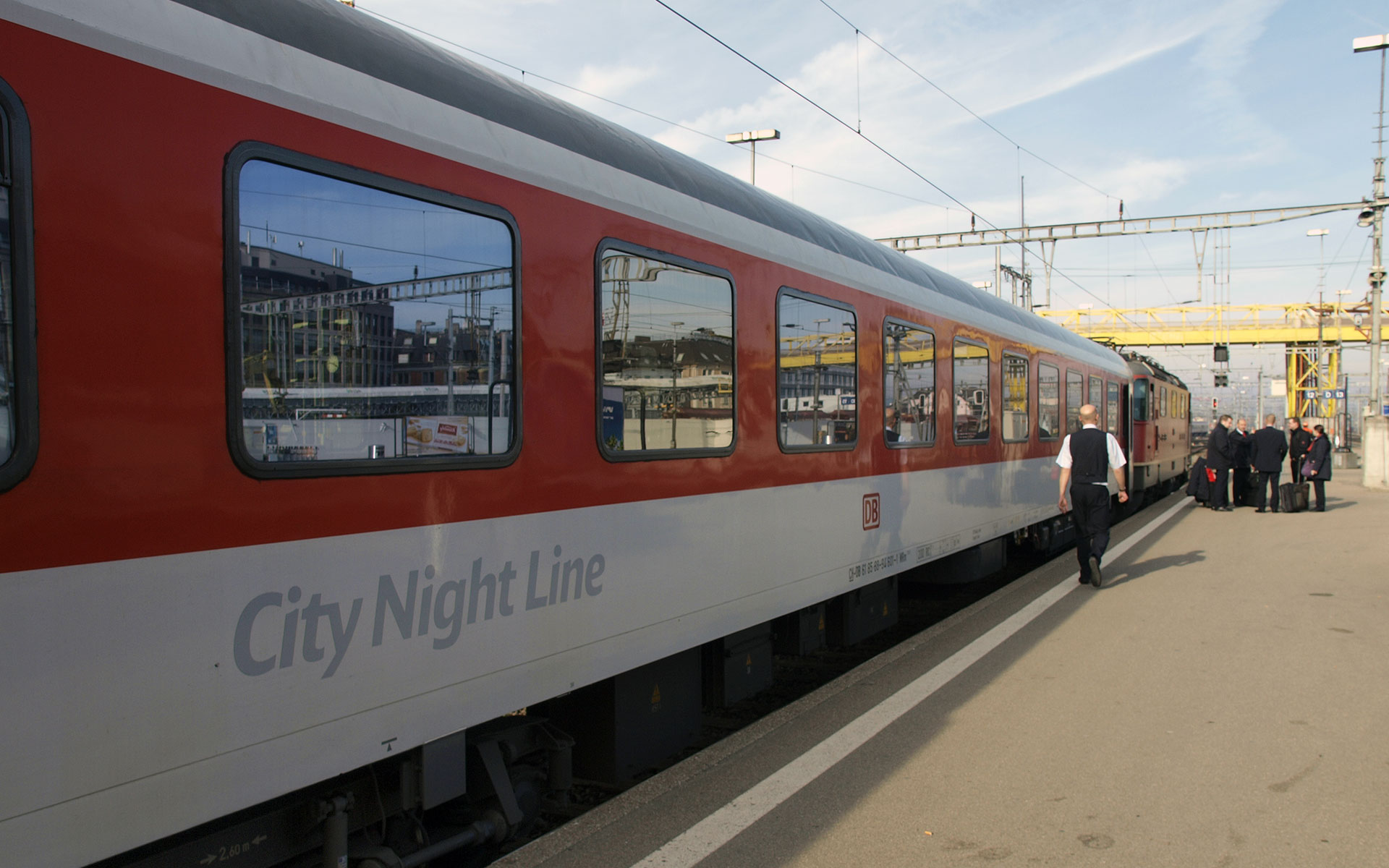
City NightLine
Apart from hotel trains, a number of standard trains, mainly ‘D-Zug’ trains run at night too. These trains provide sleepers (Schlafwagen) and couchettes (Liegewagen). Though limited, pre-assigned seats can be found on the night trains. Some of the trains may not contain any pre-assigned seats. 
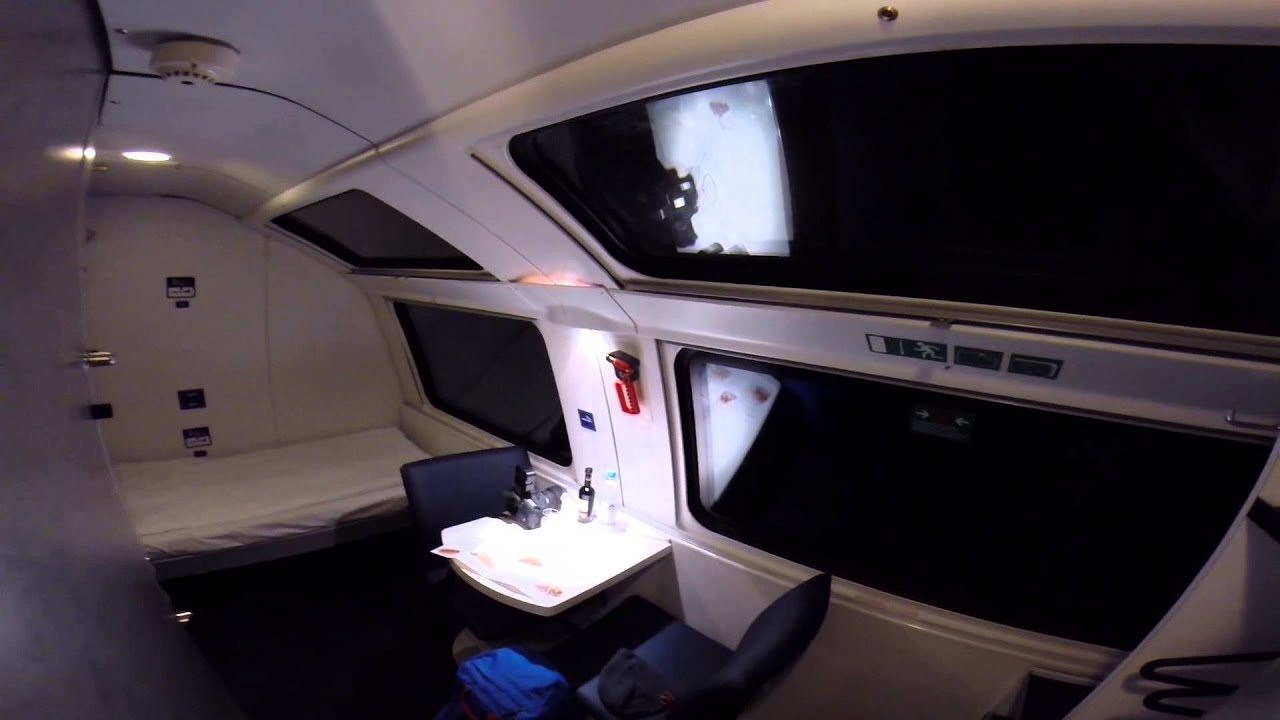 Sleeper Cabin
Sleeper Cabin
Sleepers contain of a private space with one to three beds, with bed sheets and mattress, as well as a mini sink and access to cold and hot tap water. A staff is present to provide any assistance if needed. For most of the sleepers, food delivery to the cabin is available. Please note that a charge applies to the delivery service. Some of the trains provide free breakfast. Sleepers usually belong to the First-Class cabin, which means that passengers will need a first-class ticket and an additional fee to get in.
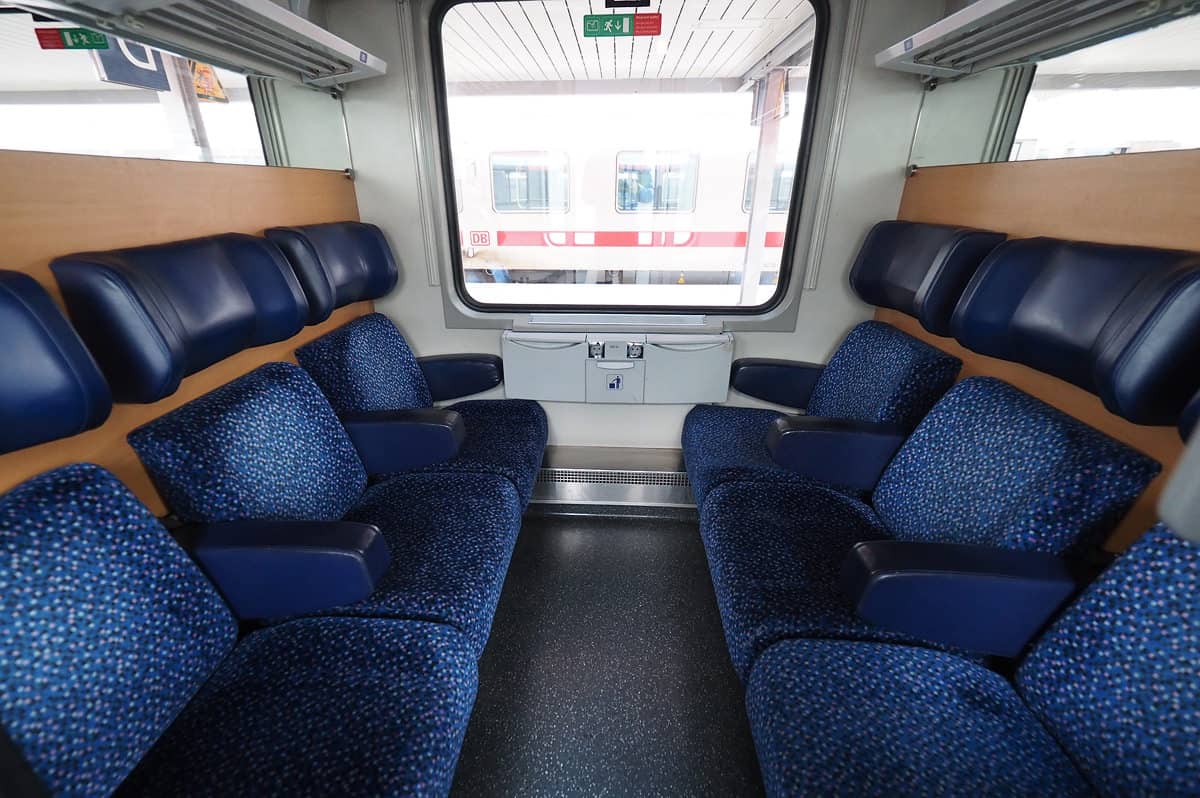 6-Bunk Couchette Cabin
6-Bunk Couchette Cabin
Couchette is a more economical option. Each couchette cabin has four to six bunks, which mean that you will share a cabin with strangers of the opposite sex. A pillow and a blanket will be provided.
Both couchette and sleep provide luggage storage along with a lock. Although commanders and staff will be there to watch your luggages, it is safer to put your cash, credit cards and tickets into a safety bag or purse. Locking your luggage with the luggage rack is also a recommended.
In case you are not interested in paying more for a place to lie on, you can try sleeping on normal seats if the train has spare spaces. Yet, the experience will be very much the same with that on the plane: when it turns dark, the seats only tilt slightly and become increasingly uncomfortable. Box seats may be better in this case. Seats can be pulled out from the bottom while the backseat can move downward. The armrest, once put down, is a padded surface. Set up two opposite seats then you will have a lovely small bed.
Regional Express, RE

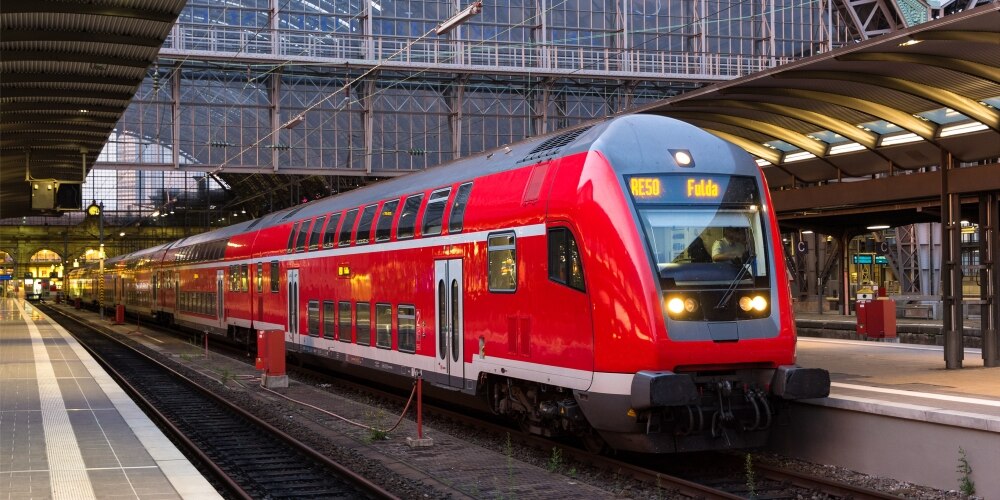 RE Logo
RE Logo
Regional Express (RE) is a newer double-deck train regional express in Germany. Is is also a regional express in Germany, Luxemburg and Austria (called REX). Re is a semi-express with average speed of 70 to 90 km/h. It drops off at more stations than the InterCity train. Many REs provide bicycle storage. and they are marked with a huge bicycle sign on the outside.

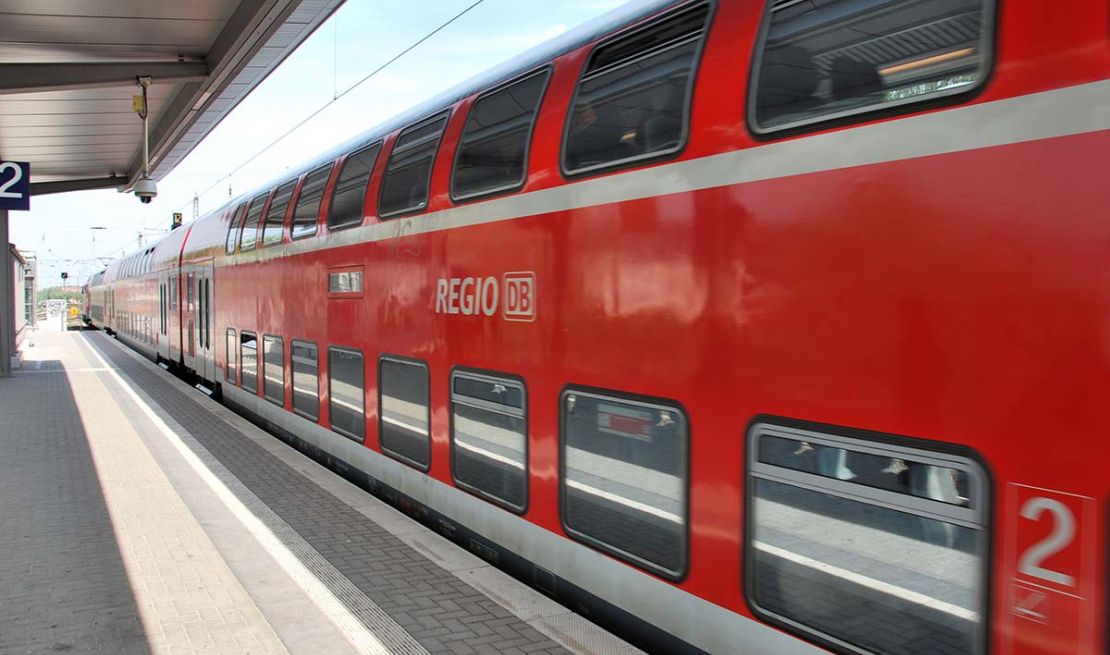
Regional Express, RE

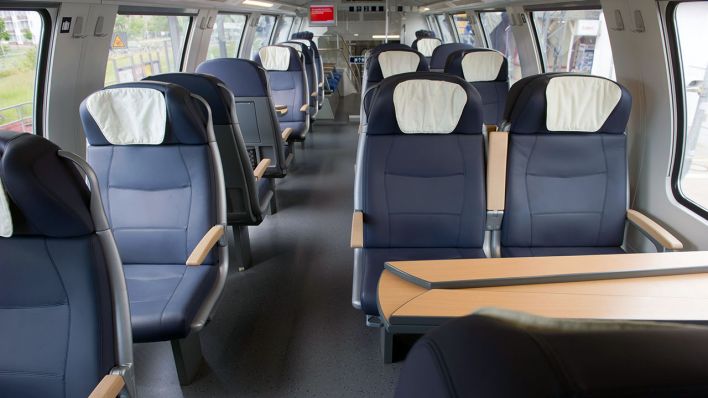
RE First Class Cabin

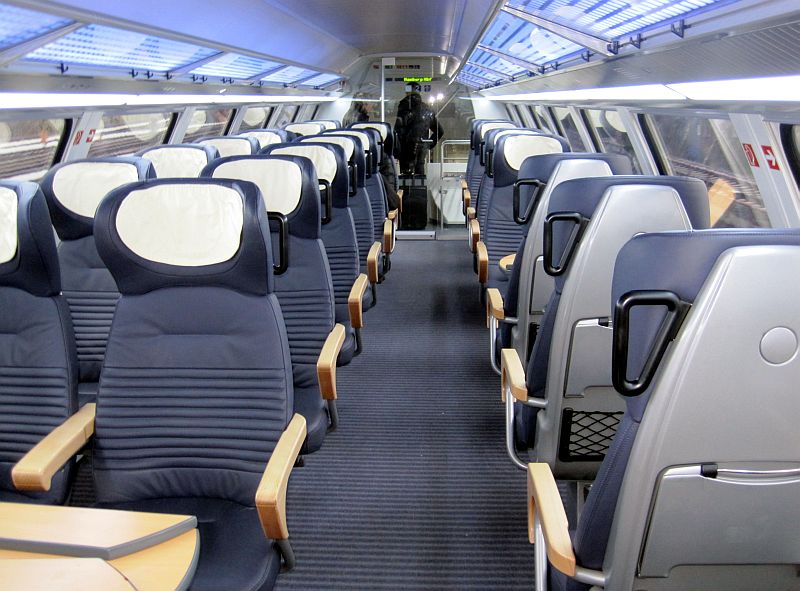
RE Double-deck Second Class Cabin Upper Level

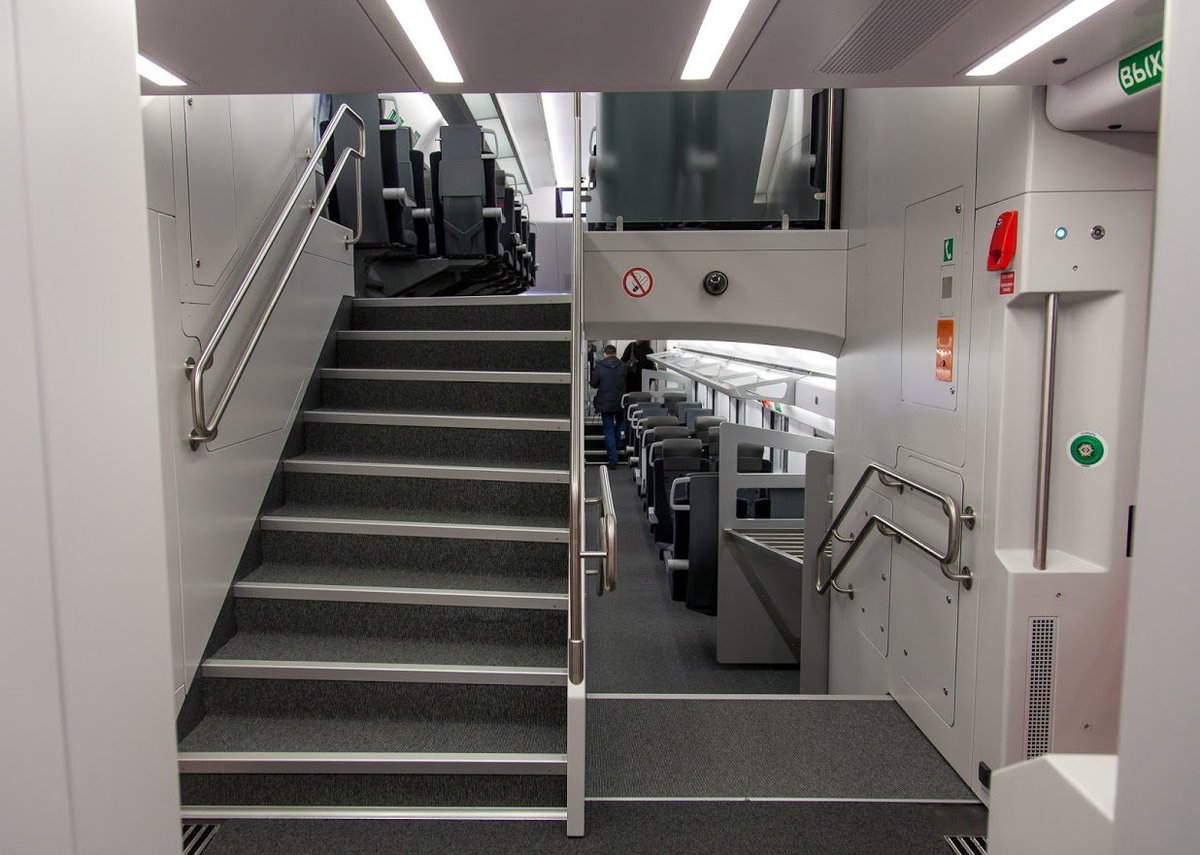
RE Second Class Staircase
Regionalbahn, RB
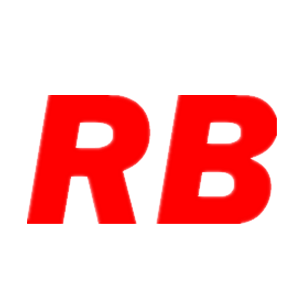
Regionalbahn, RB Logo
All RB trains must drop off at all stations except those in the S-Bahn system. This is why RB places lower than RE in the railway service system.
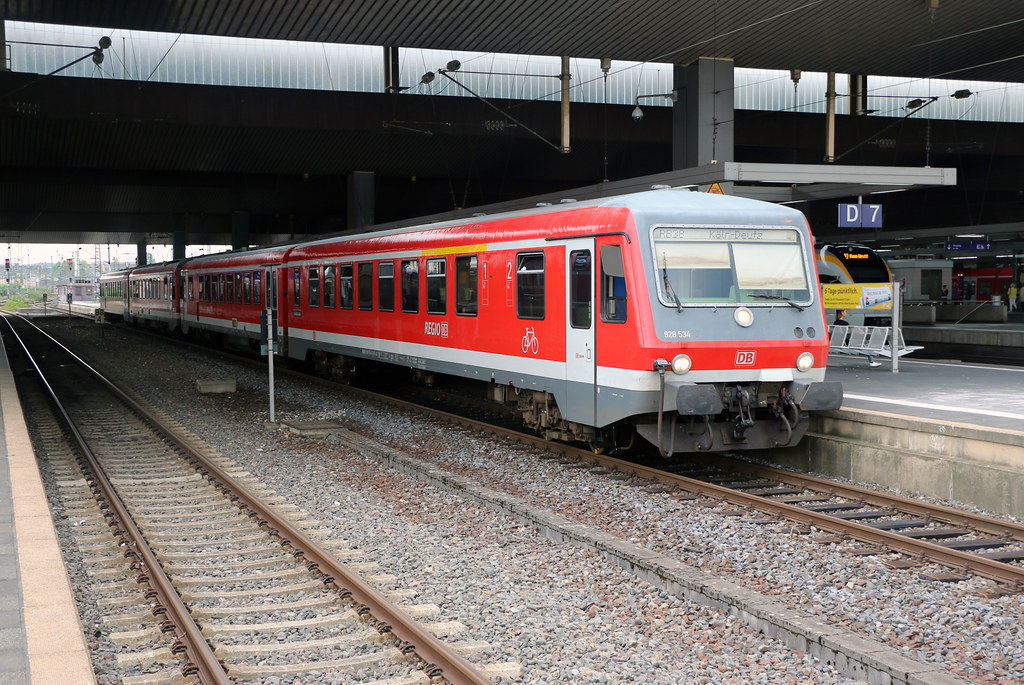 RB at Berlin Hbf
RB at Berlin Hbf

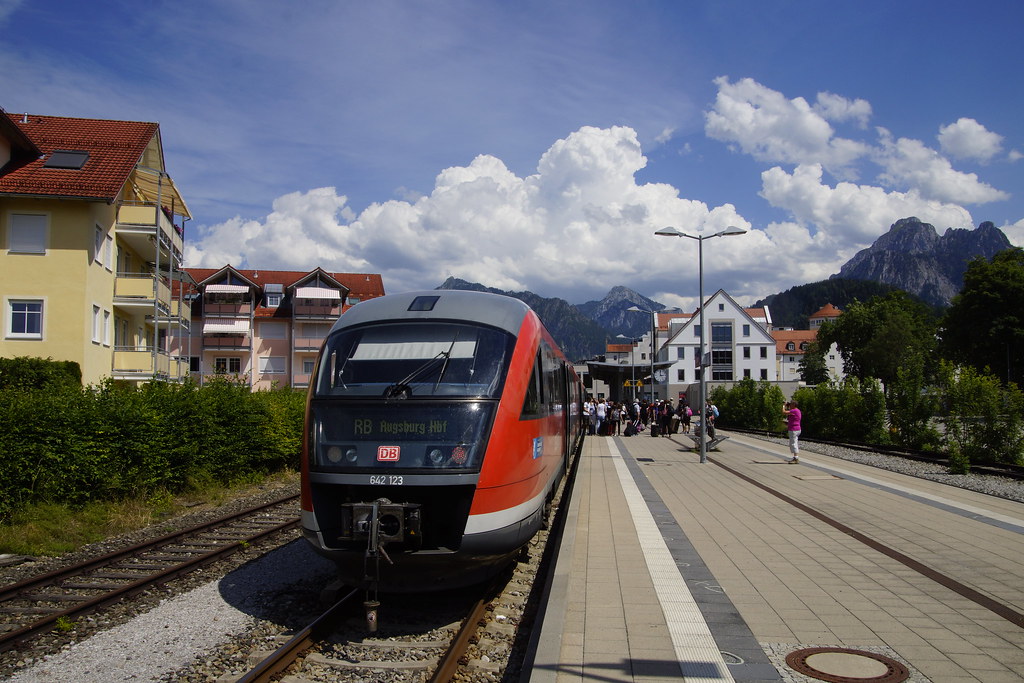
RB from München Gl.27-36 to Füssen (Neuschwanstein Castle)
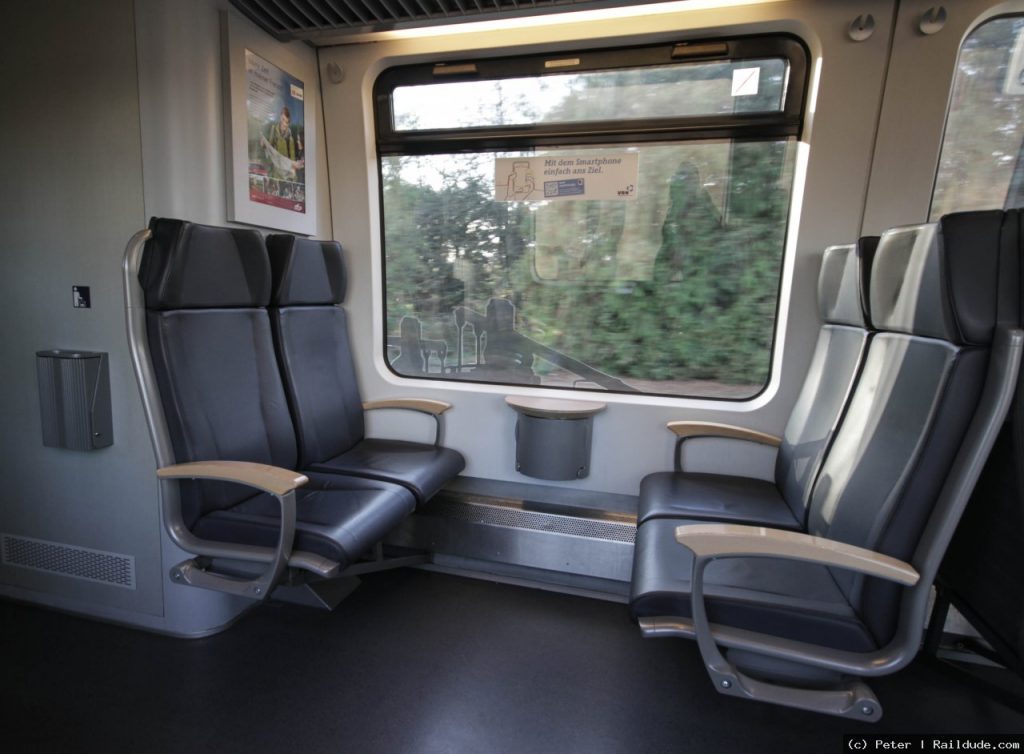
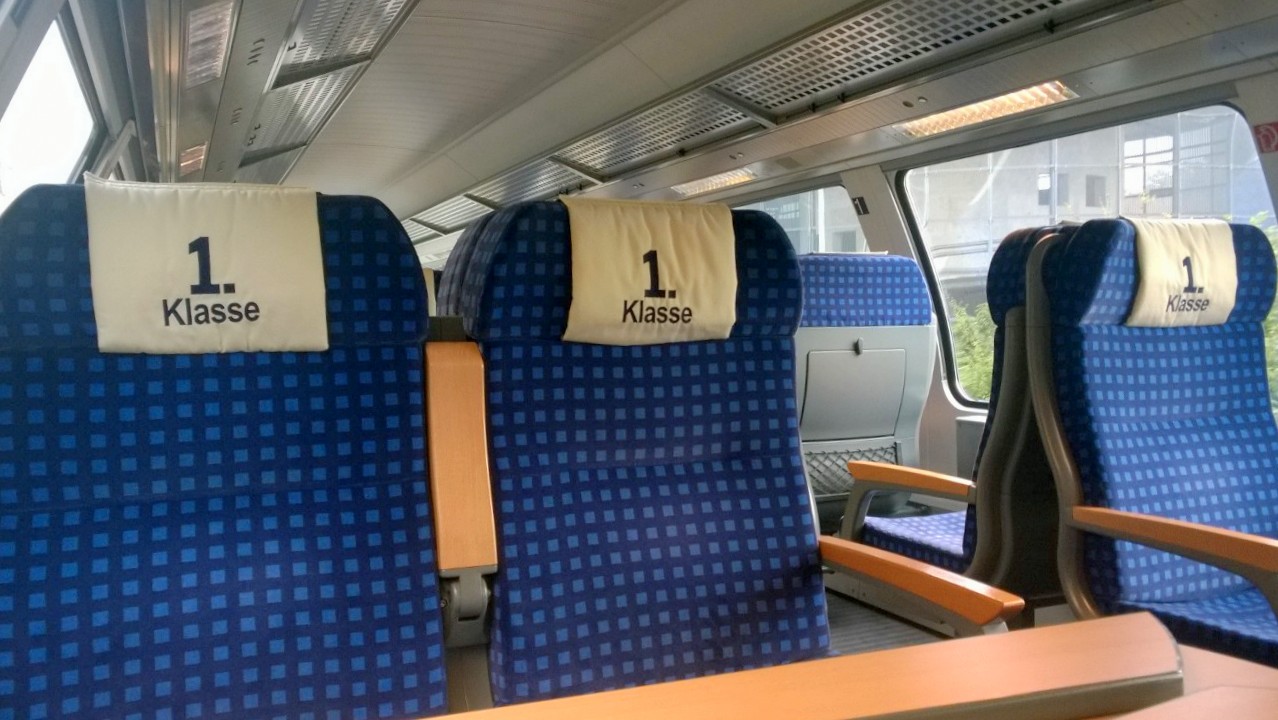
RB First Class Cabin

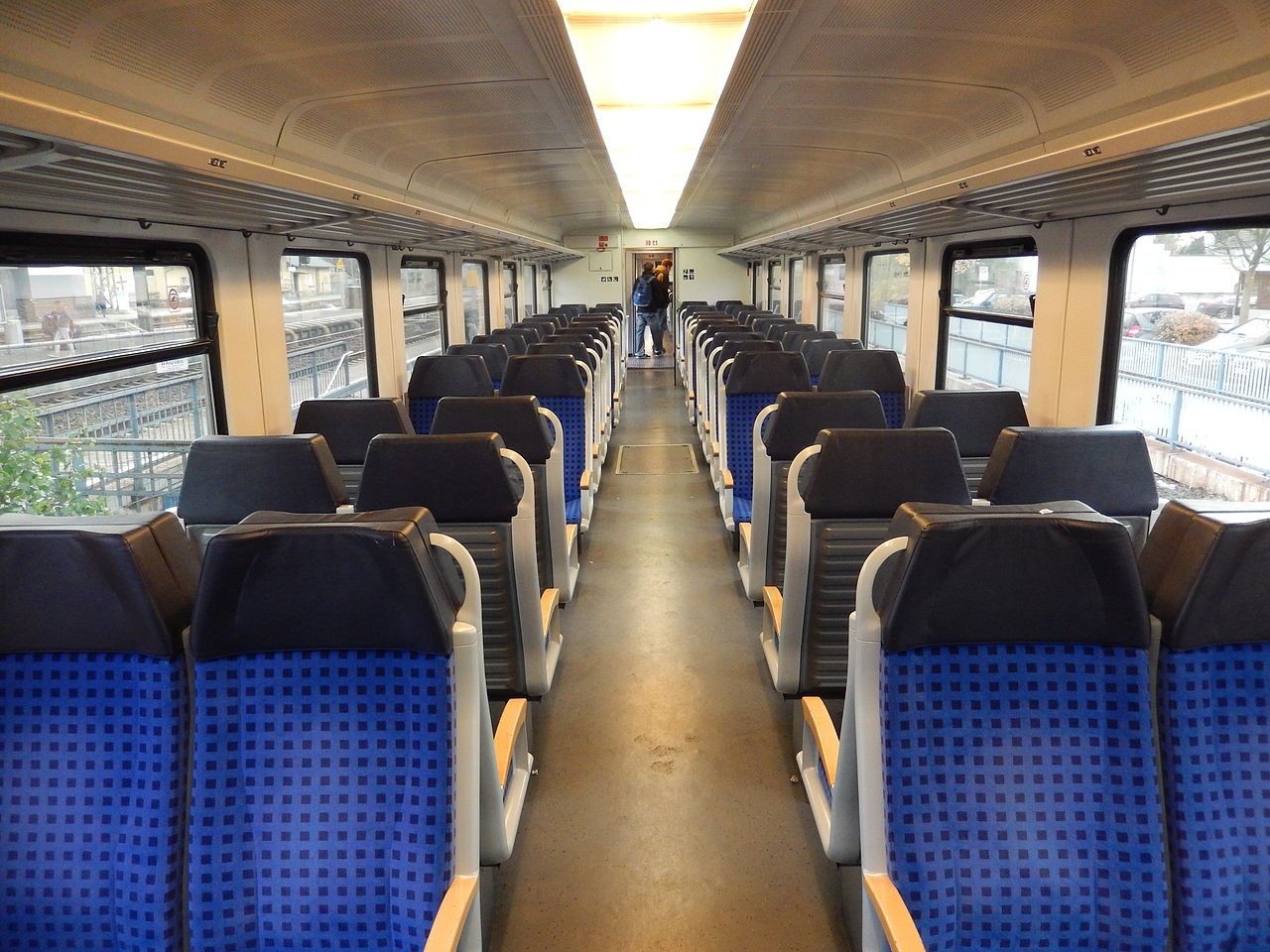
RB second class cabin
StadtExpress, SE
Stadt Express (SE), once called City Bahn (CB), is responsible for train service in mobile areas. It stops at all stations. In core areas of major cities where S-Bahn is available, it runs faster than RE trains. Therefore, it only drops off at major stations in those areas. SE belongs to the local transport system therefore no extra fees will be charged. 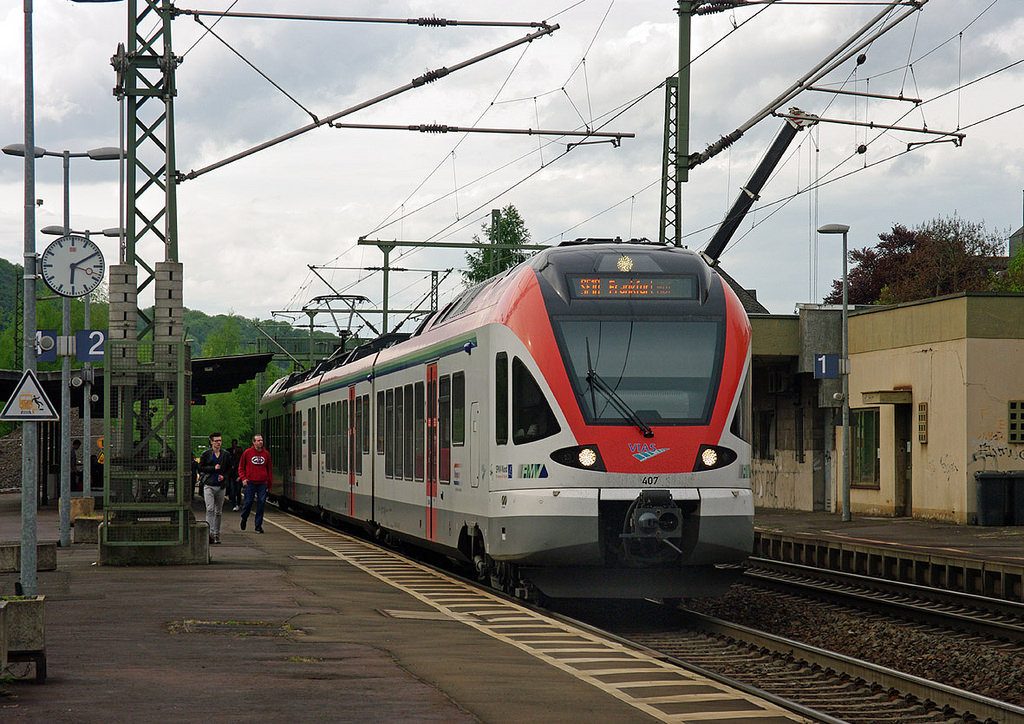
 StadtExpress, SE
StadtExpress, SE
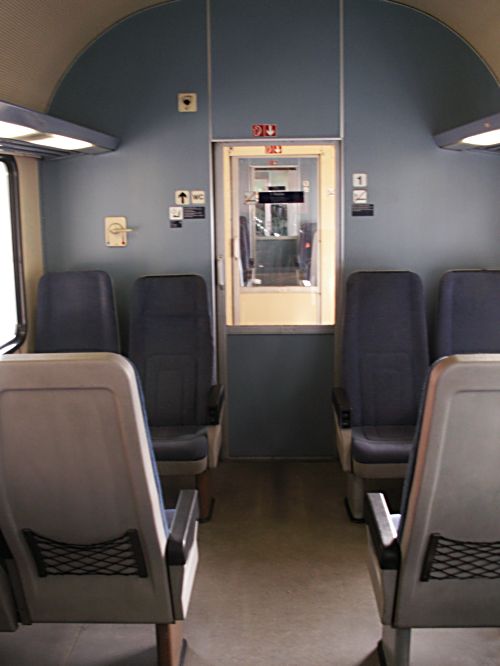
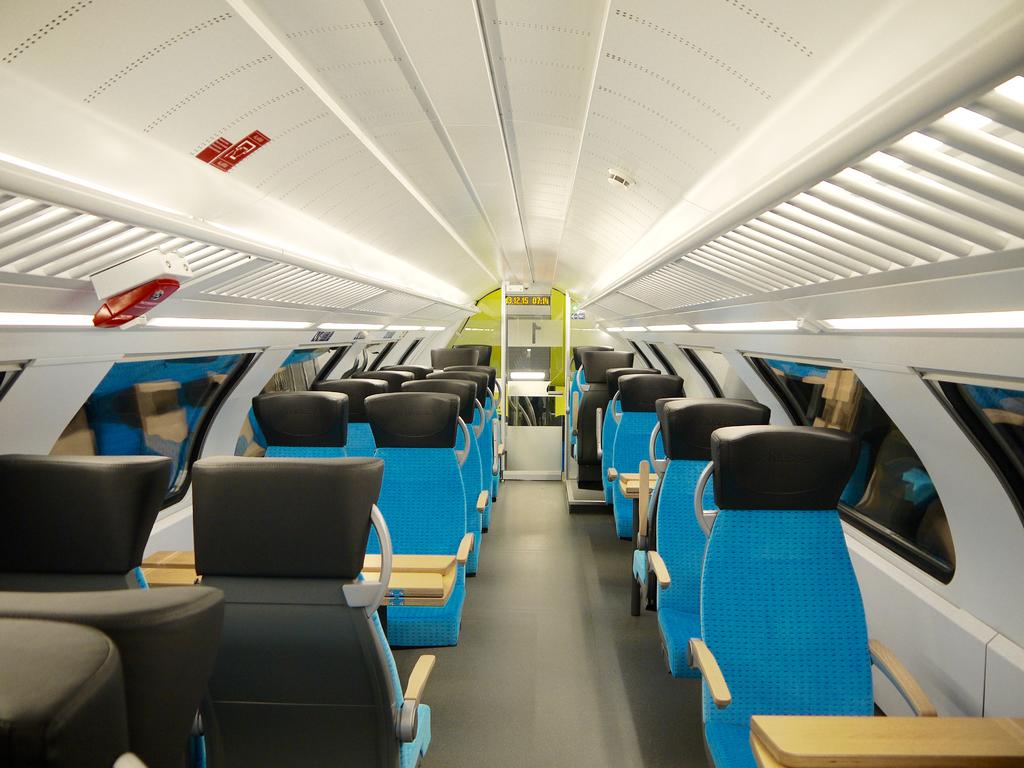
StadtExpress, SE First Class Cabin

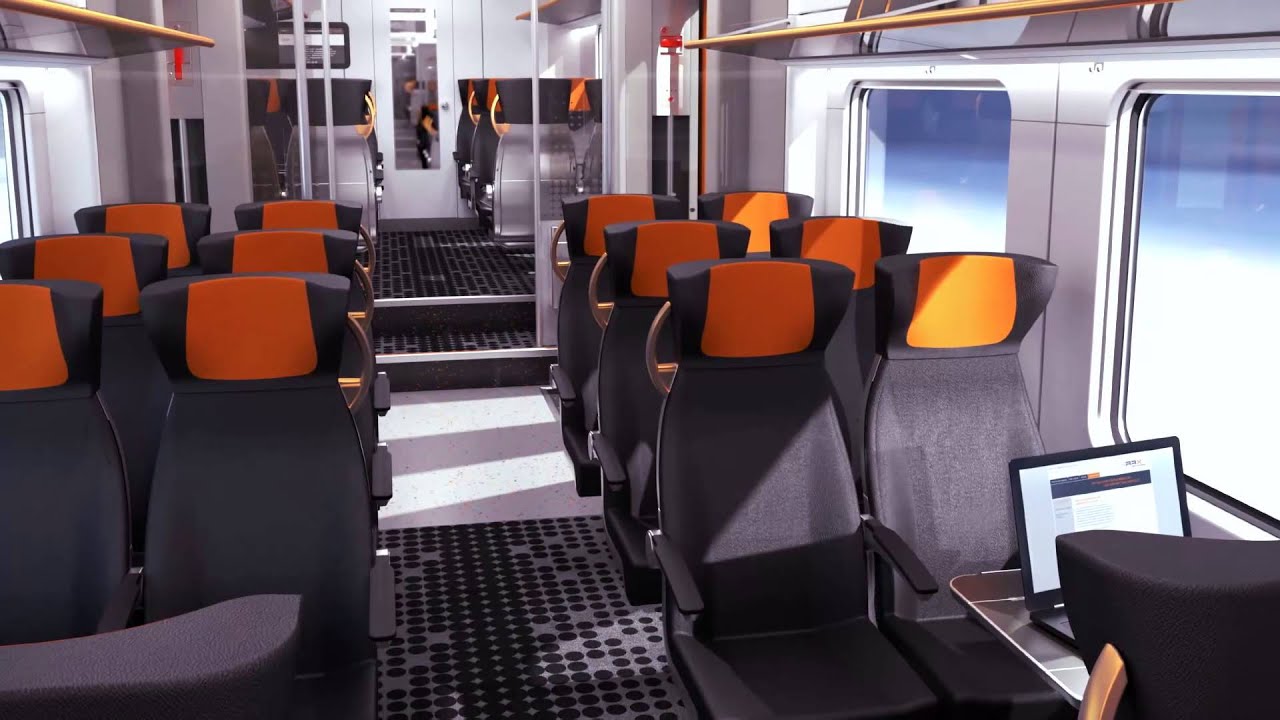
StadtExpress, SE Second Class Cabin
Urban-Rural Train (S-Bahn, S)
S-Bahn is an urban-rural train that serves in big cities. Larger S-train systems provide similar services to the rapid transit systems. Smaller S-train systems resemble district systems. S-Bahn trains are prevalent in Germany and Austria. Depending on the city, ‘S-Bahn’ stands for ‘express’ (Schnellbahn), ‘city rail’ (Stadtschenellbahn) or ‘light rail’ (Stadtbahn).
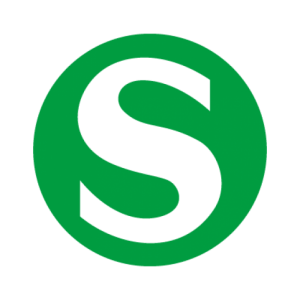
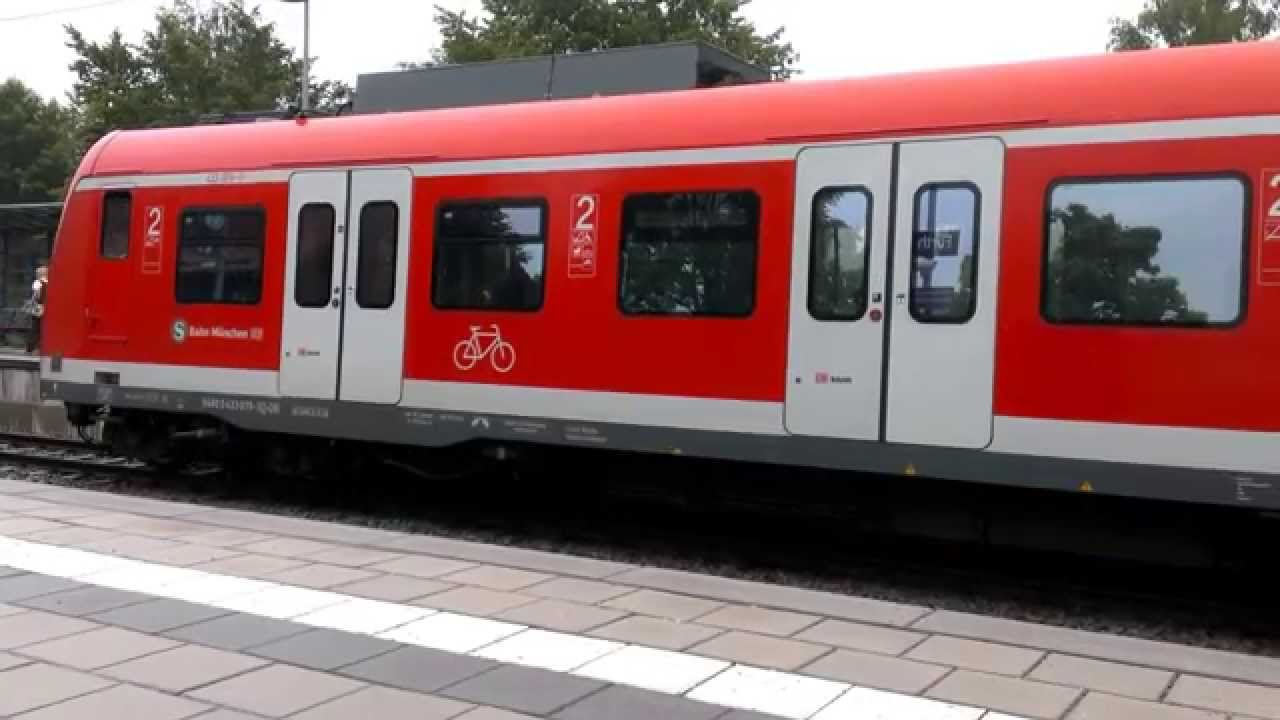 S-Bahn Logo
S-Bahn Logo

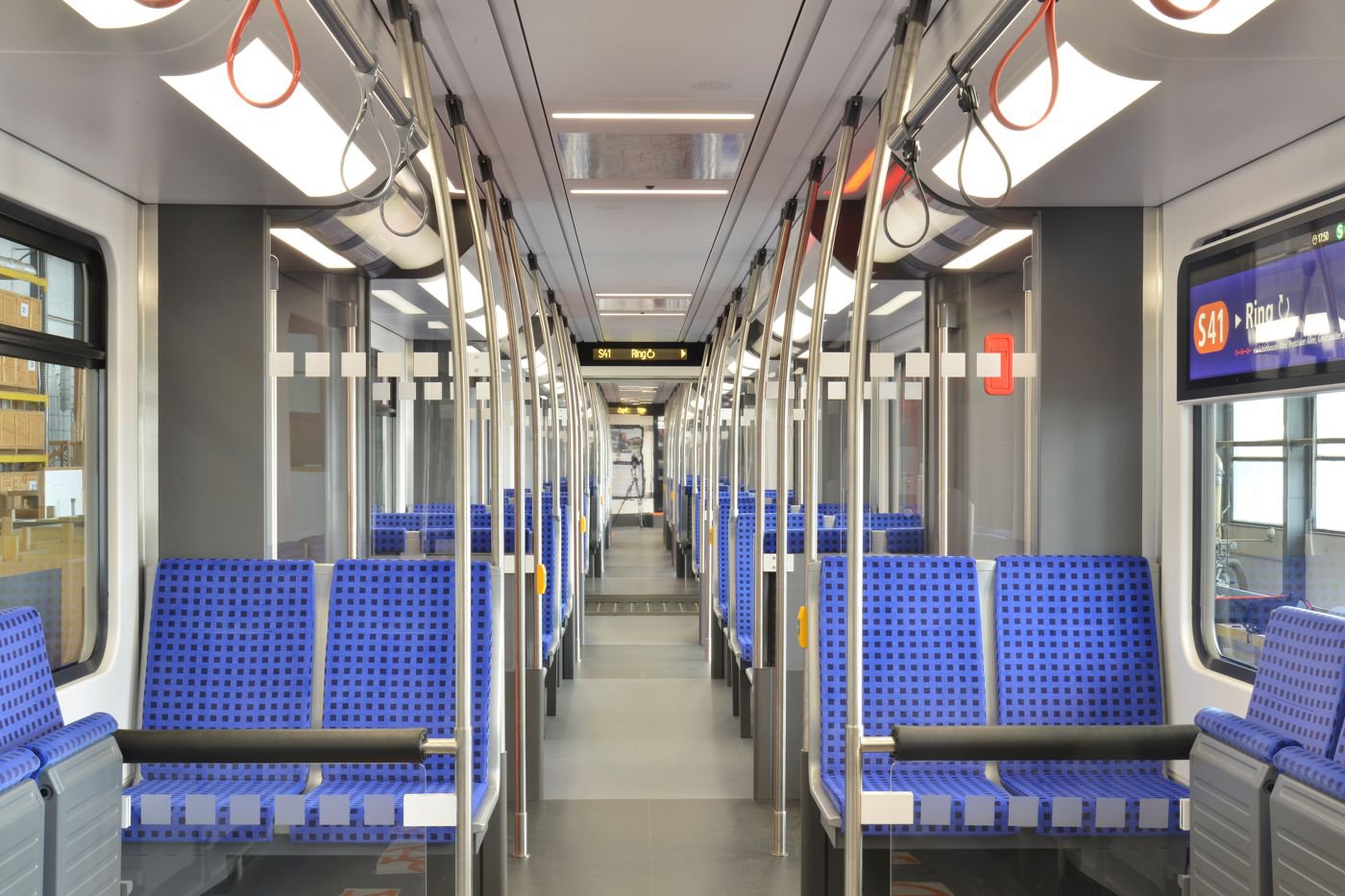
Berlin S-Bahn
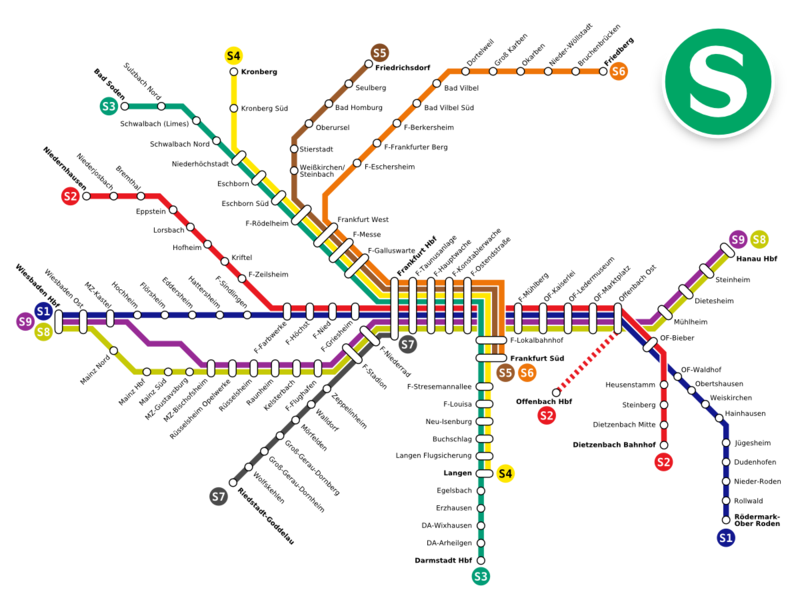
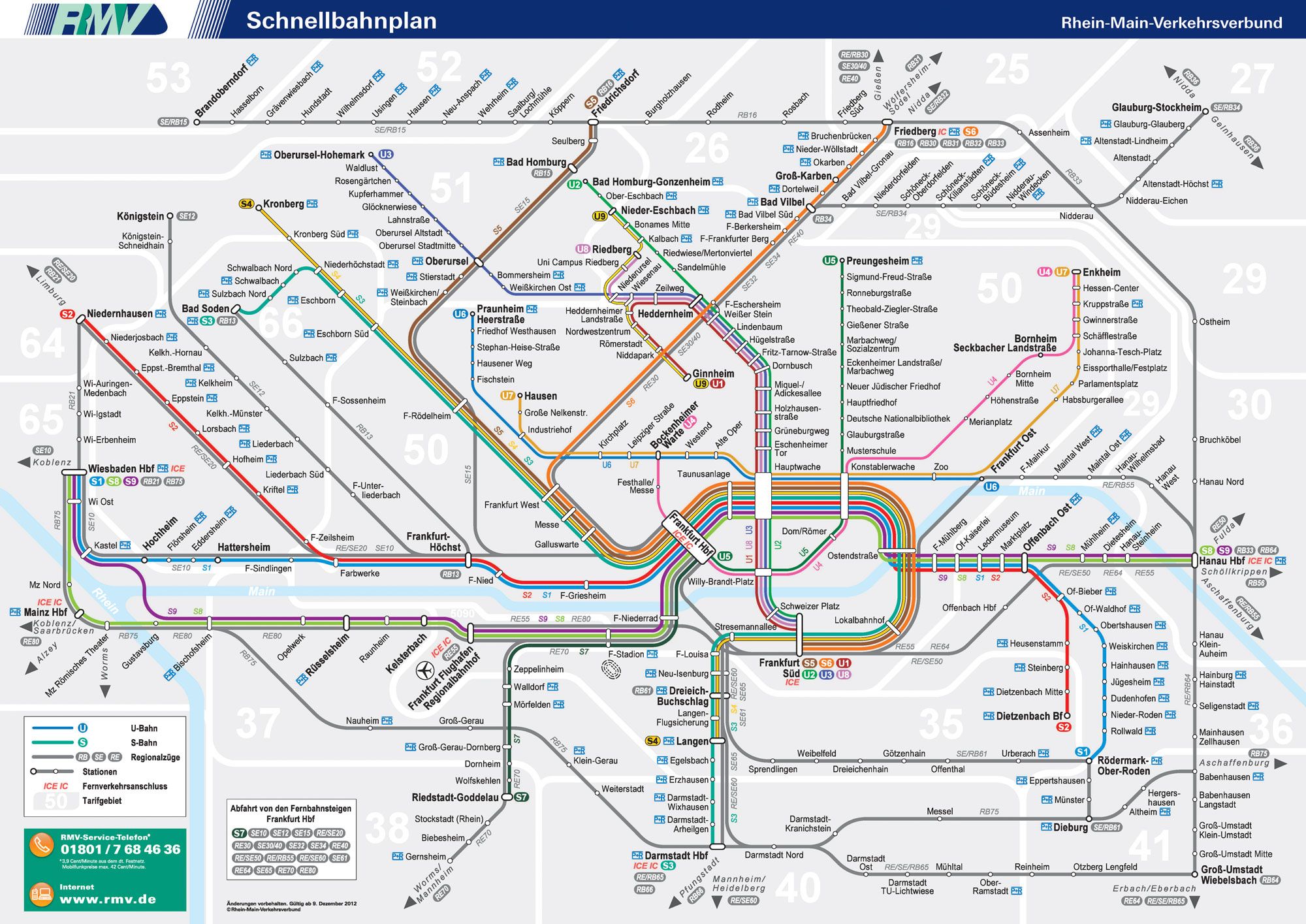
Map of Frankfurt S-Bahn
Tickets
DB provides various ticket types, schedules and discounts. The complicated options available are hard to be understood even for railway officials. On top of this, traveling by trains in Germany can be expensive. Yet with rail passes travelers can worry less.
Rail Pass
Various rail passes are available. Traveling on rail passes is a good choice because they can save you a lot of money if your journey includes three or more long-haul trips within Germany. With a rail pass, passengers can take the train unlimitedly for four to ten days consecutively or non-consecutively. DB also offers flight, driving, commute, holiday and student passes. For details please check www.g2rail.com .DB passes apply on DB buses (Bahnbus) and KD Day Cruises.
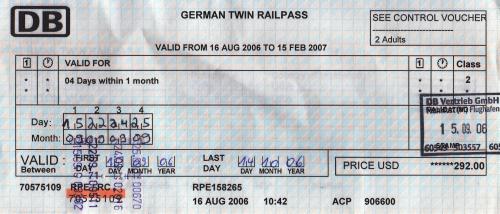
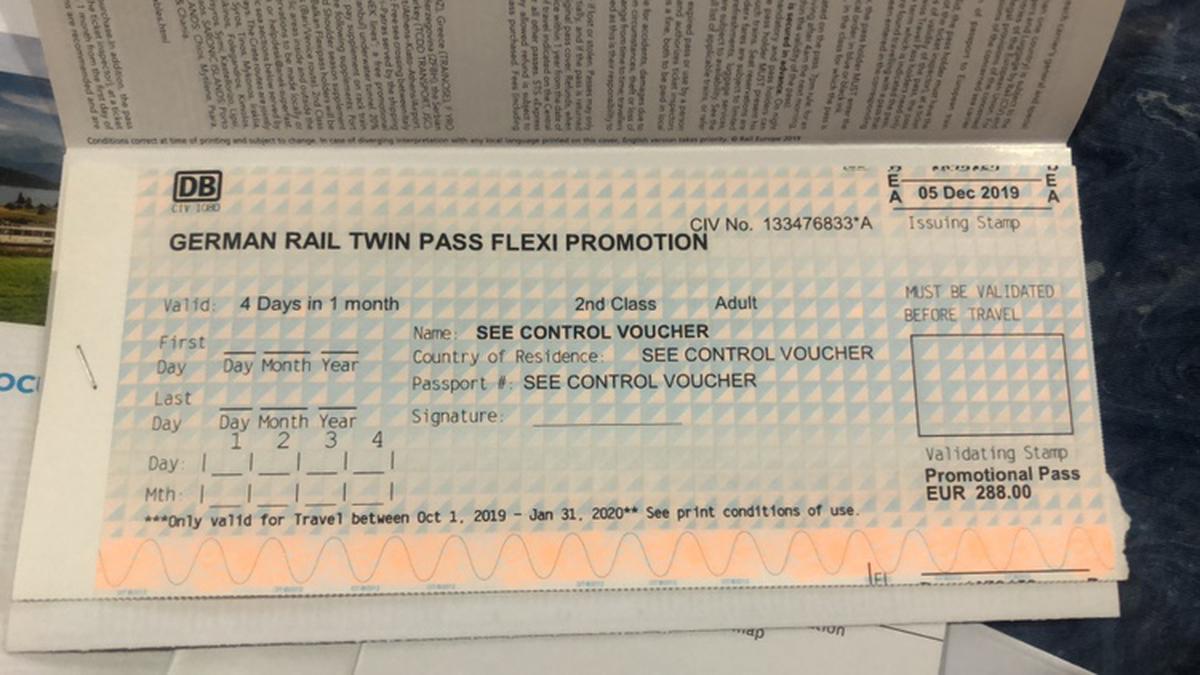 German Twin Railpass (valid dates on the left)
German Twin Railpass (valid dates on the left)
Various Eurail passes can be an option if your trip includes travelling outside of Germany. There are a number of passes covering each country at different times. The passes are unexpectedly useful, and there must be one that suits your special needs. All the passes can be found on www.g2rail.com
Before purchasing a pass, you should estimate the single way ticket price of your trip on DB’s website. If the sum of point-to-point tickets exceed the price for the pass, which is possible if the trip involves multiple long-haul trips, then buying passes is more cost-effective. Therefore, before setting off, you can check the prices on www.g2rail.com
Single Point-to-Point Tickets
Before 2002, most of the ticket fares are charged based on the price per kilometre plus supplementary fees to ensure efficiency. Since the tarrif reform in 2002 and adjustment in 2003, the price system has become increasingly complex, just like the airline ticket systems. Now, various factors determine the ticket price for each route and service category, including distance travelled (long-haul trips are cheaper now), speed, duration and service category. This has given rise to standard pricing (Normalpreis). It provides a range of unimaginable discounts that are far too many to be mentioned in this single article. With the help of G2Rail, the first DB authorised railway agency outside of EU, you can now sit back and browse all the ticket prices offered on the DB official website. The website contains DB’s offerings to overseas tourists and groups.

Train services and the lowest price from Dresden to Frankfurt including ICE and IC trains, on 18/05/2019
Group Point-to-Point Ticket
A group of more than 6 travellers are eligible for group tickets, and it only costs €36 to fix the price 12 months before your trip. The price can be fixed latest by 8 days before departure.

Automatically checks group ticket prices for groups of more than 6 travelers
Group of 6 traveling from Berlin to Frankfurt are eligible for group discount
Special Tickets
These unrestricted DB travel passes are well worth knowing. Though they are invalid on long-distance expresses, they can be used on slower regional trains.
Weekend Tickets(Schönes-Wochenende-Ticket)
DB Weekend Ticket
With DB Weekend Tickets (Schönes-Wochenende), you can use local services (RE, RB, IRE, S-Bahn) unlimitedly to travel across Germany during weekends at a price of €40. Each passenger can bring along at most 4 people and the price per person is €4, so the ticket price for 2 people is €44 and 3 people is €48. Weekend tickets are effective from Saturday 00:00 to Monday 03:00.
They are only available for district trains so only RE, RB, IRE and S-Bahn will show up on the webpage. This implies that it may take more time to complete long-distance trips and may require transits. Still, these tickets have a great value of money: a family of 5 can travel across Germany during the weekend at €56 and it only costs €11.2 per person!
Day Ticket (Quer-durchs-Land-Ticket)
DB Day Ticket
Day Ticket (Quer-durchs-Land-Ticket) is the weekday version of weekend tickets. You can use local services (RE, RB, IRE, S-Bahn) to travel unlimitedly across Germany from 09:00 to 03:00 the next day during weekdays at €44. Each passenger can bring along 5 passengers at most and each additional passenger pays €6.
Same as weekend tickets, IC, ICE and EC trains are not included. Long trips may therefore take up more time, yet it is undoubtedly a cheap transportation especially when no special offerings are available for ICE or IC trains.
Regional Day Tickets (Lander-tickets)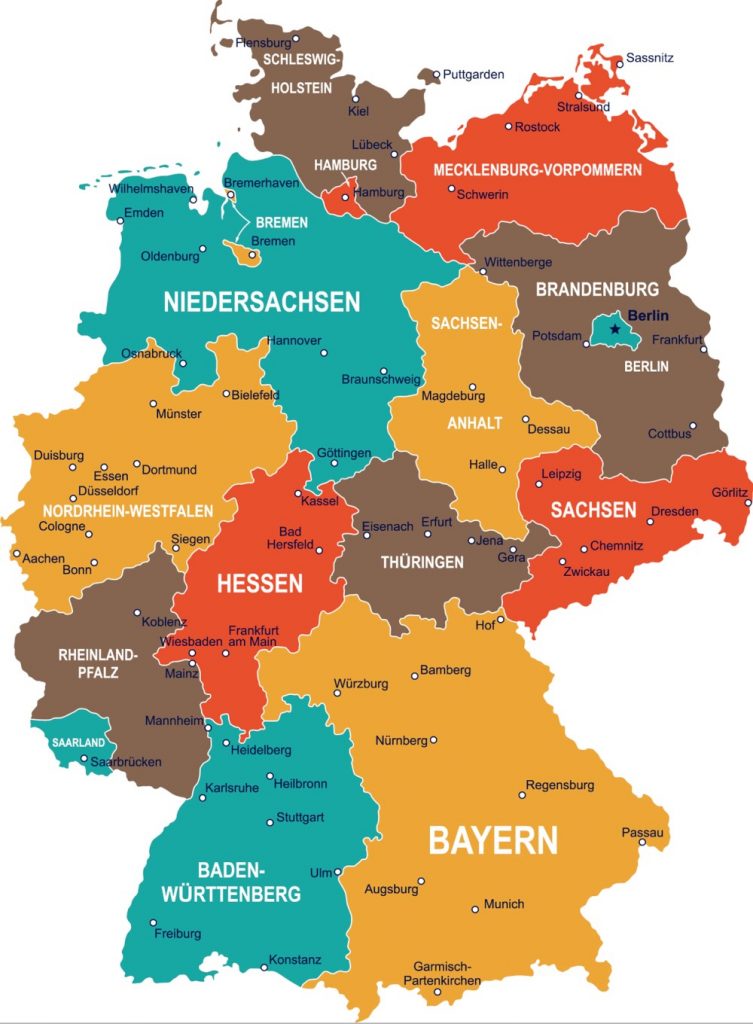
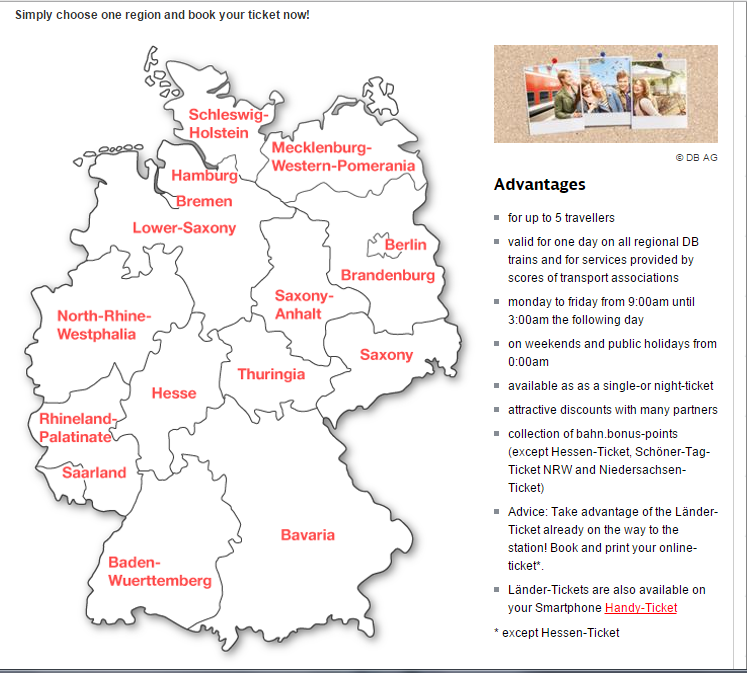 German Federal States Map
German Federal States Map
Regional day ticket is definitely something you do not want to miss. Every German state provides federal tickets. With those tickets, you can enjoy local train services (RE, RB, IRE and S-Bahn) unlimitedly. IC, EC and ICE trains are not included. The Lander tickets currently on offer include Baden-Württemberg Tickets, Brandenburg-Berlin Tickets, Hessentickets, Mecklenburg-Vorpommern Tickets, , SchönerTag Tickets NRW, Rheinland-Pfalz Tickets, Saarland Tickets, Sachsen Tickets, Sachsen-Anhalt Tickets, Schleswig-Holstein Tickets and Thüringen Tickets. The most popular ones are Bayern (Bavaria) Tickets and Lower Saxony (Niedersachsen) Tickets.
Bayern Ticket
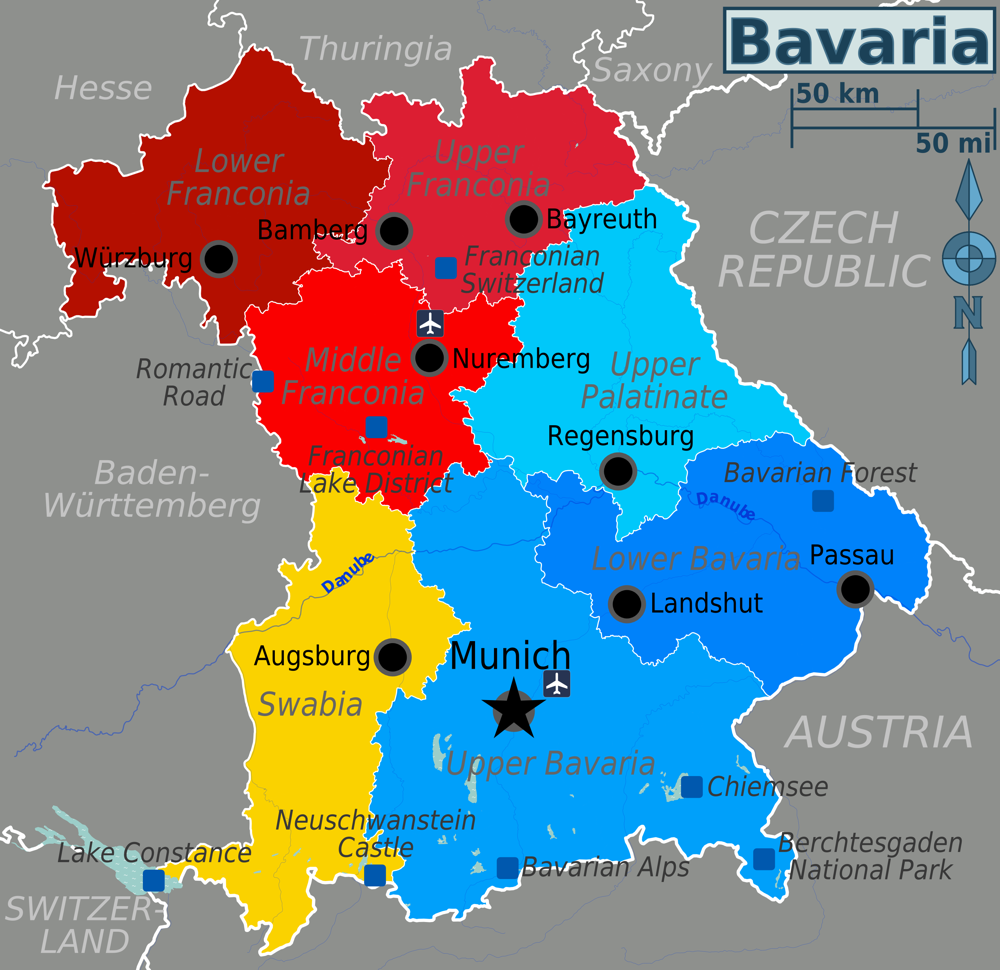
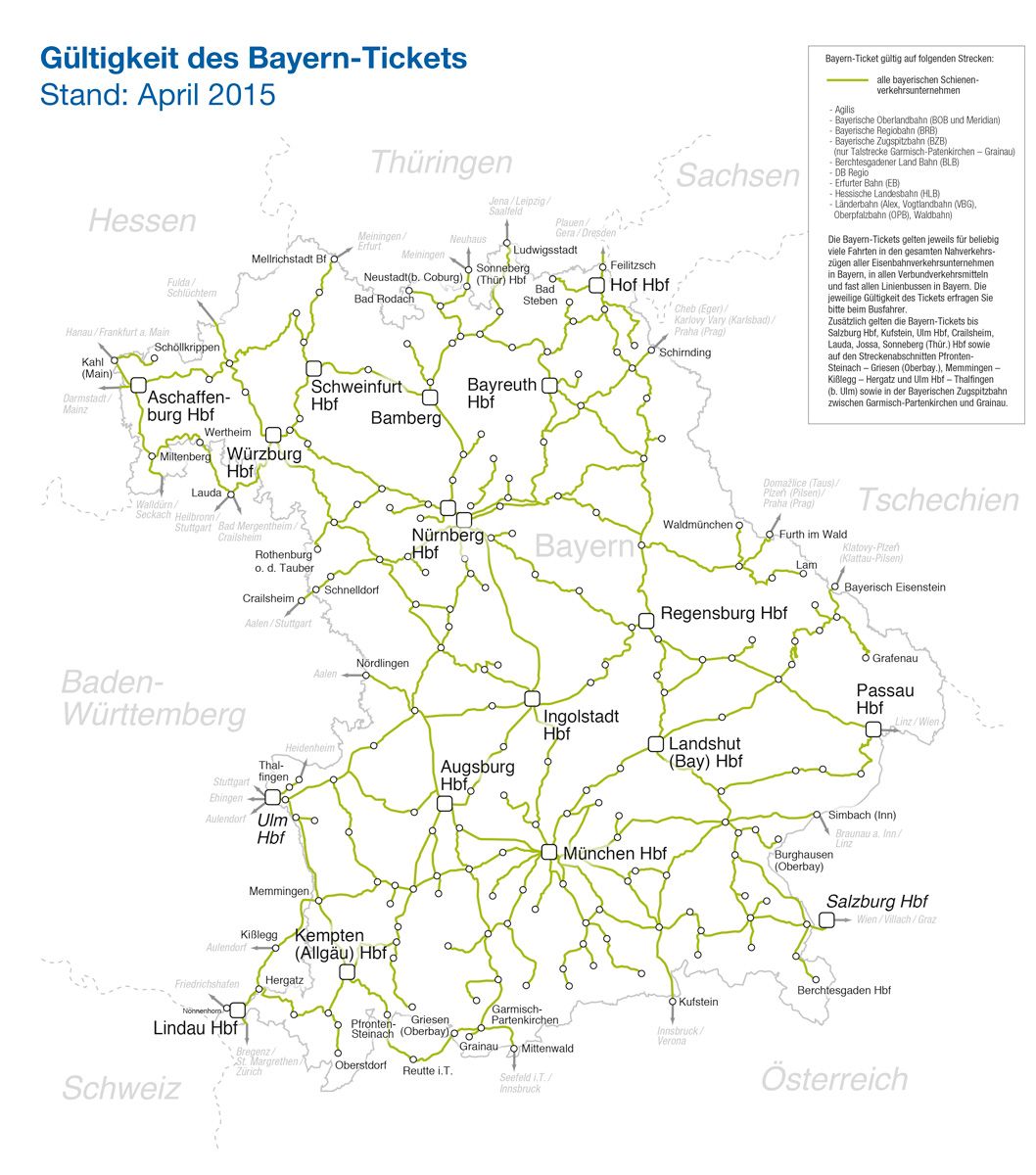
The state of Bayern (Bavaria)
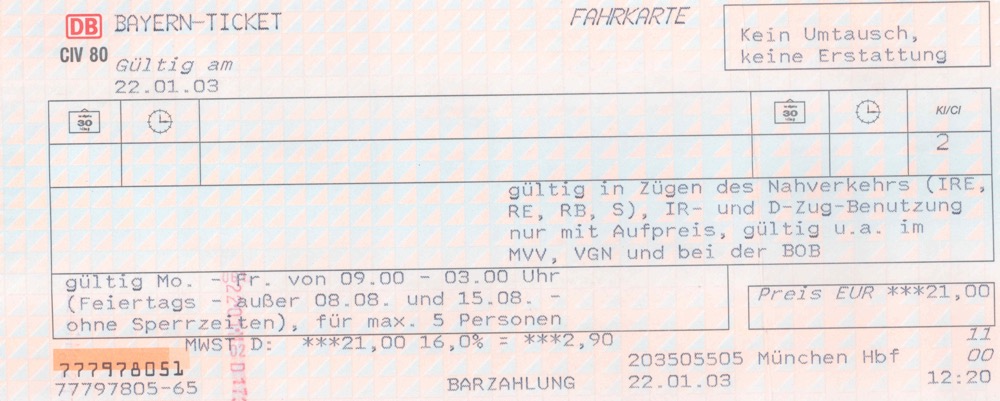
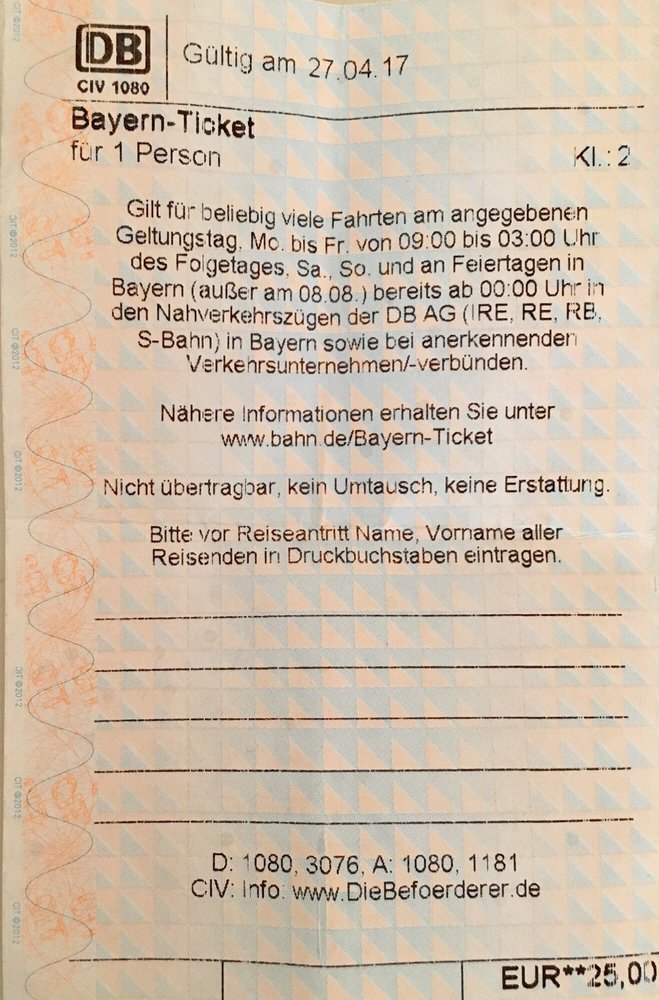 Bayern Ticket
Bayern Ticket
Bayern (Bavaria) ticket is a one-day ticket that allows trips from Munich to Salzberg, Munich to Neuschwanstein Castle or Munich to Berchtesgaden. Solo travellers need to pay €31 for a ticket and each additional ticket costs €6. In most situations, tickets are free of charge for children under 15. The federal tickets enable you to travel across the state of Bayern (Bavaria) for the entire day from 9am to 3am in the next morning or 00:00 to 03:00 on Saturdays and Sundays.
Lower Saxony (Niedersachsen) Ticket
The Lower Saxony Ticket applies on the following states: Lower Saxony, Bremen and Hamburg. It also covers the local transports of Bremen and Hamburg (The A and B Circle of HVV).
One ticket costs €23, and each additional ticket costs €4. So it costs €27 for two people, €31 for three people, €35 for three people and €39 for five people. In most situations, tickets for children under 15 are free of charge. With the ticket you can travel across the Lower Saxony, Bremen and Hamburg area for the entire day with unlimited rides. It is effective from 9am to 3am in the next morning and 00:00 from 03:00 in the next morning during weekends.
Tickets and Special Offers
There are five types of DB point-to-point tickets: full ticket (flexpreis), saver ticket (sparpreis), super saver ticket (super sparpreis), discount ticket and group ticket.

Full Ticket (Flexpreis)
Suitable for travellers who are unsure of their departure time
- Return policy: Full refund if ticket is returned one working before departure. An administration fee of €3 will be charged.
- Time change: possible before, on the day of, within 2 days (for journeys less than 100km) or 4 days (international trains) after departure.
- You do not need to inform the railway company about the change
- Eligible for all transportations between the starting station and the destination (including buses and metros).
- ticket types: electronic tickets (pdf) and mobile tickets (png) will be sent to your mailbox and your phone.
Saver Ticket (Sparpreis)
- You can only ride on the ordered train
- €10 and €3 administrative fee will be charged for ticket return
- Cannot be changed or returned after the trip
- If you would like to change your ticket, you will need to return the old ticket and re-purchase a new ticket based on the price at the moment of return.
- Eligible for all transportations between the starting station and the destination (including buses and metros)
- Ticket type: electronic ticket (pdf) and mobile ticket (png)
Super Saver Ticket (Super Sparpreis)
- You can only ride on the ordered train
- Not changeable
- Not returnable
- Ticket type: electronic ticket (pdf) and mobile ticket (png)
Discount Ticket
- Available to solo travellers and groups with a focus on non-EU visitors. Eligible for all transportations between the starting station and the destination (including buses and metros)
- Return policy: free returns are possible if the request is made one working day before the scheduled time , not allowed on the day of or after departure. Paper tickets need to be posted to the DB Beijing office before your departure. Please be reminded that we only consider tickets that arrive at the office before departure. Return is only possible before collection at the station for numbered tickets.
- Change: Unnecessary. Passengers can choose any time offered for the route within a month after the scheduled time without notifying the railway company.
- Ticket type: Collection by ticket numbers (ticket numbers and way of collection will be sent via email), or paper tickets (sent by express delivery).
Group Ticket
- Definition of group: 6 people pr above
- Tickets can be purchased earliest 12 months before the trip
- Each group can pay €36 as reservation fee six months prior to departure. The fee will be returned later with the ticket. Tickets will be available latest 8 working days before departure. Reserved tickets can be returned for free 8 days prior to departure but the reservation fee is non-refundable.
- In case passengers would like to return the tickets, €22 will be charged per person for partial return and €38 will be charged person for full return
- Change: A fee of €36 will be charged if tickets need to be changed 8 working days prior to departure. Tickets cannot be changed if the request is made less 8 working days prior to departure and after departure.
- Ticket type: paper (express delivery needed)
Ticket Forms
There are four forms of tickets, different ticket types come i different forms.
- Paper Ticket: DB passes and Regional Day tickets are paper tickets. Some cross-border trains such as Warsaw-Berlin only provide paper tickets currently. Paper tickets can only be mailed to passengers’ addresses. Return of tickets is done by mailing too.
- Numbered Ticket (Ticket on Departure, TOD): The discount tickets on g2rail are numbered tickets. Customers need to collect the ticket in person at the station. After payment, travellers will receive a pdf file with details on ticket collection. Numbered tickets are popular because of their flexibility, the price and return policy.
- Electronic Ticket: Electronic ticket comes in the form of an A4 pdf file. Most of the domestic and international trains in Germany are available in electronic form. The electronic tickets must be printed on an A4 paper and shown to DB staff on the train. You will receive the electronic ticket in your registered mailbox few seconds after payment.
- Mobile Ticket: It is a png file of a rectangular paper with a QR code. It is used in Germany domestic trains. You can show your ticket using your phone, no printing is needed. You will receive the ticket in your mailbox as well as in text message after payment.
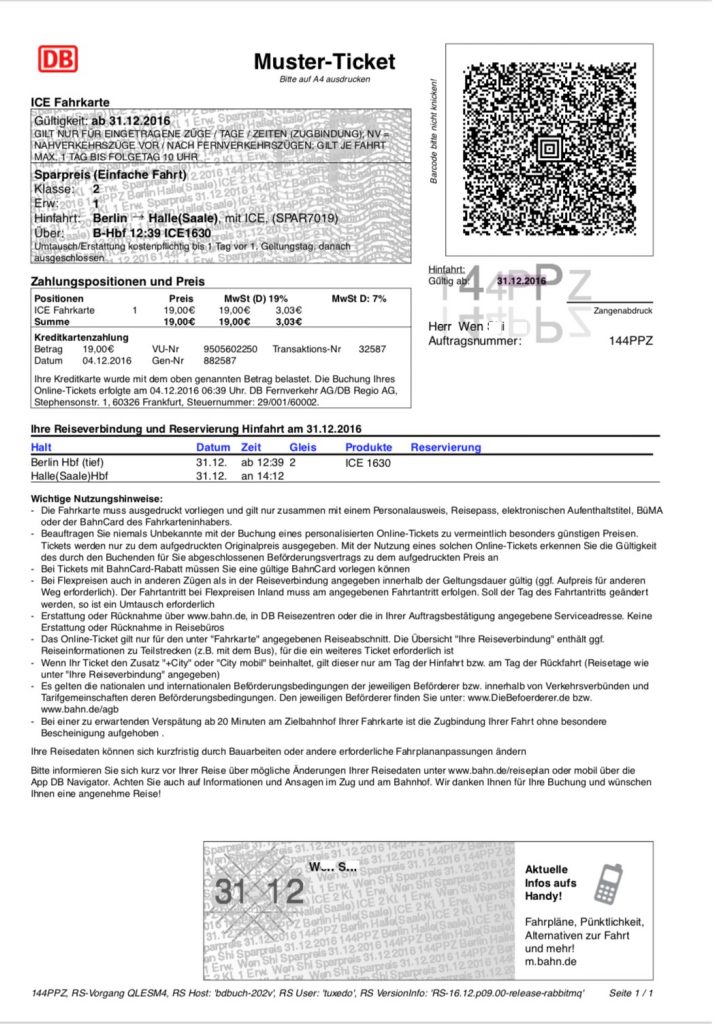
Second-class Cabin Value Ticket (Electronic): From Berlin to Halle

Second-class Cabin Full Ticket (Mobile) from Frankfurt to Berlin

Numbered tickets are available in Db’s automatic tolling machine at train stations
Seat Reservation
Point to Point tickets
Purchasing point-to-point tickets and special tickets only guarantee a train ride but it does not mean that you secure a seat. Most of the time, it is not hard to find a seat. Yet, if you want to secure a seat on popular routes on Friday, Sunday and holidays, you should make a reservation. Reservation is compulsory for some trains and they will be marked with a bold R on the schedule. Reservation and ticket ordering can be separated if seat reservation is not compulsory. You can get discounts for reserving seats and ordering tickets at the same time. Seat reservation can be made
earliest three months before departure.
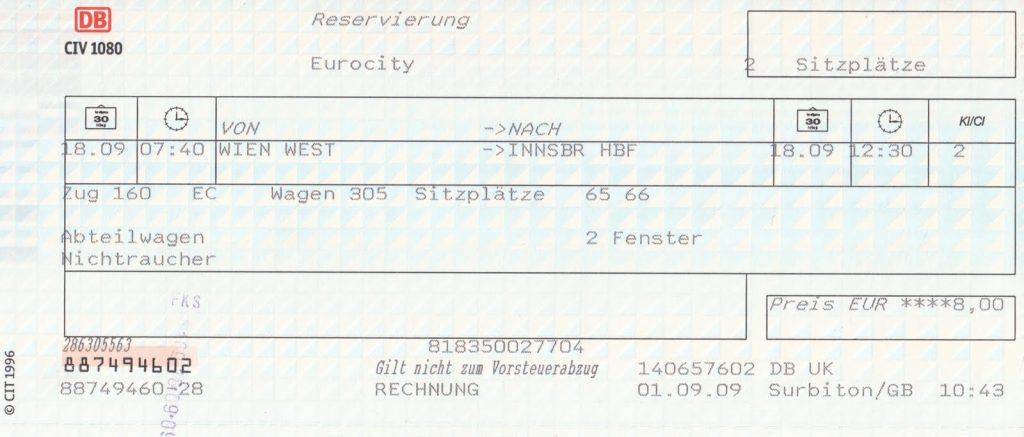
Seat Reservation for Long-distance Trips
You can reserve your seats at the time of ordering or separately. Please note that Full tickets and value tickets already include seat reservation automatically. The reservation fee for each seat in the second-class cabin is €4.5. Family reservation costs only €9.
The standard fee for each reserved seat is €4.5 while it costs €5.5 for first class cabins. If the seats are reserved at the same time of buying tickets, it costs €2 less. An option called ‘family reservation’ is available to groups of 2-5 if tickets are purchased online or by ticketing machine. For this option, first class cabin costs €7 while the rest cost €5. All the options include one free ticket for a transit train.
Various options are available. For instance you can choose between an open coach (Großraumwagen) and a compartment coach (Abteilwagen). Cabins of a compartment coach connect to the corridor. Each cabin consists of 4-6 opposite seats. An open coach is a railway passenger coach that does not contain any compartments and in which the seats are arranged differently. You need to indicate whether you want to sit an a smoking (rauchen) or non-smoking (nicht rauchen) area. Options like window seat (fester), aisle seat (am gang) and table (tisch) are also available.
Seat is automatically reserved for group tickets.
Reservation for Regional Trains
Most of the time, seats do not need to be reserved for IRE, RE, RB and S trains. If you wish to reserve your seats, you need to pay €1 per person for each journey.
Reservation of Sleepers/Couchettes
Reservation is required for sleepers and couchettes. An additional fee will be charged. The additional fee differs according to the accommodation, cabin and travelling distance. For example, the starting price for couchette is €20 while that for sleeper is €40. Although beds can be reserved at anytime before you board the train, since they are usually filled quickly, you should not wait until there are only several days left before your journey to book an accommodation.
If you have a DB pass, you need to write down the date you use it. If it is used for an overnight trip after 7pm, then you only need to write down the date of the next day.
Reservation of Eurail or DB Pass Holders
DB passes do not include seat reservation. Reservations can be made on the website of G2rail. The price for each seat in the second class cabin is €4.5 per person per trip while that fir first class cabin is €5.9. The fee for each family is €9 for second class cabins and €11.8 for first class cabins. From G2Rail Station Help site, you can check live departure board of that station as well as specific reservation train of different trains.
For example, here is screen shot of Frankfurt central station (Frankfurt Hbf) departure boards with Pass seat reservation information.

Stations and Boarding

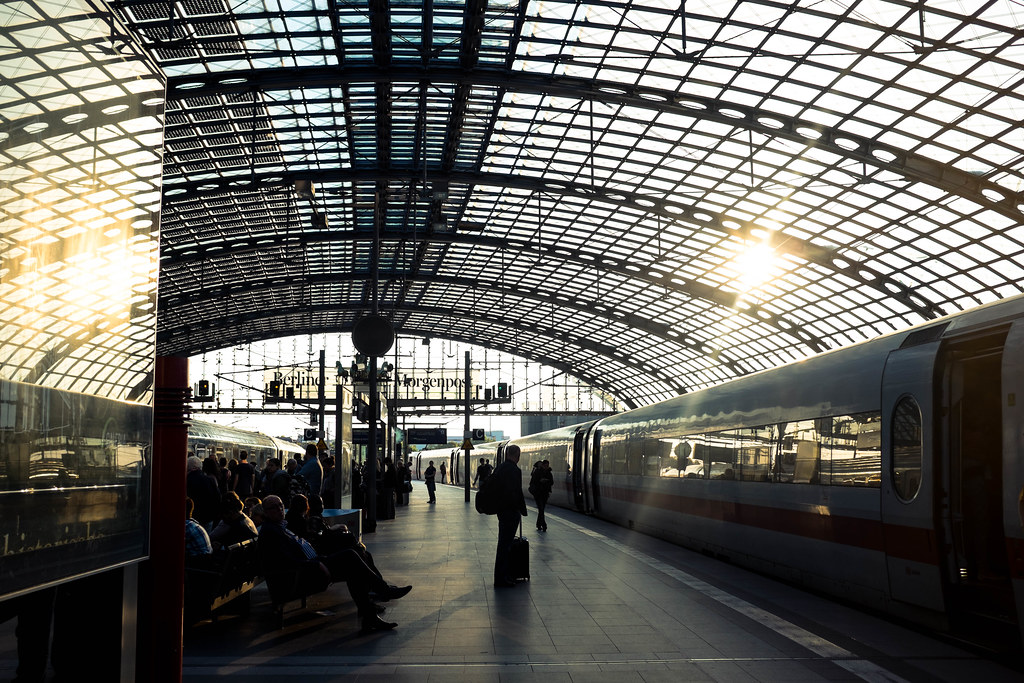
Berlin Hbf

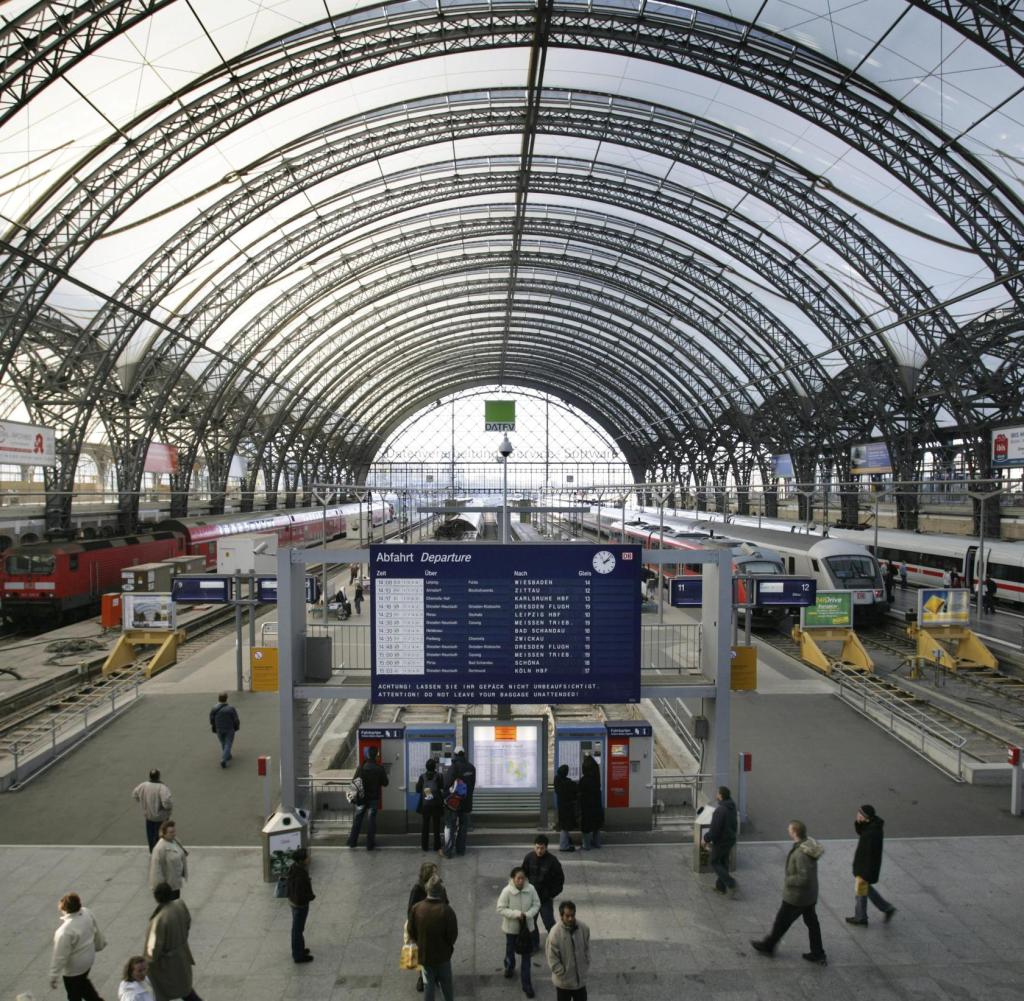
Dresden Hbf
The German for train station is ‘Bahnhof’. If you are in a big city, you will probably call it Hauptbahnhof, central terminal or Hbf. Stations are often located in the city centre but for those in a town they are usually on the outskirt. You can find stations in the countryside of a big city too. There used to be several main stations in Berlin, including the well-known Berlin Zoologischer Garten Station as the main station on the west and Ostbahnhof (called Hauptbahnhof before 1998) on the east. With the opening of a new central terminal on the Spree River opposite to the Reichstag Building, other Berlin stations serve mainly domestic routes. Berlin Hbf is the biggest station in Europe decorated with a 5-floor tall glass wall. On average, one train departs every 90 seconds. On the other hand, some rural stations only consist of a platform and very few trains are available each day.

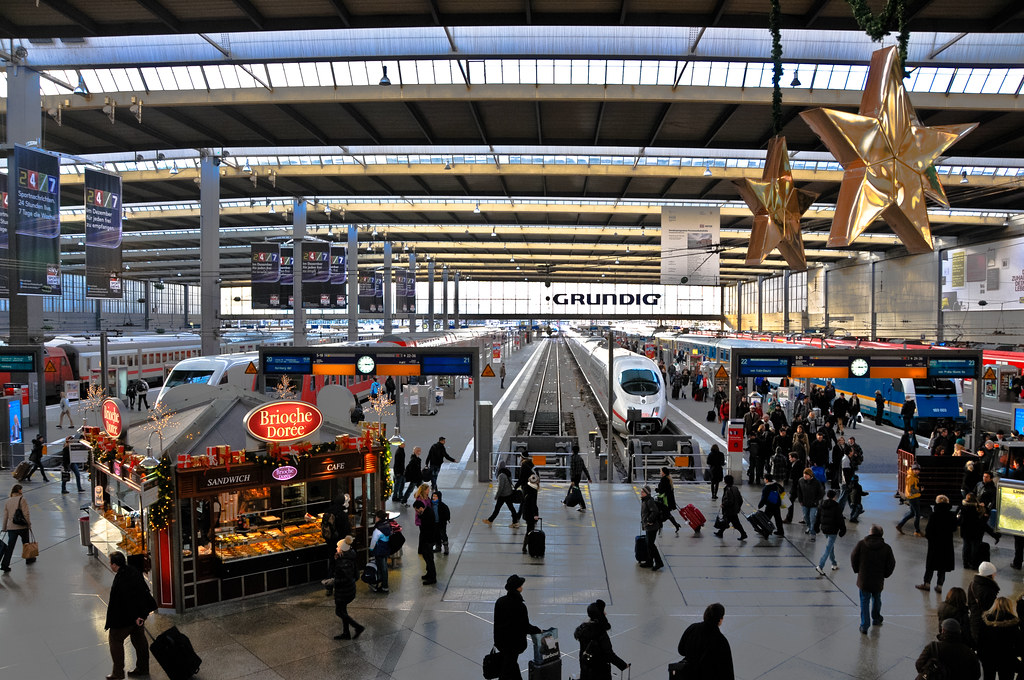
Interior of Munich Hbf


Frankfurt Hbf Map
When you arrive at the station, you will find that bigger stations are usually located in cities. Many stations now have shopping malls. Shops and restaurants have long opening hours and some of them open for 24 hours. Help desks, ticketing counters and luggage storage are available in most stations. Banks and currency exchange can be found in bigger stations. Some stations even contain a hotel. Many of them are located in historical buildings and a number of them have been renovated. Please visit G2rail for more details of Germany train stations.
All the signs in the stations are based on the international standard. These are some of the widely used signs

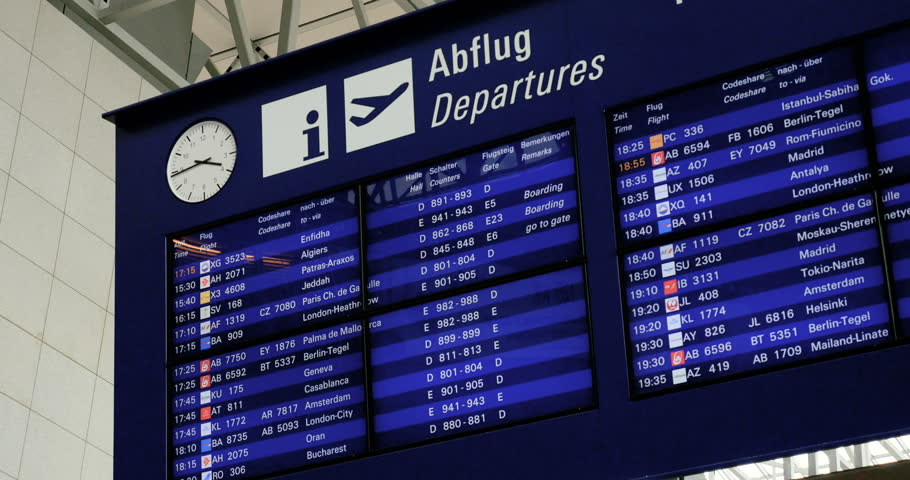
Flight Information Display Board in Frankfurt Hbf
Flight information displays are all over the station. There are two types of display boards, arrival(ankunft) and departure (abfahrt). Arrival information is available in yellow while departure information is available in white. The order of arriving and departing trains are arranged chronologically from midnight. Time is shown in the 24-hour format, so 1 pm is represented as 13:00. The symbols refer to services on the train, order requirements and available time slots. You can try cracking the code using the image below. Express trains are listed in red. The display also includes the train number and the track number. In major stations, a big electronic display shows the trains arriving within an hour and their current conditions. Make use of these information to get to the correct platform.
Refer to your ticket, pass or ordering receipt to get to platform. Look for the correct train and board at the platform. If you reserve a bed, you can settle down in the corresponding cabin. You must check in with staff for orders including sleepers or couchettes. The staff will lead the way.

Station Display Board
When you arrive at the platformm, please refer to the display board for the location of your train. The screens show the code and the category of the next train, the destinatio and the arrival/departure time. Please be reminded that if you get there early the screen may show the previous train but not your train. There will be a sign ion the screen indicating the locations of the first class and second class cabin. Most of the time a very useful graph called ‘Wagenstandanzeiger’ can be found on the platform,. This graph shows the main components of the train parked at the track and their location on the platform with reference to the letter on the floor. If you have reserved a seat, please check the code on your ticket after ‘wagen’ and find the corresponding letter on the graph that leads to the right car. You will find yourself only a few steps away from the car the the train arrives. If you have not booked a seat, please check the location for first class and second class cabins and wait for the train. First class cabins are shown in yellow while second class cabins are shown in green. The final destinations for each train are shown on the upper column of the graph. Please refer to the picture below:


Wagenstandanzeiger

The departure time and train number are listed on the left, followed by any special notes of the train (eg parts pdf the trains that will be sent to different destinations), the destination list of train services and the graphical representation of the train layout with green second class Car, red restaurant or bar car, yellow first class car and blue sleeper car. The white squares on each car show the car number, and on the right side of the number are symbols that indicate specific information of each car (eg, smoking, seat type, etc.). Listed above each car is its final destination, and along the top and bottom of the chart are letters that correspond to the letter marks above the platform to estimate where each car will be parked along the platform. The orange dot shows your current location.
Sometimes the train platform may change at the last minute. This is usually announced through the speaker. If you understand what the announcement says, be aware of the reactions of people with whom you are traveling. If everyone complains and starts to walk away, you can bet they just announced the change, so rush to the new platform with everyone. Such changes are usually posted on the main board and platform indicators. For example, if the sign on platform 4 lists your train, but the appendix is “auf Gleis 12”, it means your train has moved to track 12.
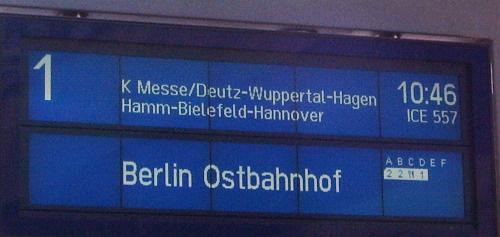
The new LCD platform indicator indicates that this is platform 1, the next train is ICE 557, separated at 10:46 to Berlin Ostbahnhof, passing Cologne Exhibition Center / Deutz, Wuppertal, Hagen, Hamm, Bielefeld and Hannover. The second class car will be parked in Zone A and Zone B, the dining car in Zone C and the first class cabin in Zone D.
Please note that sometimes the train will plan to split the vehicle and switch to other trains on the way (or just off track). This means that you must verify that the vehicle you are boarding is heading to the right destination. You can use the Wagenstandanzeiger mentioned earlier to determine in advance, or, when the train arrives at the platform, check the signs on or near each door of the train, listing the train and vehicle number, the origin and destination, and the intermediate station. Older trains still use paper signs; newer trains have beautiful electronic displays. Make sure you see your goal on the car you are boarding, or you can end up nicely on another continent. If in doubt, please ask the conductor.

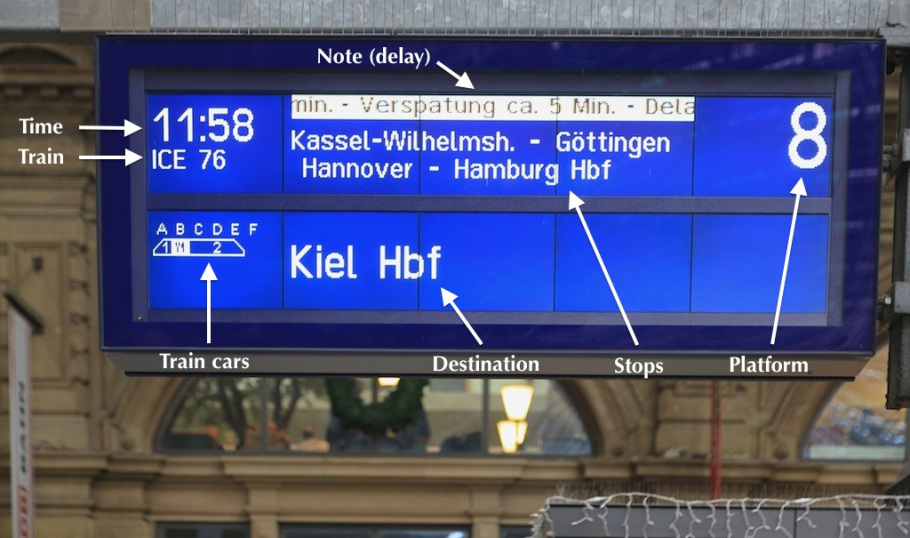
The car number and destination sign (left) indicate that this is the 15th car on the IC 2110 from Stuttgart via Heidelberg, Mannheim, Mainz and Bonn to Cologne. The rating and seat number indicator (middle) shows that this is a second-class compartment, including a smoking area and a non-smoking area, and the seating number 81-126 is located at this end of the car. The new electronic indicator (right) shows this is the second class compartment #22 on the ICE 511 from Cologne to Munich. The middle row has a scrolling list of intermediate stations.
Once you are ready, wait until people finish getting off the train before you board the train. If no one is waiting to get off the car, the door may not open – you need to find a button or handle to open the door.
Make sure you arrive at the platform before the scheduled departure time of the train. Although some trains may have a long stay, especially at the main station or the starting point of the line, most trains only stay for a few minutes. Connections are carefully timed and must be run on time. If you are one minute late, you will almost certainly miss your train!
The captain will whistle before departure and may call “Alles einsteigen!” (“Everyone boarded the car!”) Soon after, the door will automatically close.
Main Stations
- Berlin Hbf
- Aachen Hbf
- Aschaffenburg Hbf
- Augsburg Hbf
- Bamberg
- Bayreuth Hbf
- Schweinfurt Hbf
- Bielefeld Hbf
- Bochum Hbf
- Bonn Hbf
- Braunschweig Hbf
- Bremen Hbf
- Crailsheim
- Singen(Hohentwiel)
- Dortmund Hbf
- Düsseldorf Flughafen
- Düsseldorf Hbf
- Duisburg Hbf
- Solingen Hbf
- Stuttgart Hbf
- Essen Hbf
- Flensburg
- Frankfurt Hbf
- Freiburg(Breisgau) Hbf
- Friedberg(Hess)
- Friedrichshafen Stadt
- Fulda
- Göttingen
- Trier Hbf
- Günzburg
- Tübingen Hbf
- Hagen Hbf
- Hamburg-Harburg
- Hannover Hbf
- Heidelberg Hbf
- Hildesheim Hbf
- Ulm Hbf
- Homburg(Saar)Hbf
- Horb
- Immendingen
- Ingolstadt Hbf
- Kaiserslautern Hbf
- Karlsruhe Hbf
- Kassel Hbf
- Koblenz Hbf
- Köln Hbf
- Krefeld Hbf
- Ludwigsburg
- Lübeck Hbf
- Mainz Hbf
- Mannheim Hbf
- Wiesbaden Hbf
- Witten Hbf
- Mönchengladbach Hbf
- Mülheim(Ruhr)Hbf
- Würzburg Hbf
- München Hbf
- München Ost
- Münster(Westf)Hbf
- Wuppertal Hbf
- Neuss Hbf
- Neuwied
- Frankfurt(M)Flughafen
- Nürnberg Hbf
- Oberhausen Hbf
- Offenburg
- Oldenburg(Oldb)
- Osnabrück Hbf
- Recklinghausen Hbf
- Regensburg Hbf
- Reutlingen Hbf
- Rotenburg(Wümme)
- Saarbrücken Hbf
- Schwäbisch Hall-Hessental
- Marburg(Lahn)
- Offenbach(Main)Hbf
- Germersheim
- Albstadt-Ebingen
- Arnsberg(Westf)
- Berchtesgaden Hbf
- Bönen
- Frankfurt(Main)Ost
- Frankfurt(Main)Süd
- Frankfurt(Main)West
- Füssen
- Garmisch-Partenkirchen
- Gütersloh Hbf
- Hamburg Airport
- Hamburg Hbf
- Hannover Flughafen
- Heimstetten
- Kassel-Wilhelmshöhe
- Köln Messe/Deutz
- Konstanz
- Kronach
- Hannover Messe/Laatzen
- Lorch(Rhein)
- Metzingen(Württ)
- Mühlheim(Main)
- München-Aubing
- München-Pasing
- München Flughafen Terminal
- Norf
- Oeventrop
- Meerbusch-Osterath
- Rothenburg ob der Tauber
- Rutesheim
- Siegburg/Bonn
- Wattenscheid
- Weilimdorf
- Westerland(Sylt)
- Winterbach(b Schorndorf)
- Wolfsburg Hbf
- Wuppertal-Unterbarmen
- Stuttgart Stadtmitte
- Schwieberdingen
- Berlin-Lichtenberg
- Dresden Hbf
- Dresden-Neustadt
- Eisenach
- Leipzig Hbf
- Magdeburg Hbf
- Rostock Hbf
- Stralsund Hbf
- Weimar
- Arnstadt Süd
- Berlin Gesundbrunnen
- Göttingen
- Ludwigshafen (Rh) Hbf
- Stuttgart Hbf
- Frankfurt (Oder)
- Frankfurt(M) Flughafen Fernbf
- Köln Messe/Deutz Gl.11-12
- Berlin-Tegel (S)
- München ZOB (Hackerbrücke)
- Berlin Flughafen Tegel
- Bonn Hbf (tief)
- Berlin Hbf (tief)
- München Hbf Gl.27-36
- München Hbf Gl.5-10
Boarding
Once you board the bus, you should find your seat. If you have a reservation, you will need to find the designated seat. The seat number iis clearly posted. In an open car, the seat number will be on the track above the seat. In the cabin, the seat number is displayed outside the cab. The reserved seat is marked with a small ticket in the small plastic doohickey next to the seat number. On newer trains, there is a small electronic display that shows seat reservation information. If you need help finding your seat, ask the conductor. If someone is already sitting on your reserved seat, just indicate that you made aa reservation (“Entschuldigung, ich habe diesen Platz reserved!“) Most Germans will happily leave their seats (real or pretend) and wish you a nice trip. Be sure to claim your seat as soon as possible – if you do not receive your seat within 15 minutes of your departure, the reservation will be considered expired.
Paper reservation label for the carriage (left) and electronic reservation display in the convertible (right)

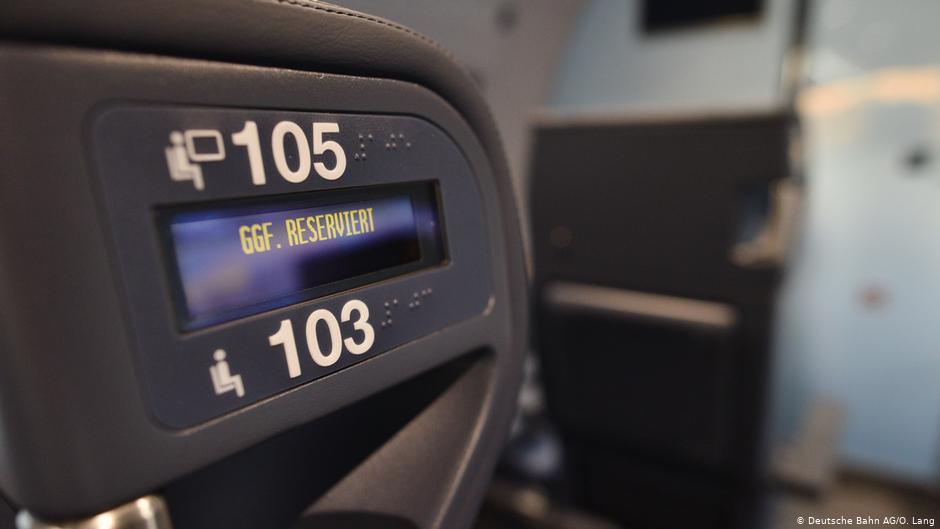
The booking above shows that the seat #46 from Bochum to Nuremberg is reserved, while the aisle seat #48 from Cologne to Munich is also reserved. So, if you plan to get off before Cologne, you can use seat #48 without much of a problem, as the booking starts with the person who will board the train in Cologne.
If you have not booked a seat, please find an empty seat and check if there is a reservation. If the seat has been reserved by someone, the booking will indicate the route portion of the reserved seat. If your trip does not include this section, you can have a seat. Otherwise, you might sit there until you reach the section and declare your seat. Before you sit down, you should ask if the nearby passengers can make sure that they are not squatters (“Ist hier noch frei?“). Please note that there are seats for people with children (posted as “Kleinkinder“), the disabled (“Schwerbehindert“) and that the railway is expected to sell at the last minute (usually labeled “ggf freigeben“, which means “reserved seat” ); if they are vacant, you can sit, but if someone says they have reserved seats, you have to move.

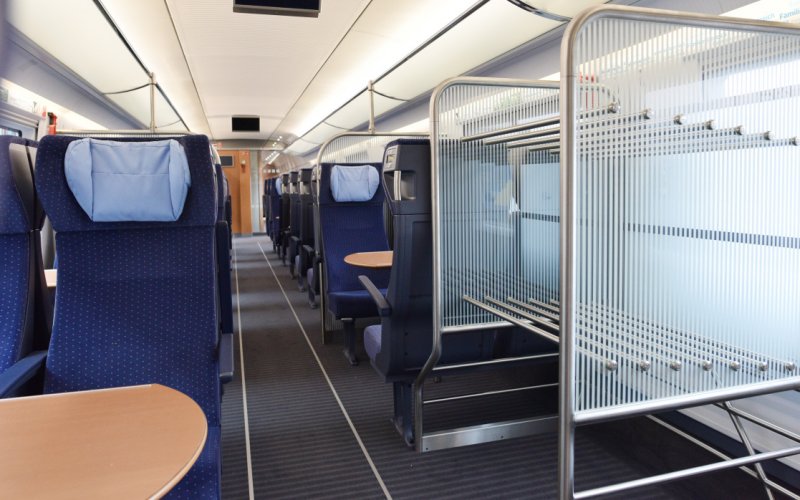
Munich – Hamburg ICE 4 First Class Luggage Rack
You can store your luggage on a shelf above your seat. Baggages are usually stored at both ends of the car unless you have a chain lock or can easily see the baggage area.
At the scheduled time, the train will leave. Leaving is usually very smooth, and you may not even notice that you are moving unless you notice the window.
Check in
Once the train has been running for a while, the conductor will pass and ask for the ticket. If you have just boarded a car, please show your ticket (if your pass requires proof of age or proof of residence, show your passport). The conductor will punch or stamp and return it to you. You do not need to show it again during your trip unless there are staff changes. Some areas and local trains no longer have captains – passengers on these trains are on the credit system. You must purchase all tickets and reservations before boarding these trains. Regular check-ups impose high fines on those who do not have valid tickets. Oh, don’t try to hide in the toilet – they won’t be interesting for some reason.
Facility
Once you have settled down and checked your ticket, you can roam on the train (be sure to carry your ticket with you.) The bathroom facilities (WC) are located at both ends of the car and you can use the toilet at any time. But it’s important to note that you still should not use water in the sink as drinking water. On the ICE and some of the newer trains, there are electronic displays on both ends of the train that show the train’s itinerary, estimated arrival time and train speed. Some of them even allow you to check the connection schedule (although I haven’t seen one yet). Most high-end trains have taverns, cafeterias, restaurants or recreational vehicles that serve a variety of food, snacks and drinks, including beer and wine. Some trains will have a small snack cart through the car. On the train, you can also interact with others and get a sense of belonging with other travelers. I was having a lot of interesting conversations with people while waiting in line to drink.
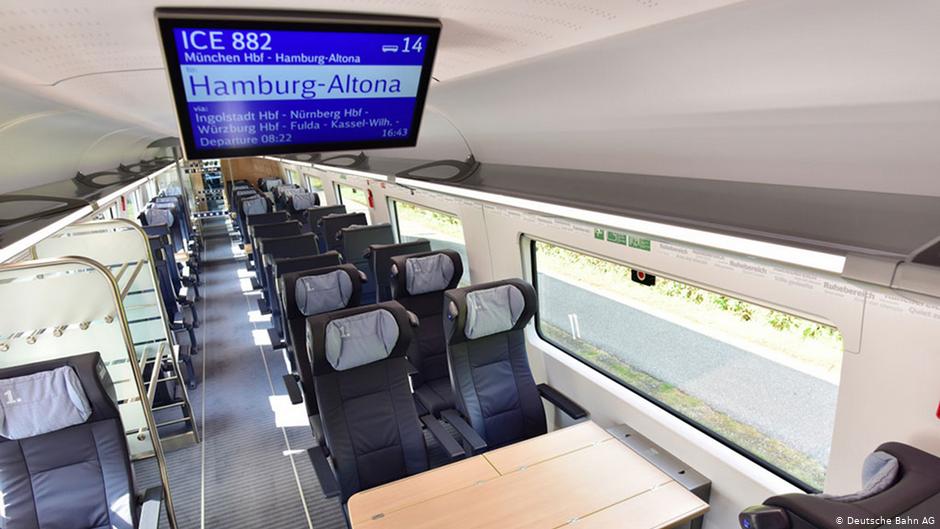 Getting off
Getting off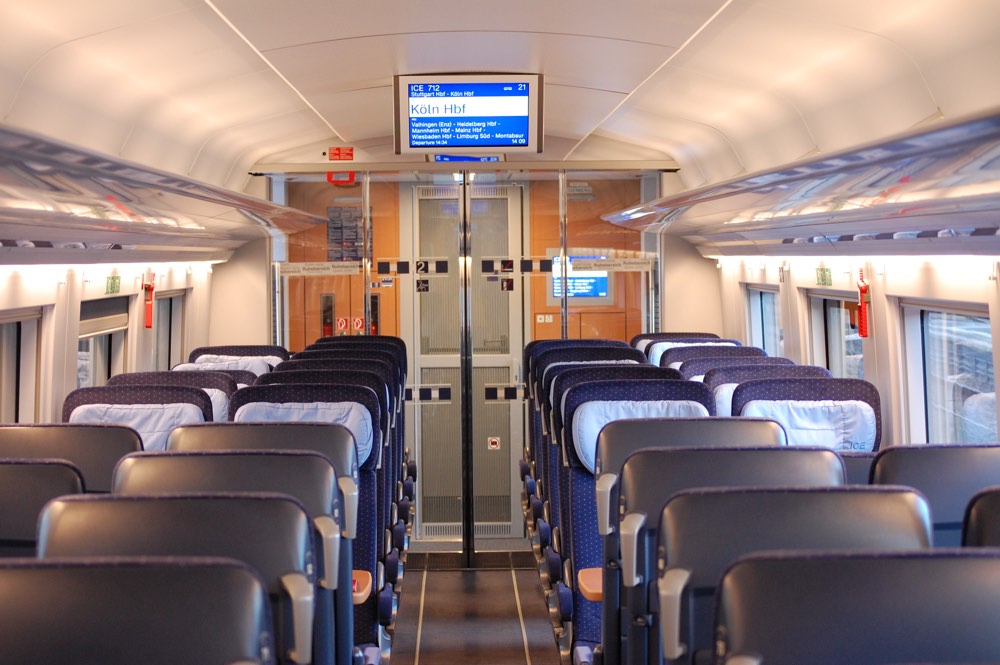 In-car display display arrives at Cologne Main Station
In-car display display arrives at Cologne Main Station
An announce of the information about the next stop will come shortly before arrival. If you miss the announcement (or just can’t understand it!), the sign on the platform will tell you where you are. If your train has an electronic display, the electronic display at both ends of the car will display the name of the upcoming stop as you approach. In addition, you will usually find a travel flyer near your seat that lists the scheduled stops and available connections for each trip and the onboard service. Make sure you are ready to jump off the train when it arrives at the destination – remember that at some sites, the train only stays for a minute or two. When the train enters your station, stand on a door and when the wheel stops, open the door and jump. Open the door and look for a handle or green button (as shown below). Both can be easily spotted.
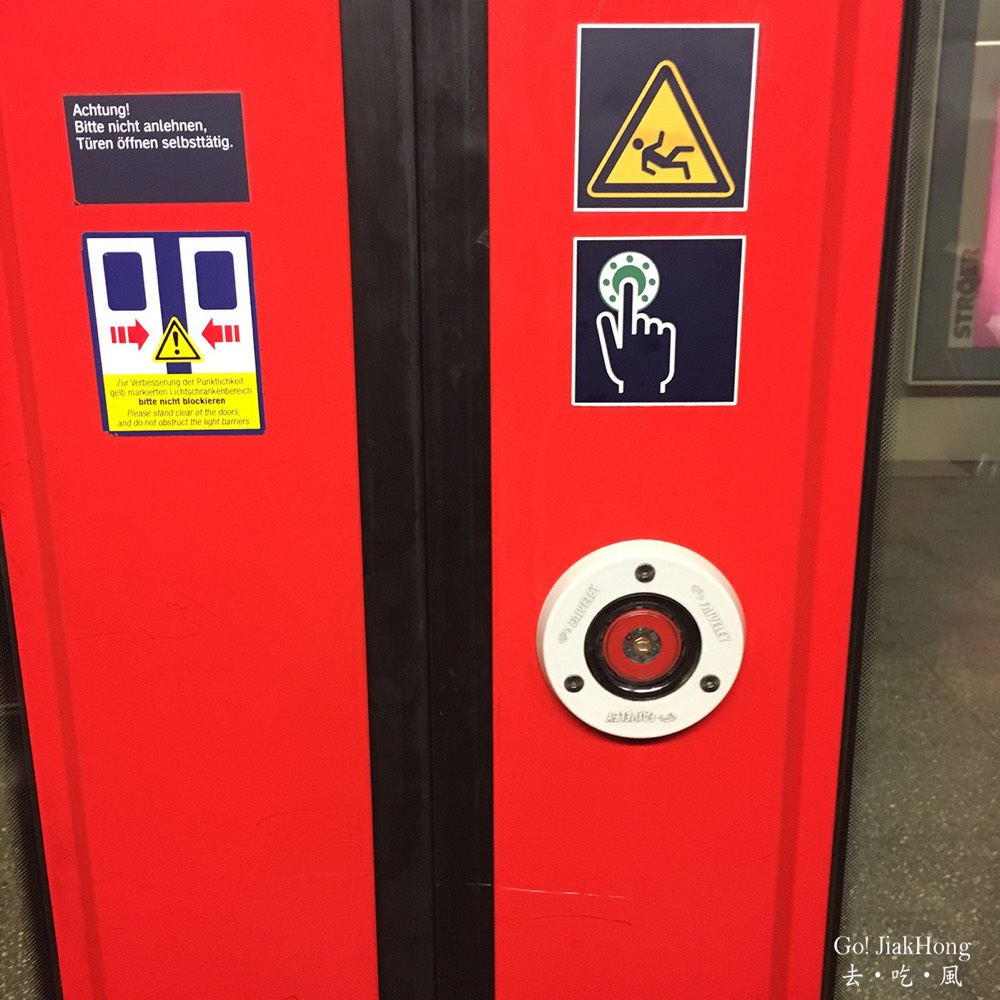

Door Button
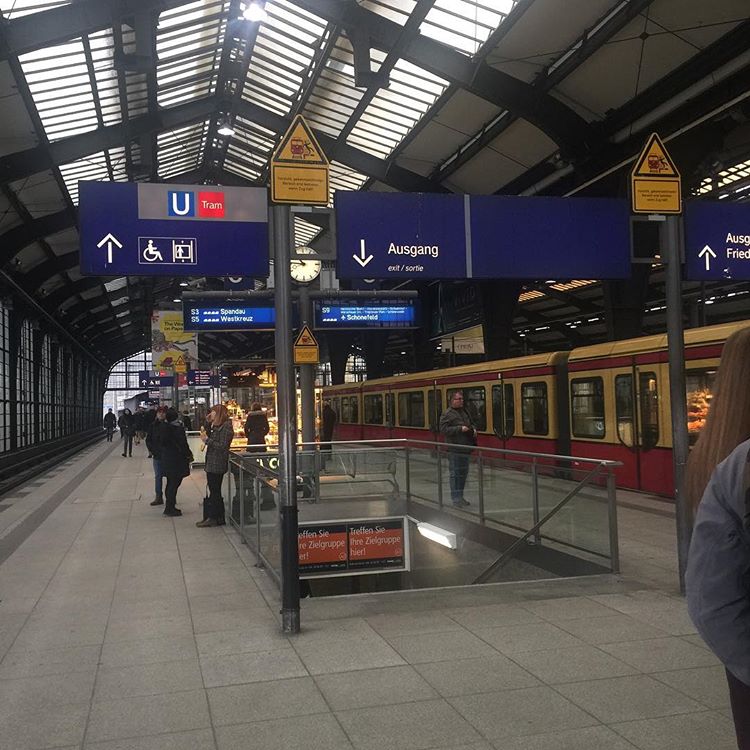
Berlin Hbf platform exit (Ausgang) sign
For sleepers and couchettes, the staff keeps your ticket and passport during driving, so you don’t have to wake up at night to check your ticket or passport. When you arrive at your destination, the staff will return your ticket and passport.
Shortly before arriving at the destination, the staff wakes you up. If you get off at the last stop of the line (which is usually the case), you will usually be allowed to get up longer, get ready and get off, especially if the train arrives before 7am.
After getting off the bus, leave the station according to the “Ausgang” sign. Large stations have multiple exits, so double check to make sure you are heading in the right direction. If you need to transfer, check the yellow timetable or the electronic board to find out which track your next train departs from and follow the signs that tell you to go to the station. When the train approaches each station, the connection information is usually also posted on the train. In many cases, you may only need to cross the platform to connect to the train.
Popular Routes
Domestic
- Frankfurt – Berlin
- Falkford – Cologne
- Frankfurt – Düsseldorf
- Frankfurt – Munich
- Frankfurt – Hannover
- Berlin – Dresden
- Hamburg – Munich
- Berlin – Munich
- Mannheim – Stuttgart
- Frankfurt Airport Station Fernbf – Munich
International
- Berlin – Amsterdam
- Frankfurt – Amsterdam
- Munich – Brussels South Station (Bruxelles Midi)
- Frankfurt – Brussels South Station (Bruxelles Midi)
- Munich – Zurich
- Frankfurt – Paris Nord Station (Paris Nord)
- Berlin – Prague
- Berlin – Warsaw
- Munich – Vienna
- Munich – Salzburg
- Hamburg – Copenhagen (famous ICE train ferry)
Sightseeing Train
Black Forest Line
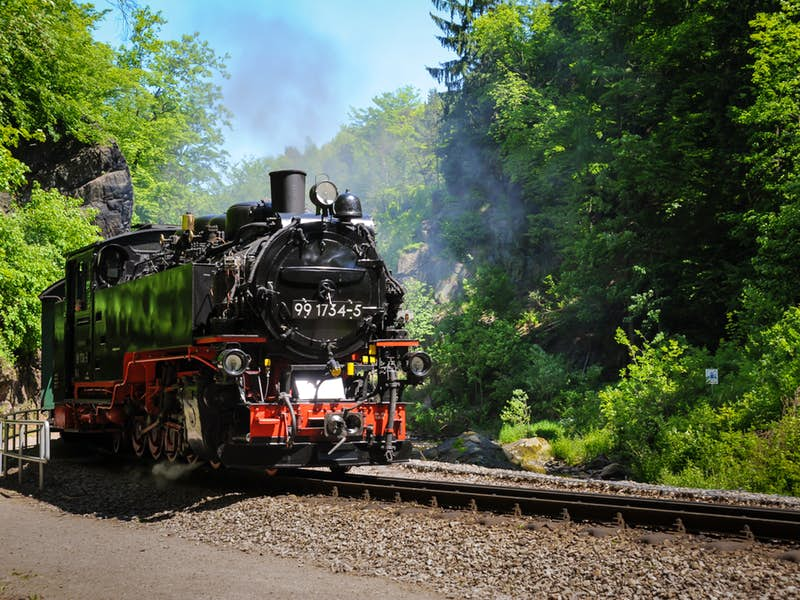
Black Forest Line (Offenburg-Konstanz)
Black Forest is fictional. This old forest in Germany is the backdrop and inspiration for Brothers Grimm’s fantasy. Germany has done a great job in the preservation of the forest and the rural lifestyle which is a defining feature of the Southwest region.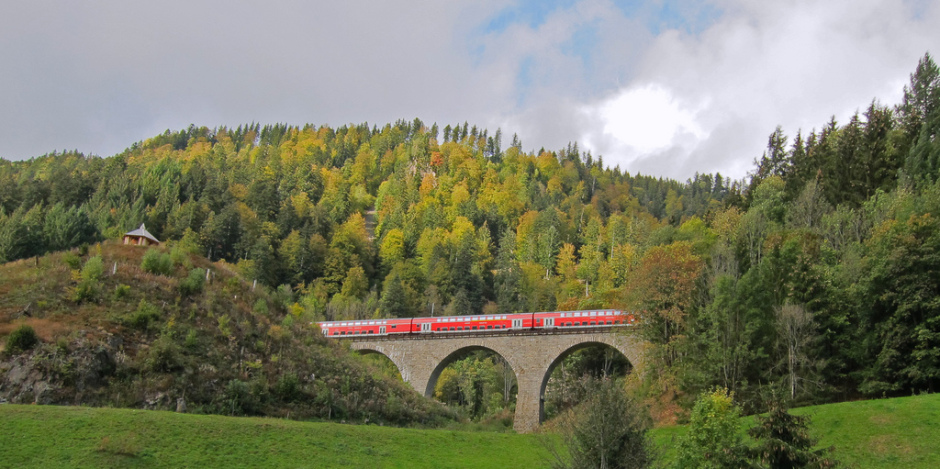
Black Forest Train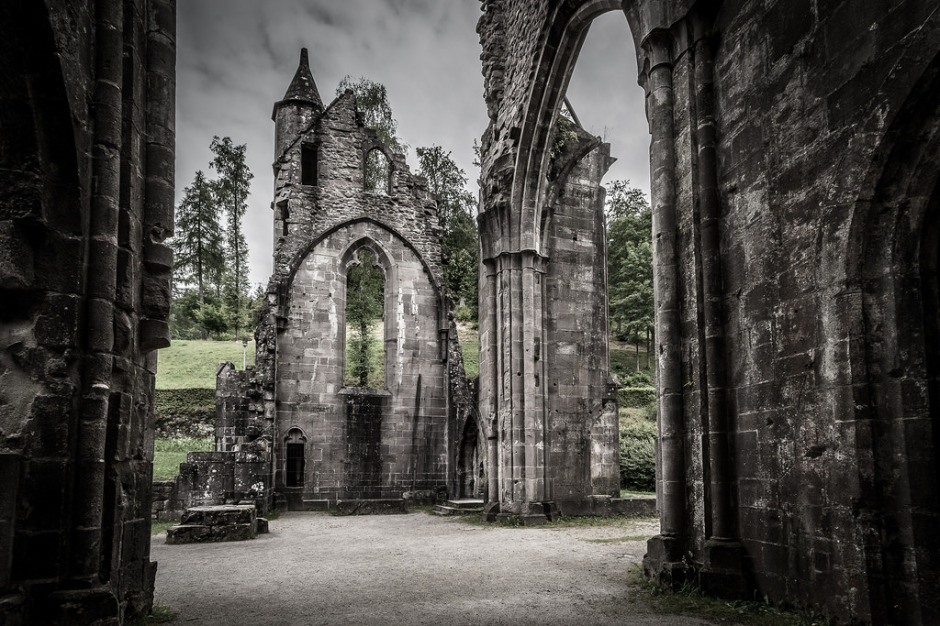
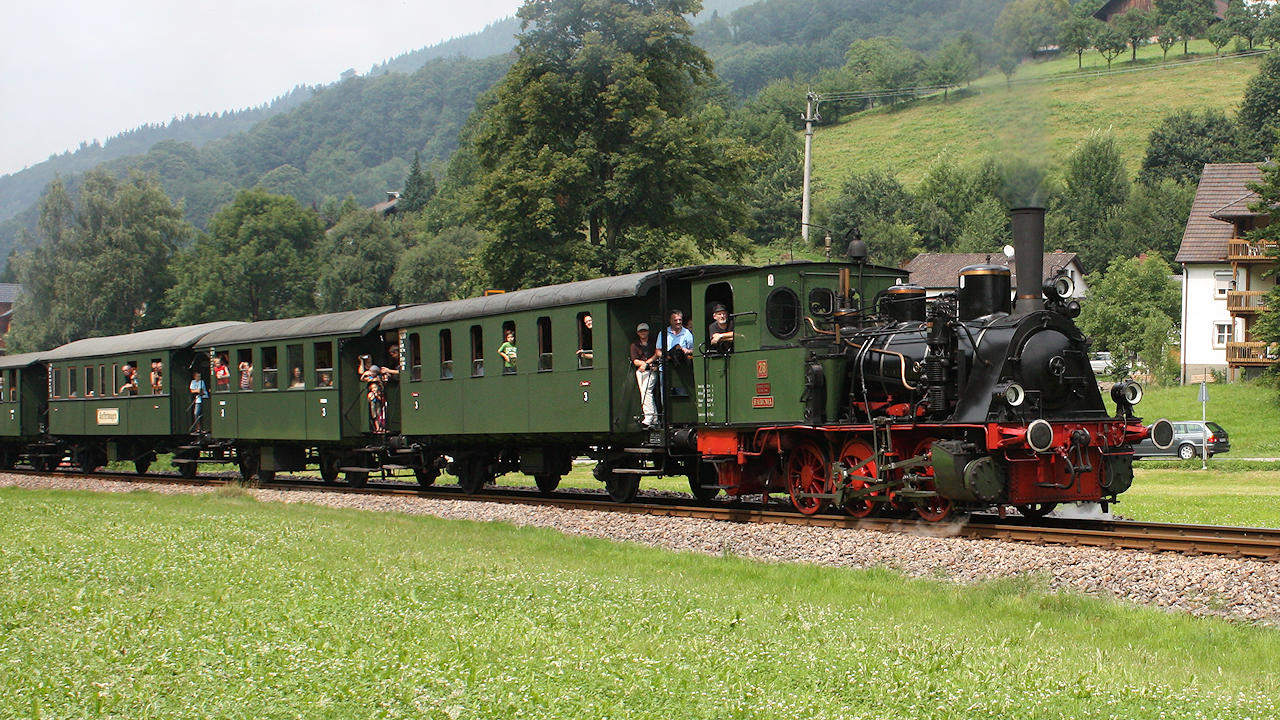 Black Forest Train
Black Forest Train
Rhine Valley Line Rhine Valley Line: Koblenz Hbf-Mainz Hbf
Rhine Valley Line: Koblenz Hbf-Mainz Hbf
This riverside tour connects some of Germany’s most historic villages, situated on the terraced hillside below the faintly visible medieval castle. The entire landscape is 100 kilometers long which is the longest among its German counterparts. Take your time and catch the “milk” train that stopped in all the villages along the way. The coolest part? You can jump off the train, take a boat or bus, and vice versa, use the same train ticket!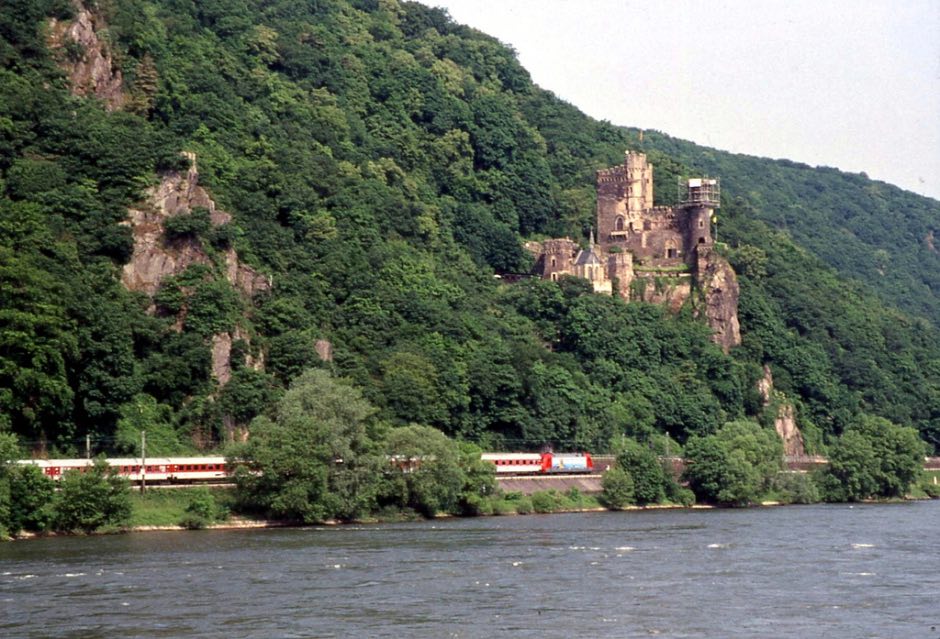
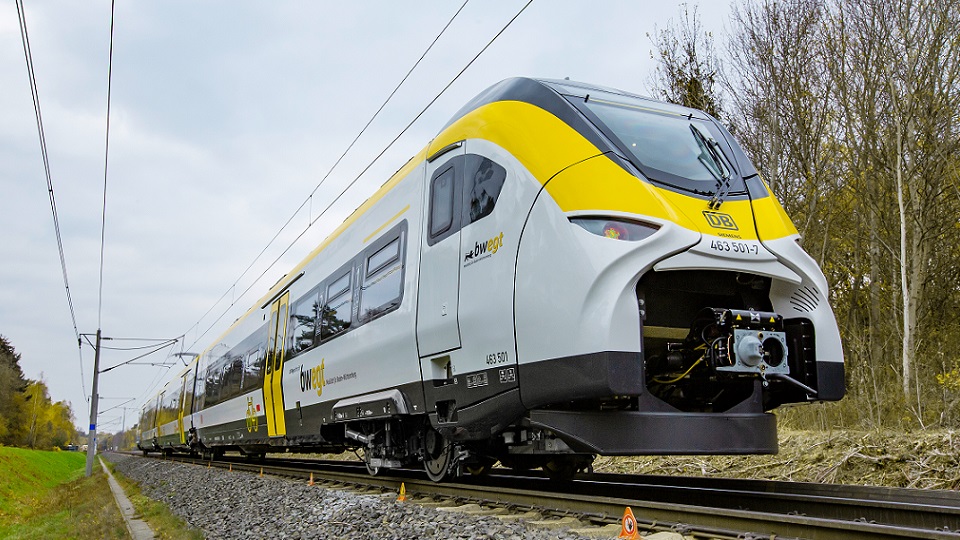 Rhine Valley Line
Rhine Valley Line
 Rhine Valley Line
Rhine Valley Line
Neuschwanstein Castle
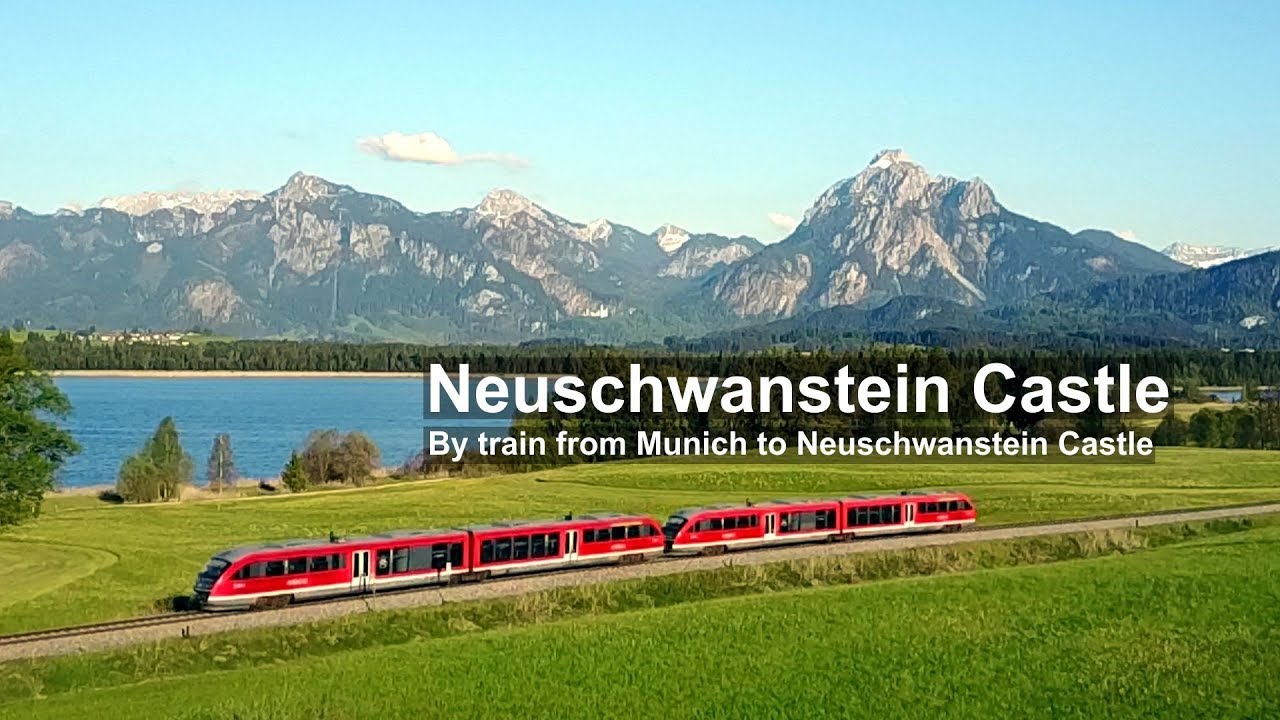 Neuschwanstein Castle: München Hbf-Füssen
Neuschwanstein Castle: München Hbf-Füssen
Neuschwanstein (German: Schloss Neuschwanstein, pronounced [nɔʏʃvaːnʃtaɪn], English: “New Swanstone Castle”; Southern Bavarian: Schloss Neischwanstoa) is a 19th-century Romanesque revival palace located in the rugged terrain above the Hohenschwangau village on hills near Fussen and Southwestern Bavaria, Germany. Ludwig II of Bavaria was the commissioner of the palace and it serves as a retreat and commemoration of Richard Wagner. Ludwig made use of personal wealth and fundraising campaigns rather than the Bavarian public fund to pay for the expenses.
The castle was designed as the home of the king until he died in 1886. It was opened to the public shortly after his death. Since then, more than 61 million people have visited Neuschwanstein. More than 1.3 million people visit each year and the number can go up to 6,000 in the summer.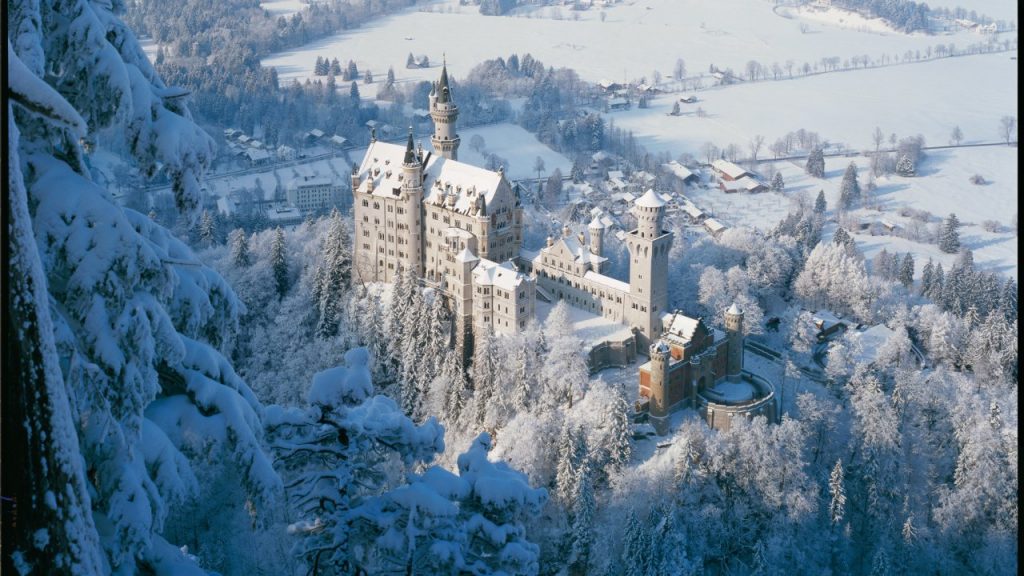
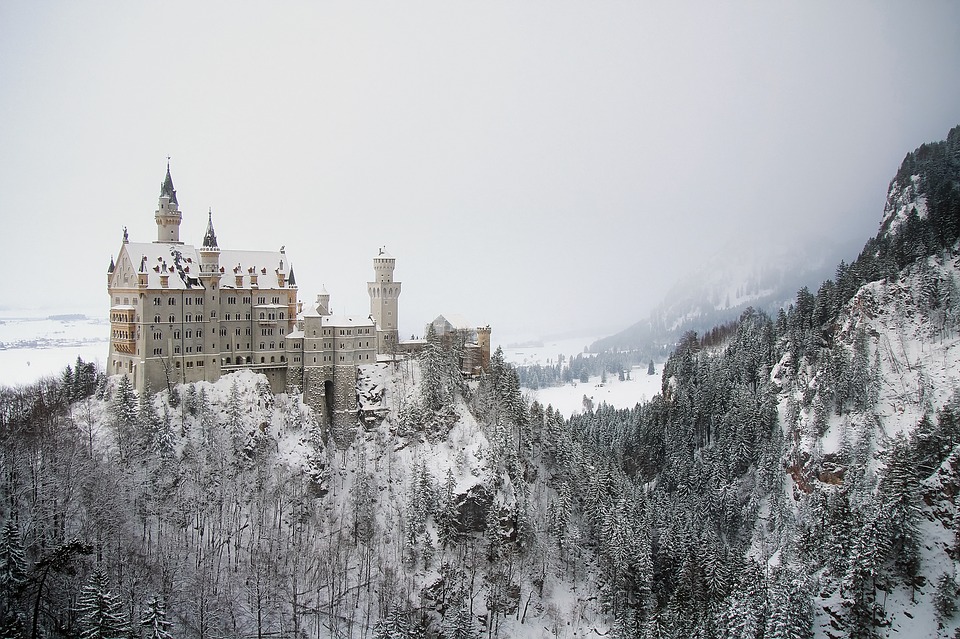 Neuschwanstein Castle in Winter
Neuschwanstein Castle in Winter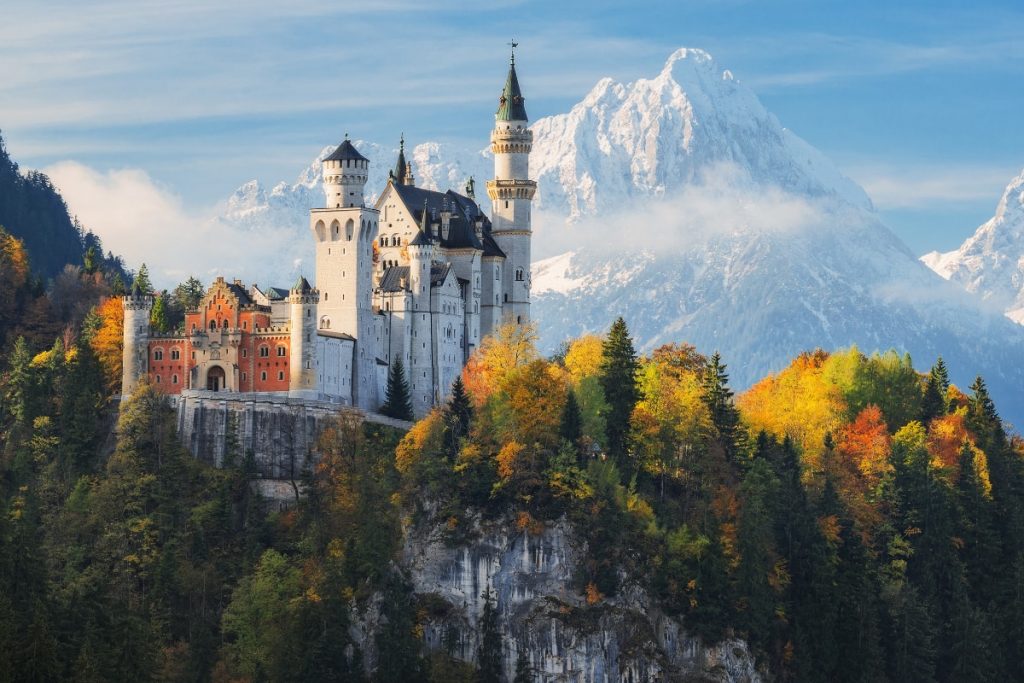
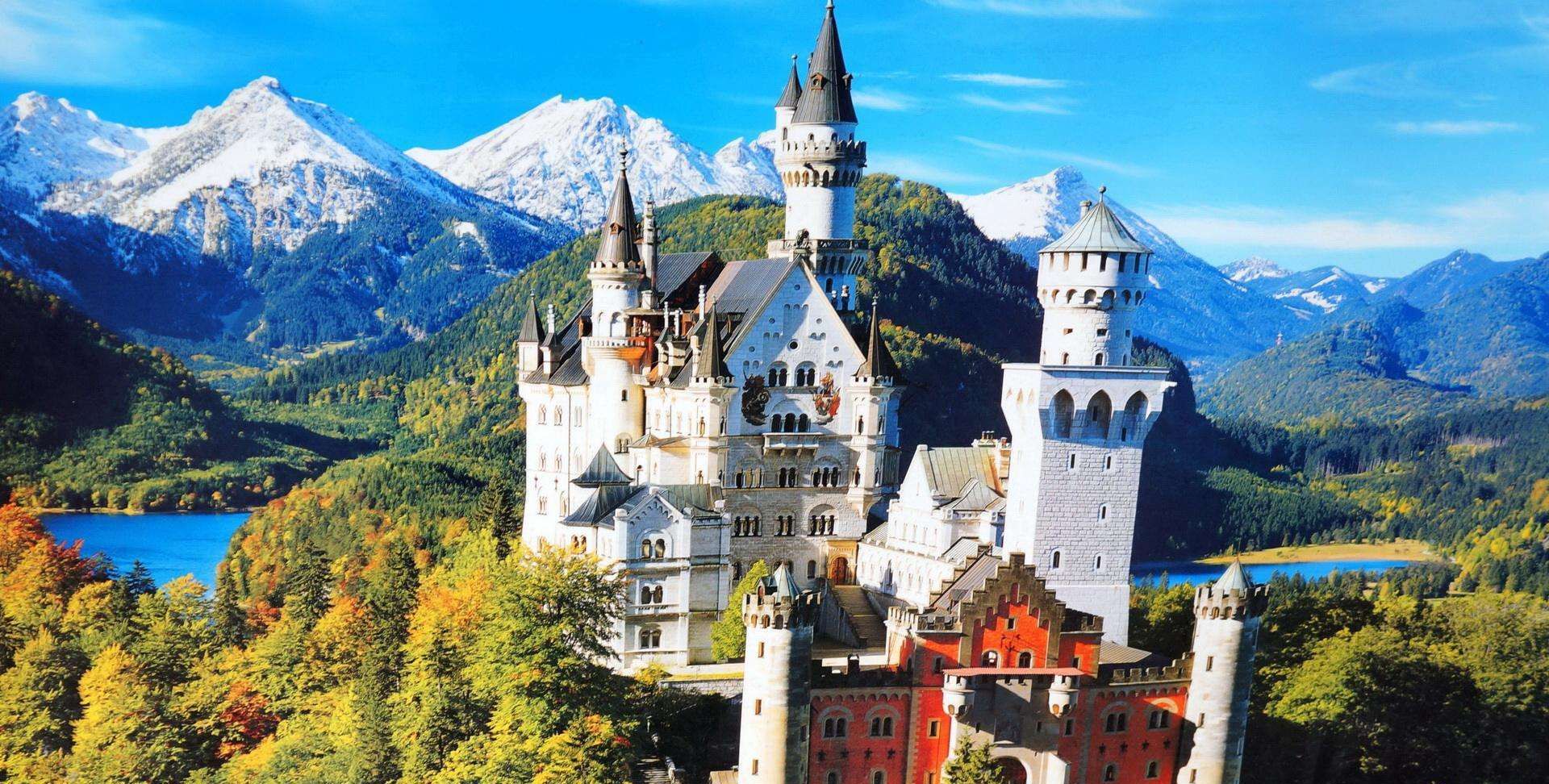 Neuschwanstein Castle in Autumn
Neuschwanstein Castle in Autumn
Local Transportation 
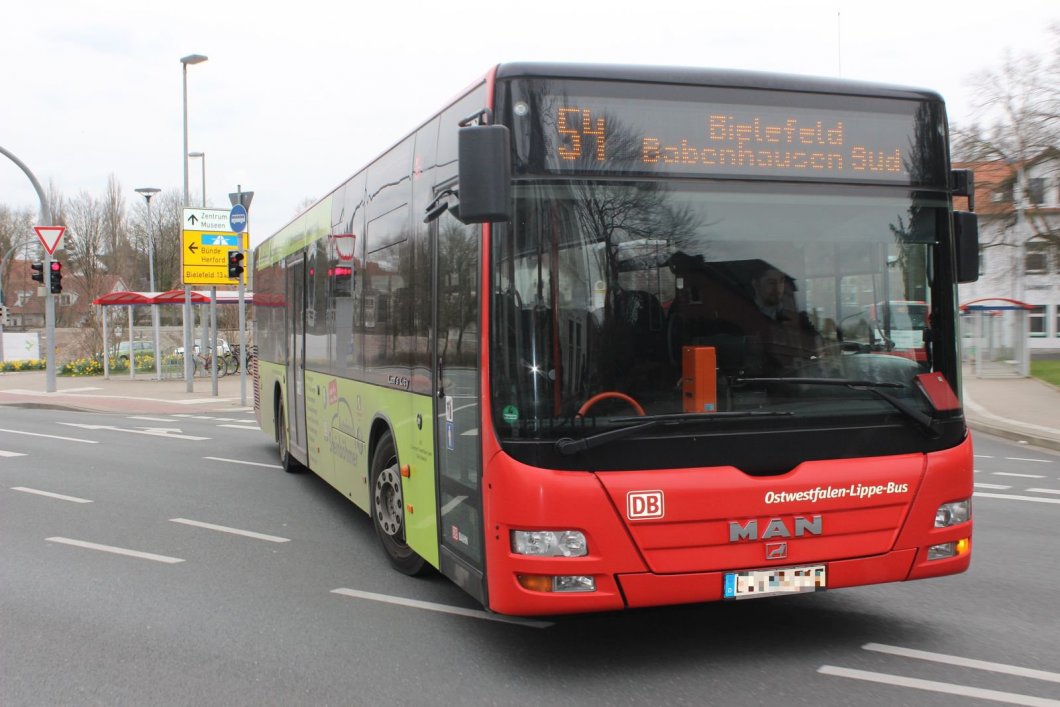 DB Bus
DB Bus
DB operates regional bus services (Bahnbus) in a few areas that little or no rail service. Most of these routes depart from the Zentralomnibusbahnhof (ZOB) or the central bus station, usually near the train station. DB also operates KD cruise services from Cologne to Mainz along the Rhine River. Rail tickets and passes apply to both services.
German Railway Glossary
| English | Geman | |
|---|---|---|
| Hard Sleeper | Couchette | |
| Soft Sleeper | Sleeper | |
| Railway | Eisenbahn | |
| Ticketing booth | Fahrkartenschalter | |
| From | Von | |
| To | Zu | |
| Destination | Ziel | |
| Time | Zeit | |
| Gate | Geis | |
| Washroom | Toilette | |
| Push | Drücken | |
| Pull | Ziehen | |
| Entrance | Eingang | |
| Exit | Ausgang | |
| Class | Klasse | |
| Car | Wagen | |
| Seat | Sitz |
Railway guides all around the world
Search and book railway tickets online at: www.g2rail.com
Search and book railway tickets with Xmove App
.png)
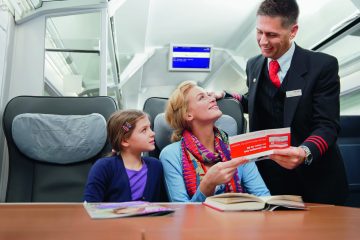
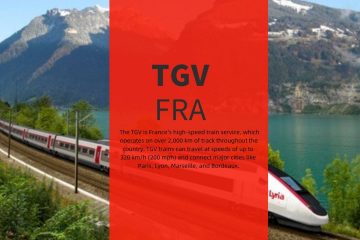
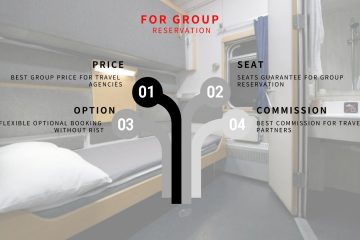
0 Comments